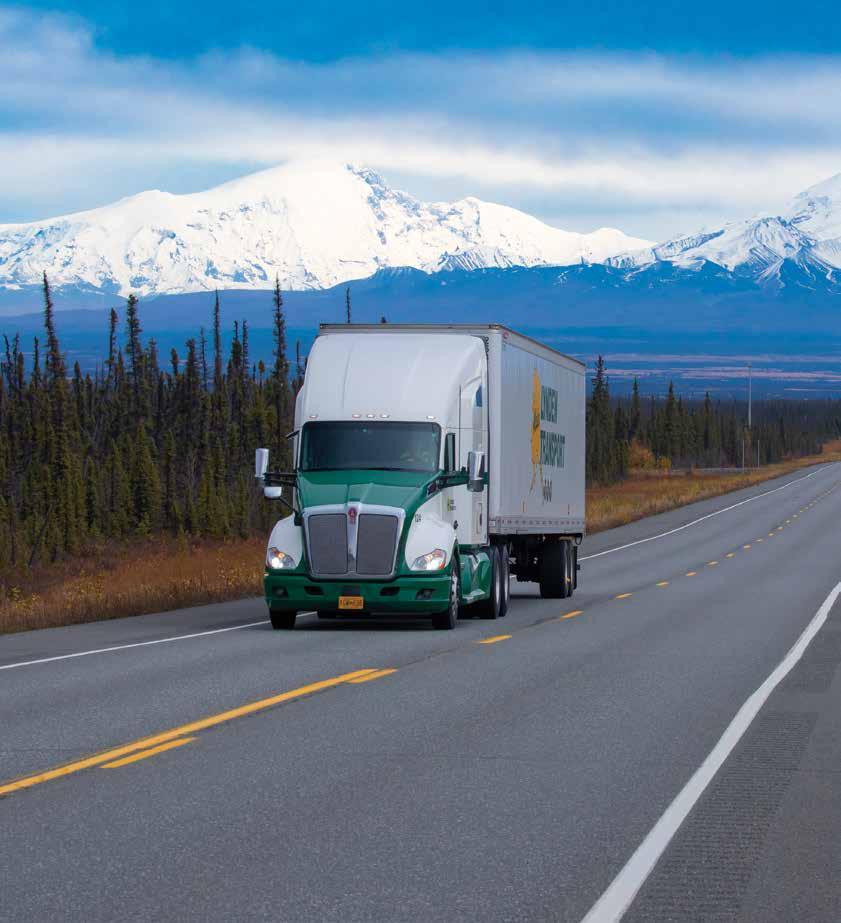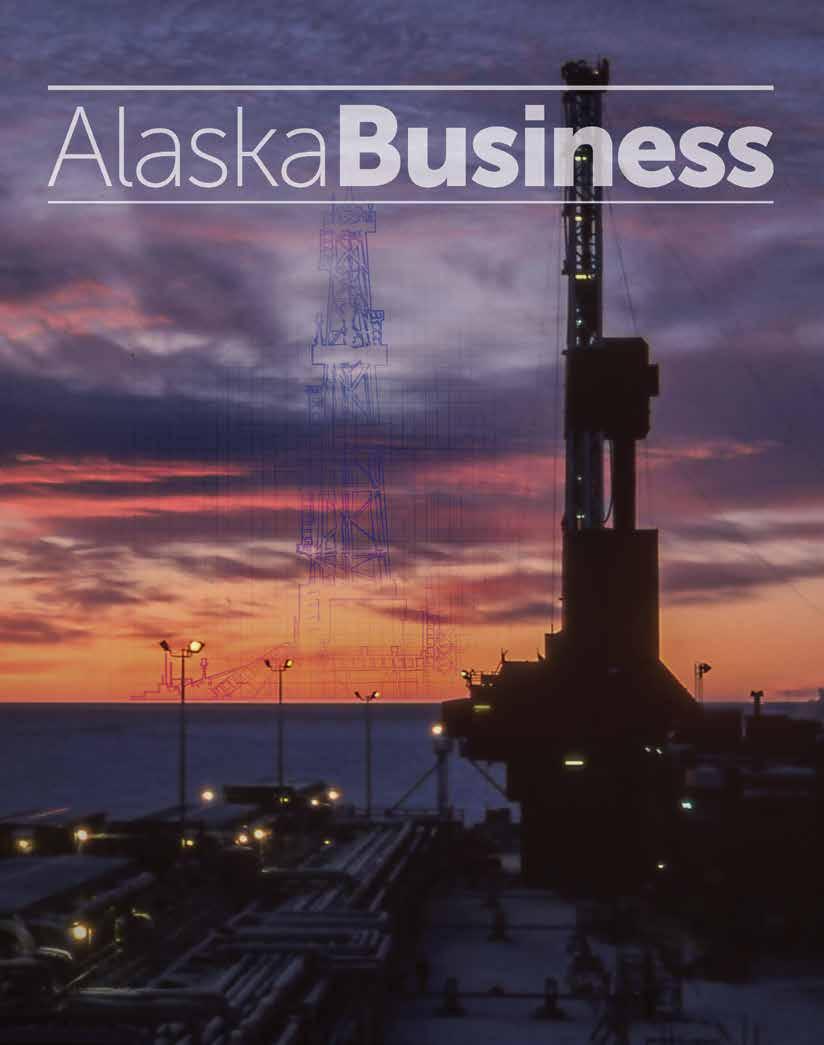

GREAT ExPECTATIONS
OIL & GAS BUILDING MOMENTUM






•
• Best attachment lengths
• Best transpor tability
• Best ser viceability




• Best accessibility with flat deck
• Best distributor and factor y support
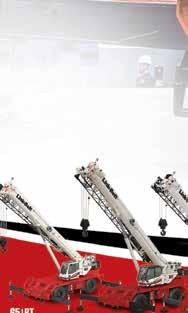






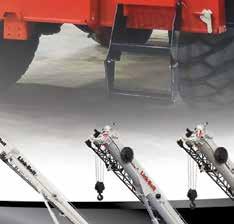









Unlocking More Oil and Jobs on State Lands
At Santos, we are proud to develop the world-class Pikka Project on Alaska’s State Lands - creating more revenue and more jobs for Alaskans.
Pikka is unlocking 400 million barrels of Alaska’s oil. It has already created thousands of construction jobs and will provide hundreds of permanent jobs.
This is just the beginning. By next year, 80,000 barrels per day will be added to the Trans Alaska Pipeline System. Santos is building the future of energy in Alaska.



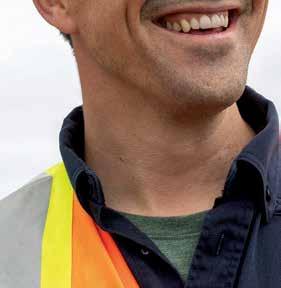


Tracy Barbour
Kvapil


Jamey Bradbury
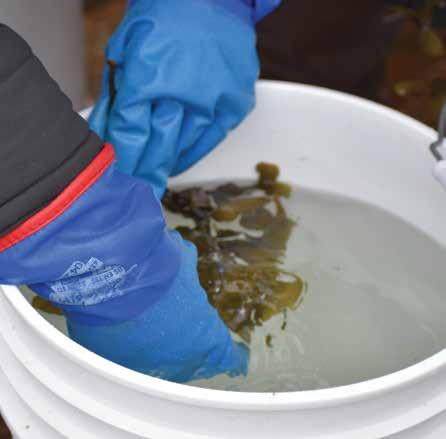


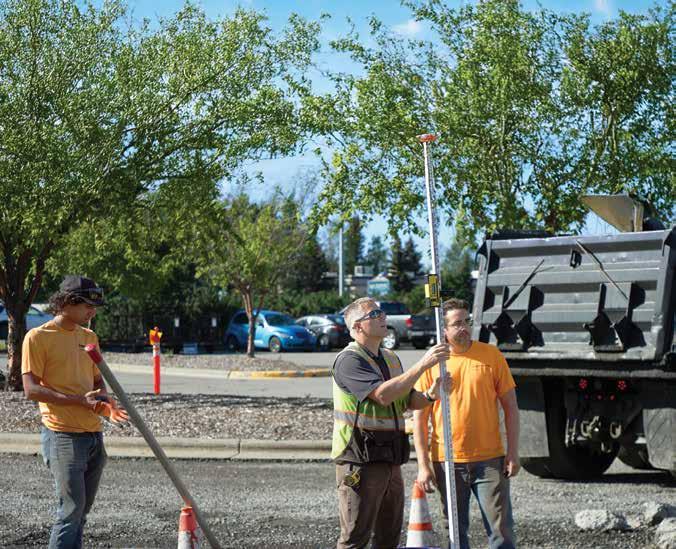
“Whenever we have a need — whether it’s lending or payroll — First National knows who we are, they solve our challenge, and we get back to running our business.”
– Tim Schrage
Tim and Jen Schrage started Signature Land Services with a dirt lot and a big vision. With customized solutions from First National, they’ve expanded to a larger, more secure facility – equipped for growth and built to last. Every step of the way, their banker delivered more than financing –First National provided unmatched expertise and a relationship the Schrages could count on.
CONTENTS
SPECIAL SECTION: OIL & GAS
64 PUMPING UP THE VOLUME
New North Slope production already boosting TAPS throughput
By Rindi White
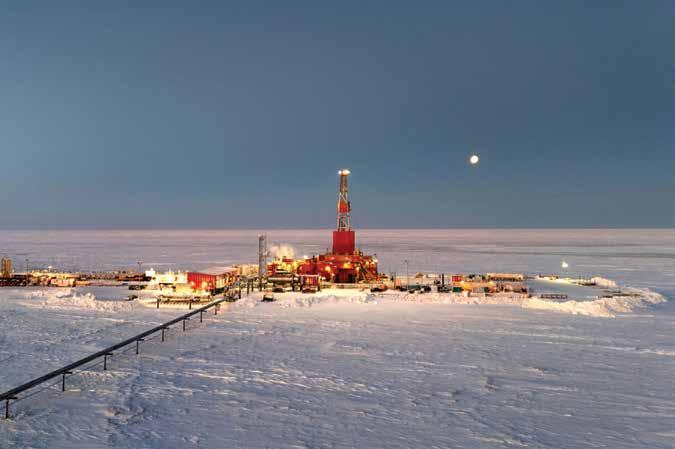
72 THE LONG GAME
Multiple rolls of the dice for Alaska’s next discoveries
By Alexandra Kay
78 CONNECTING THE ARCTIC
Perseverance, creativity, and teamwork to supply the Slope By
Vanessa Orr
ABOUT THE COVER
86 EQUIPPED TO SERVE
Parts and support for industrial customers By
Terri Marshall
The cover of the February 2002 issue of Alaska Business featured a photo of the Alpine Field Module F-1, which heated crude oil to separate water and gas before the oil began its journey through the Trans Alaska Pipeline System. The image by photographer Aaron Weaver was in many ways a new view of an Alaska oil field, so it was reprinted repeatedly in other publications after it graced our cover. This month, we are featuring another Aaron Weaver photo from that 2001 photoshoot, with a drill rig envisioned just on the horizon. Alaska still benefits from its legacy fields, which set the foundation for oil and gas development today and into the future.
Photograph by Aaron Weaver
90 BOOMS & BUSTS
The ‘80s crash, the 2014 crisis, and what comes next By Tasha Anderson
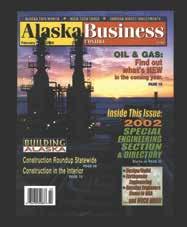




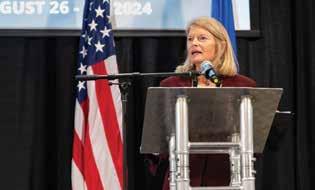










Photos by Red Photography
FROM THE EDITOR
Alaska has fundamentally changed since oil was discovered at Prudhoe Bay, and, in line with the oil industry’s overwhelming influence, it was an essential player in this magazine’s origin story.
The masthead in our inaugural January 1985 issue listed two editorial employees: publisher Robert F. Dixon and editor Paul Laird. In that issue, the two co-wrote an introductory letter, but Laird didn’t start a monthly Letter from the Editor until November of 1987, at which point his title had shifted to executive editor.
In that first Letter from the Editor, Laird explained that he had a friend who worked for Sohio, officially titled the Standard Oil Company (Ohio), in Alaska, and since Laird was in search of a travel destination that was both “bizarre” and housed someone he knew so he could rely on them for accommodations, Alaska fit the bill.
Laird knew little about the state except that it was supposed to be beautiful and “it was a darned shame they had to build that oil pipeline and destroy the wilderness up here. I only knew that because the Wilderness Society magazine tucked in my carry-on said so.”
He was right about Alaska’s stunning scenery; Laird was “awestruck” by the Alaska Range and Chugach Mountains, by his travels to Portage and Valdez. The pipeline, however, was a let-down.
Laird wrote, “Maybe I was expecting a ruthless metal behemoth gnawing its way through what once was wilderness. A mile-wide swath on each side, carcasses of wild animals floating in oil seeps. Like many others I’ve talked to since then, I guess I was expecting something more—something proportional to the furor it had caused. Anything but a rather indistinct 48inch steel pipe that’s mostly buried and almost indistinguishable from a distance where it isn’t.”
Laird’s letter describes how the trip “altered his framework” and set him on a path to call Alaska his home and learn more about not just the oil and gas industry but the many major industries that have built Alaska. “Lots of myths upon which I’d based my philosophy of life up to that point have evaporated in the months, the years since then.”
Now that I occupy Laird’s position, I can relate to how learning more about Alaska’s economy is eye-opening, even though I was raised here, surrounded by Alaska’s glory. Despite my thirteen years researching and writing about Alaska, there’s still so much more for me to learn. What I do know is our state is rich in resources—not the least of which are stories of exceptional Alaskans doing fascinating things.

Tasha Anderson
Editor,
VOLUME 41, #8
EDITORIAL
Tasha Anderson, Managing Editor
Scott Rhode, Editor/Staff Writer
Rindi White, Associate Editor
Emily Olsen, Editorial Assistant
PRODUCTION
Monica Sterchi-Lowman, Art Director
Fulvia Caldei Lowe, Production Manager
Patricia Morales, Web Manager
BUSINESS
Billie Martin, President
Jason Martin, VP & General Manager
James Barnhill, Accounting Manager
SALES
Charles Bell, VP Sales & Marketing 907-257-2909 | cbell@akbizmag.com
Chelsea Diggs, Account Manager 907.257.2917 | chelsea@akbizmag.com
Tiffany Whited, Marketing & Sales Specialist 907-257-2910 | tiffany@akbizmag.com
CONTACT
akbizmag.com | (907) 276-4373
Press releases: press@akbizmag.com
Billing: billing@akbizmag.com
Subscriptions: circulation@akbizmag.com
alaska-business-monthly
akbizmag
AKBusinessMonth
AKBusinessMonth
Alaska Business (ISSN 8756-4092) is published monthly by Alaska Business Publishing Co., Inc. 501 W. Northern Lights Boulevard, Suite 100, Anchorage, Alaska 99503-2577; Telephone: (907) 276-4373. © 2025 Alaska Business Publishing Co. All rights reserved. No part of this publication may be reproduced without written permission from the publisher. Alaska Business accepts no responsibility for unsolicited materials; they will not be returned unless accompanied by a stamped, self addressed envelope. One-year subscription is $39.95 and includes twelve issues (print + digital) and the annual Power List. Single issues of the Power List are $15 each. Single issues of Alaska Business are $4.99 each; $5.99 for the July & October issues. Send subscription orders and address changes to circulation@akbizmag.com. To order back issues ($9.99 each including postage) visit simplecirc.com/back_issues/alaska-business.


Economic Impact of the Nonprofit Sector
Leveraging public and private resources
By Tracy Barbour
Nonprofits play a vital role in Alaska's economy, serving as employers, revenue generators, and providers of essential services. These insights are detailed in The Foraker Group’s latest report, Alaska’s Nonprofit Sector: Generating Economic Impact. This is the seventh such study released by The Foraker Group, a 501(c)(3) organization that strengthens Alaska's nonprofit and tribal organizations through educational opportunities, shared services, organizational development, public policy, and fiscal sponsorship.
Laurie Wolf, Foraker Group president and CEO, views nonprofits as “the backbone” of Alaska’s economy. Their contributions often go unnoticed, yet their impact is pervasive. “You can't go through your day in rural or urban Alaska without engaging with a nonprofit. Even when
you don't know it; it's just part of your everyday life,” Wolf explains.
Although most people don’t think of nonprofits as economic powerhouses, they are an important “safety net,” according to the Foraker Group report. “No industry in Alaska can prosper without the nonprofit sector, and every dollar invested in the sector, regardless of the source, results in lower government costs in the long run,” the report emphasizes. “We provide both a financial and social return on investment by leveraging public and private resources.”

oil and gas industries. And they offer a wide variety of essential services like early childcare, housing, food security, and firefighting. As highlighted in the report, nearly forty communities depend on stand-alone nonprofit volunteer fire departments; about thirty nonprofit libraries operate across the state; and 75 percent of Alaskans receive their electricity from a nonprofit cooperative utility.
Nonprofits in Alaska engage in various sectors, including the healthcare, utilities, fisheries, and
And nonprofits help other nonprofits. Take, for instance, the Anchorage-based Rasmuson Foundation. The private family foundation invested approximately $23 million in fifty-five communities in 2024, according to President and CEO Gretchen Guess. Since its inception seventy years ago, Rasmuson Foundation has awarded more than $550 million in grants. “We have now
Laurie Wolf
The Foraker Group
given away, in grants, more than Jenny and Elmer, our two founders, put into the foundation,” Guess says.
Guess enjoys collaborating with other nonprofits, communities, tribes, and other entities to provide solutions throughout the state. “We feel blessed by the work we get to do, supporting people doing great work on the ground,” she says. “I think all Alaskans know that we wouldn't be functioning as a community without our nonprofits.”

Key Findings
Released in December 2024 and sponsored by Credit Union 1, The Foraker Group’s economic impact report shares a wealth of information about how nonprofits participate in and bolster the state’s economy. The report is based on extensive research—including some hardto-find data—conducted through various state and federal sources. Its goal is to better inform policy makers and the private sector about Alaska’s nonprofit sector.
In the report, The Foraker Group addresses what it considers misconceptions about nonprofits. For example, when most Alaskans think about nonprofits, they focus on the 501(c)(3) or charitable organizations with missions that improve the community and people’s daily lives. And while 80 percent of the state’s nonprofits are charitable— including religious congregations, human services, education, and healthcare organizations—many
“No industry in Alaska can prosper without the nonprofit sector, and every dollar invested in the sector, regardless of the source, results in lower government costs in the long run.”
LET’S GET DOWN TO BUSINESS
• Bill Pay to automate regular payments
• Merchant Services to accept debit or credit cards
• Positive Pay to help prevent check fraud
• Business Remote Deposit to save you time
Call 877-646-6670 or visit globalcu.org/business to talk to a specialist today!

Insured by NCUA
Gretchen Guess Rasmuson Foundation
Alaska’s Nonprofit Sector: Generating Economic Impac t, The Foraker Group
A rendering of the kitchen incubator planned for the Mountain View neighborhood, where earlystage food businesses can access preparation space and affordable storage. Construction is anticipated in 2027.

other types of nonprofits contribute significantly to the economy.
“It is also true that no sector is either all nonprofit, for-profit, or government,” says Wolf. “It takes all three sectors to make our economy work.”
The report highlights nonprofits’ contributions to the economy on their own and through support for the state’s major for-profit industries, stating, “From associations engaging in the policy-making process to economic development agencies promoting jobs and workforce development, nonprofits contribute to the vitality of commercial enterprises.”
The nonprofit Anchorage Community Land Trust (ACLT), for example, prepares entrepreneurs and small business owners to become leaders, wealth builders, advocates, and employers in their own neighborhoods. ACLT’s flagship Set Up Shop program provides training, technical assistance, lending, and real estate support to business
owners in targeted low-income neighborhoods of Anchorage. “We work intentionally with people and in neighborhoods that have been traditionally underestimated and overlooked,” says CEO Kirk Rose.
As an extension of Set Up Shop, ACLT recently received a $300,000 grant from KeyBank to build a new commercial kitchen incubator in the Mountain View neighborhood next year. The project—which Rose has spent seven years researching— will provide affordable storage and preparation space for early-stage food businesses. The kitchen, he says, will offer a safe space where caterers, food truck owners, and others can learn and “grow into the next step.”

will provide a shared space for food businesses to grow,” says Lori McCaffrey, KeyBank President, Alaska Market and Commercial Banking Sales Leader, who also serves on ACLT’s board. “In addition, it will improve food security by providing more access to more locally grown and packaged goods. At KeyBank, our mission is to help our neighbors and community thrive, and ACLT is accomplishing that through meaningful projects like this.”
Other Interesting Insights
A longtime supporter of ACLT, KeyBank is enthusiastic about the development of the commercial kitchen incubator. “This project
The economic impact report also highlights the role of Alaska Native tribes as nonprofits. Although tribes are sovereign governments, the Internal Revenue Service (IRS) allows them to create separate entities that qualify for nonprofit status, according to the report. At one point, all Alaska tribes held this dual status, but as of 2023, only nine were registered with the IRS as nonprofits. Regardless, these entities serve missions like healthcare, economic
Anchorage Community Land Trust
Kirk Rose Anchorage Community Land Trust
and community development, local search and rescue, education, support for Indigenous ways of life and culture, and advocacy for traditional food harvesting and sovereign rights. “Tribes and Alaska Native-serving nonprofits and coalitions play a vital role in the well-being, advancement, and sovereignty of Alaska’s Indigenous communities,” the report notes.
Regarding volunteering, Alaska’s rate exceeds the US average and ranks fifth in the nation, according to the report. Donations to the Permanent Fund Dividend charitable contributions campaign, Pick.Click. Give.—for which The Foraker Group wrote the original legislation— have increased about 4 percent annually over the past decade. Wolf isn’t surprised. She says, “We know that when Alaskans are given an opportunity to support the things they love—and if we make it easy for them—they will.”
In addition, Wolf points out that Alaska’s volunteerism rates are high, in part, because most nonprofits have little or no staff; volunteers operate and govern most of their organizations. Seventy-nine percent of Alaska nonprofits are run solely by volunteers. In Alaska, volunteers donate a cumulative 5 million hours annually, at an estimated economic benefit of $9.5 million.
However, the COVID-19 pandemic triggered changes among employees and volunteers. “We saw the Great Resignation and then the Great Reshuffle in our workforce,” Wolf says. “And now we are seeing that in our board rooms; people are really thinking about what's most
“As business and philanthropic interests increasingly look for climate-aware, socially resonant investments, ASLC represents a model where public trust and economic value reinforce each other.”
John Fraser, Director of Mission Impact, A laska SeaLife Center









The Alaska School Activities Association is a statewide nonprofit organization established to direct, develop and support Alaska's high school interscholastic sports, academic and fine arts activities. ASAA has over 200 member schools, over 35,000 student participants, and manages 52 championships!


ASAA can put the spotlight on your business in front of 100,000+ Alaskans at dozens of amazing high school championship events!

If you would like to join the team and support students throughout Alaska during our 2025-26 interscholastic championships, please scan the QR code to contact Colin McDonald, Director of Marketing.






“We feel blessed by the work we get to do, supporting people doing great work on the ground… I think all Alaskans know that we wouldn't be functioning as a community without our nonprofits.”
Gretchen Guess President and CEO Rasmuson Foundation
important in their lives and how they want to spend their free time. And so we are starting to see a lot of shifting in our board spaces. And I encourage our nonprofits to engage their existing teams to create meaningful opportunities for new and seasoned people to volunteer.’”
Additionally, nonprofits continue to be a “steadying force” that amasses “reliable revenue” for Alaska’s economy. Alaska’s nonprofits accounted for $9.4 billion in revenue in 2023, an increase of 19 percent from 2020. The greatest increase was in 501(c)(3) and 501(c)(1) organizations. “Organizations with a 501(c)(4) designation experienced a 20 percent decrease in revenues from 2020, likely a result of the conclusion of federal pandemic relief spending,” the report notes.
Impact on Employment and Beyond
Nonprofit organizations are consistently a substantial source of jobs. In 2023, there were more than 5,600 tax-filing nonprofits in Alaska, a number that has remained stable over the past decade. Roughly one fourth of those, or 1,211, had employees in 2023. “It’s a small number of organizations employing a lot of people, and healthcare, for sure, is driving that conversation,” Wolf says. The largest non-government employer in the state is Providence Alaska with more than 5,000 workers on its payroll, and Alaska Native Tribal Health Consortium, Southcentral Foundation, and Foundation Health Partners in Fairbanks each have well over 1,500.
According to the report, nonprofits directly employ 35,302 Alaskans. Counting indirect and induced effects, nonprofits are responsible for sustaining 54,942 jobs in the state through the purchase of goods and services and employee spending. These jobs generate $3.8 billion in income, which impacts local communities.
In Alaska’s regional economies, nonprofits often play a crucial role. They employ about 14 percent of the non-government workforce and 10 percent of the total workforce, compared to 10 percent nationwide. In rural areas, mission-based organizations can account for up to 40 percent of direct employment.
In Seward, for instance, the nonprofit Alaska SeaLife Center (ASLC) has a profound impact. It’s the only institution in Alaska that combines public visitation with federally authorized marine mammal response and long-term scientific research, according to ASLC President and CEO Wei Ying Wong. “While not atypical among major coastal zoos and aquariums, it is the sole provider of these types of action for Alaskan species globally, and the only institution that can provide support for animals like walrus, northern sea otters, ice seals, and the unique support needs of Alaska’s birds that require seawater as part of their recovery,” Wong says.

ASLC employs eighty-five full-time, year-round staff, plus twenty-four seasonal workers. ASLC paid staff
Wei Ying Wong Alaska SeaLife Center
$5,971,196 in total wages in the fiscal year ending September 30, 2023, the most recent IRS report on file. According to revised figures for 2024, ASLC estimates its financial impact in five key areas:
x Direct annual ASLC spending to the City of Seward or Seward businesses: $2 million
x Direct annual ASLC salaries into Seward: $5.7 million
x Wage value of indirect jobs created by count of primary visitors to Seward: $4.7 million
x Wage value of induced jobs from ASLC salaries in Seward: $2.4 million
x Visitor spending (day/overnight) for those who came primarily to Seward for ASLC: $3.3 million
For the City of Seward, a gateway to Kenai Fjords National Park and other tourists attractions, the estimated total primary visitor impact was $18.1 million in 2024. Secondary visitors to ASLC—where ASLC wasn’t their primary reason for visiting—spent an estimated $28 million in Seward.
The total ASLC-related economic impact on Seward for 2024 was $46.1 million. Additional benefits to Anchorage ($2.8 million), elsewhere in Alaska ($0.5 million), and outof-state travelers ($2.5 million) bring the total economic impact to Alaska to $51.9 million.
ASLC is a powerful case study in how mission-driven institutions can deliver layered economic and social returns, according to ASLC’s Director of Mission Impact John Fraser. “Our impact measures demonstrate that the Alaska SeaLife Center is not just an aquarium—it’s a hybrid institution
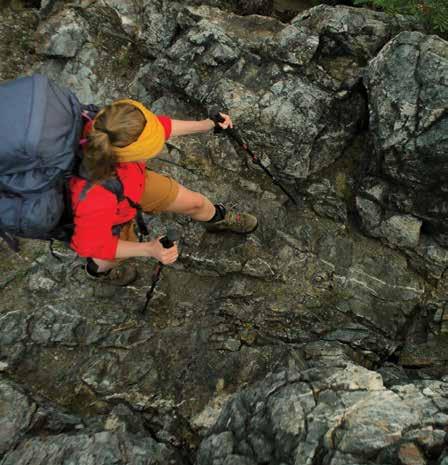

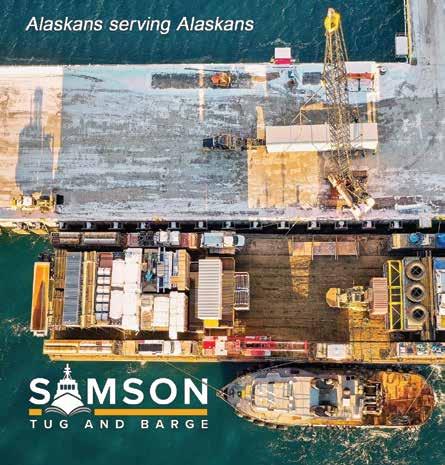
SOREL PATAGONIA UGG BIRKENSTOCK DANSKO

that merges tourism, research, education, and disaster response,” says Fraser, who has led national research on the social value of zoos and aquariums. “It generates positive economic impact beyond industry standards while building longterm resilience for Alaska’s coastal economies through its voice, role modeling, and extraordinary media reach. As business and philanthropic interests increasingly look for climateaware, socially resonant investments, ASLC represents a model where public trust and economic value reinforce each other.”
Fickle Finger of Federal Funds
Nonprofits rely on multiple funding sources to achieve their mission, including earned income, private donations, and public funding. Collaboration and partnerships with other organizations are also critical to their endeavors.
The ASLC, for instance, collaborates with UAF and funds research through government agencies. Over the years, it has received long-term funding from the US Department of Commerce, National Oceanic and Atmospheric Administration, National Science Foundation, and US Fish and Wildlife Service.
The agencies recognize that ASLC aligns with federal priorities, including studies of animal collections specifically held in its facility to support research. “Our wildlife response
“From associations engaging in the policymaking process to economic development agencies promoting jobs and workforce development, nonprofits contribute to the vitality of commercial enterprises.”
Alaska’ s Nonprofit Sector: Genera ting Economic Impact The Foraker Group
team deploys across the Alaska coastline to federally prioritized animal strandings, bringing live animals with a chance of survival into our facility for rehabilitation, and sending our veterinarians as needed to support necropsies to explain loss of animal life,” Wong says. “We plan to continue to do this important work and continue to fundraise to match federal funding or replace what may be lost as federal budget priorities seem to be
shifting away from our work and predictiv e science modeling.”
The Foraker Group report notes that $42 billion in federal grants and contracts were awarded to Alaska in 2023, of which nonprofits received $1.2 billion, or 3 percent. Since 2020, federal spending in Alaska had declined from pandemic peaks, but it was expected to increase with the “once-in-ageneration” influx of federal funds anticipated for the state.
The report includes a celebratory section detailing how nonprofits and tribes “ramped up” to capitalize on the economic impact of the unprecedented funding: $2.5 trillion in federal spending tied to COVID-19, $7.6 billion from the Infrastructure Investment and Jobs Act, $2.5 billion from the Inflation Reduction Act of 2022, and $2.2 billion from federal broadband funding.
However, those chickens have not fully hatched. ACLT got some bad news in April when grants from the US Department of Commerce were canceled. ACLT had facilitated training for about 500 entrepreneurs through a contract with Cook Inlet Tribal Council with funds from the Minority Business Development Agency, but the US DOGE Service informed the tribal council that agency priorities had changed.
In light of recent developments, Wolf added a cautionary note to the report: “All of the money in this section is at risk and/or has been frozen or eliminated. And I think that’s important for Alaskans to recognize and understand that we wrote this report before all those things were happening.”
John Fraser Alaska SeaLife Center
The Diomede School
Preparing the students of Yesterday Island for a bright tomorrow
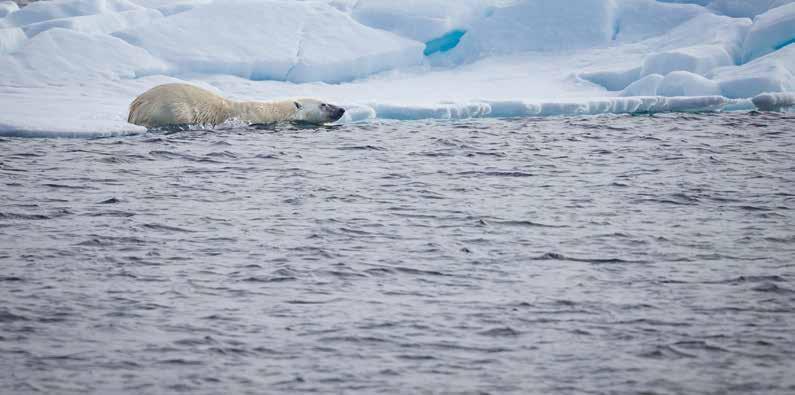
By Mike DeRienzo
Da llas Sprout awoke in the night to a sound he had not immediately recognized. Groggy from the nearly two-day trip, not to mention being responsible for eight travel companions, Dallas brought himself to the window to investigate the source of this disturbance.
Looking out onto a nondescript St. Louis, Missouri, street, he noticed nothing peculiar at all. Just some aggressive drivers honking their horns, angry at some pedestrians who chose to jaywalk as opposed to walking at the designated crosswalk just up the street.
Content with his findings, Dallas returned to bed, smiling as he realized just how far he and his travel companions had come.
For most, this everyday occurrence would not be enough to wake someone up in the middle of the night, especially in St. Louis, a metropolitan area larger than
any in Alaska but still relatively calm compared to New York City or Los Angeles.
But for Dallas, principal of Diomede School on Little Diomede Island, and for his students from Little Diomede, St. Louis is practically as far away as the Moon.
An Alaska Outpost
A small island off the west coast of Alaska, Little Diomede has the distinction of being the only territory in the United States accessible only by helicopter. Mostly, though, it’s the answer to the trivia question, “Where in Alaska can you see Russia from your house?” Across the maritime boundary, neighboring Big Diomede Island is visible 2.3 miles away. Straddling the International Dateline, the pair are also known as Tomorrow Island and Yesterday Island.
There are no cars. No stoplights. Outside of housing, there are relatively few buildings on Little
Diomede, just a government building, a grocery store, and the school, which serves as the unofficial community hub. The population is in constant flux; the 2020 census counted 83 residents and falling ever since the peak in 1990 of 178.
Anyone who is not native to the area, traditionally home to the Ingalikmiut people, doesn’t stay long. With few professions available, harsh winters, unstable electricity and water, and no ability to own land unless you are indigenous, there is a lot of turnover in the area.
Any of those things would scare most people. Dallas welcomes the challenge.
“When I first started teaching out of college, I knew that I wanted to live in Alaska,” Dallas says. Originally from Colorado, Dallas moved to Alaska in 2019 to work as a teacher in Gambell, another Bering Strait community like Diomede but comparatively large with 620 or so residents.
He recalls, “After four years there, my now wife and I wanted a new challenge. There were always whispers about Little Diomede, and we had heard stories of the turnover. We wanted to make a difference, so we decided to roll the dice.”
After moving to Little Diomede, Dallas began to work as an English and social studies teacher in the middle and high school while his wife, Samantha, worked in special education. Because they were not native to the area, they had to live in subsidized housing provided by the school district. In fact, like the other teachers and principals, Dallas and Samantha lived right on campus, something they struggled with at first.
Dallas says, “At first, that took a bit of getting used to. You don’t really have that separation between work and home life if you’re always at school.”
A Loud Boom
That wasn’t the only thing that took some getting used to.
“It took a bit to adjust to this new arrangement. You really need to prepare to live in a place like this. My wife and I had to actually ship our clothes in the mail so we could carry frozen meals in totes with us on the helicopter. It can be hard. You have to plan ahead.”
Despite the necessity of plans, Alaska is notorious for having an agenda of its own. In 2023, on the Sunday after Thanksgiving while the rest of the country was enjoying leftovers and preparing for the week ahead, Little Diomede faced an unexpected windstorm.
“You really need to prepare to live in a place like this. My wife and I had to actually ship our clothes in the mail so we could carry frozen meals in totes with us on the helicopter. It can be hard. You have to plan ahead.”


Dallas Sprout, Principal/Tea cher, Diomede School
“The school building is two buildings, and the one with the apartments sits just a little higher than the school building,” says Dallas. “We were in our apartment trying to get ready for the week ahead, and we could feel our building moving back and forth. And then I just heard a loud boom.”
The cause? The city building, which is just a bit higher on the edge of the ridge, had crashed down into the school.
“At first, we thought that the school’s stilts had broken, and we were sliding into the ocean,” Dallas recounts. “We went outside and saw that the city building was just leaning against the school, and we knew this would be a problem. Then the power went out.”
Soon Governor Mike Dunleavy declared the incident a disaster, and

the school was closed indefinitely. However, while Alaska may be notorious for the unexpected, Alaskans are notorious for weathering any storm that comes their way, especially when it comes to their children.
Within hours, Chromebook laptop computers were prepared and delivered to students. Teachers and administrators mobilized instantly, going door to door to help each student set up and troubleshoot any issues with the internet, and they created contingency plans for any student whose house could not accommodate distance learning.
More Than a School
Just a few days later, every student was back to school, albeit virtually. But education was not
the only thing they missed because of the school closure, something Dallas knows firsthand.
“In Little Diomede, like a lot of other villages in the area, the school is the epicenter of the community,” he says. “At any moment, you have basketball games, Native dancing, library access. We often host large presentations since the school gym has the most room to accommodate everyone. And while I haven’t seen it, I have heard that funerals sometimes take place at the school as well.”
The school is also where doctors, dentists, veterinarians, and other traveling professionals set up to serve the community. Given Little Diomede's size, there is only a fulltime nurse practitioner, so other professionals visit periodically to serve the community. The

Alaska Owned & Operated Since 1979

www.chialaska.com info@chialaska.com





We work as hard as you do to provide great service and insurance protection to our clients. Let us show you how to control your Insurance costs. ph: 907.276.7667

school is also home to the only “hotel” on the island.
New Challenges Loom
Luckily for the citizens of Little Diomede, especially the students, the school closure was temporary. By early 2024, the school had reopened and things returned to normal. Relatively normal, at least; tensions were starting to rise with neighboring Russia, and tension on the island also increased. Dallas says he was not concerned, but he could tell people were on edge.
“There is a lot of patriotism here. There are a lot of people that lived here during the Cold War, and they remember what it was like to have to be the eyes and ears of America’s back door and have to report to the government what they saw,” he says.
“While it’s different now, the love of the United States still remains.”
The rest of the 2023–2024 school year went mostly without incident, but with all the turmoil the faculty faced that year, there was significant turnover last fall. By the beginning of the 2024–2025 school year, the faculty had dwindled to two teachers—Dallas and Samantha themselves—and a small number of support staff.
Dallas was asked to be the principal, as well as the middle and high school teacher, while Samantha was tasked with teaching elementary school and special education.
With their two classrooms, one for each teacher, the young couple— who had just married the previous May—set up a plan on how to teach twenty-one students spread
“The school is the epicenter of the community… We often host large presentations since the school gym has the most room to accommodate everyone. And while I haven’t seen it, I have heard that funerals sometimes take place at the school as well.”

From finance to health care to construction, UA is preparing students for Alaska’s jobs, building Alaska’s workforce pipeline. Learn more at empower.alaska.edu
Workforce Reports
Dallas Sprout Principal/Teacher Diomede School
2023
across grades from kindergarten to high school seniors.
Dallas set up small groups among the middle and high school students so that whichever group wasn’t getting direct instructions could work independently or on group projects.
The system was far from perfect— it’s almost impossible not to be overwhelmed listening to a teacher explain the intricacies of calculus to the group next door while you’re still trying to comprehend pre-algebra— but the students made it work.
The newlyweds adjusted to their new roles as the only faculty for the entire school, and they tackled each challenge together.
While newlyweds often face unexpected challenges during the first year of marriage, nobody could have predicted what would happen next.
Go with the Flow
On December 24, 2024, the Sprouts were preparing for their first Christmas together as husband and wife when the power went out in the whole community. While not an immediate cause for concern, the backup generator did not immediately turn on.
Three hours later, after the power returned, Dallas discovered a new issue. There was no more running water due to a problem at the water plant.
He says, “We always plan ahead for these things, so we had plenty of bottled water available. But given the holiday season, we couldn’t get a hold of anyone for a while.”
It was January before the water plant issue was fixed, but there was
“And I’m a teacher, not a plumber; I didn’t know the first thing about the water pump system.”
Still, Dallas—never one to shy away from the challenge—worked continuously to locate the problem. Eventually, a broken pump was determined to be the cause, and by February the water was back on.
Gateway Getaway
The students went back to their daily learning, and the Sprouts went back to teaching. A week later, help

he signs at the zoo.
Dallas says, “The students deserved to go to St. Louis and see that things that they do really do make it into the world. There is something tangible out there that they did and got to see. It’s important the students realize that they are more than just what they think they have to be. They can explore new worlds and have radical ideas and experience the world in a way that they didn’t think possible before. This can only happen through education.”
















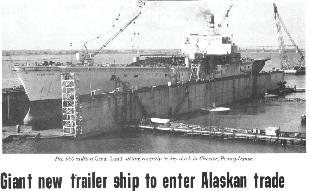














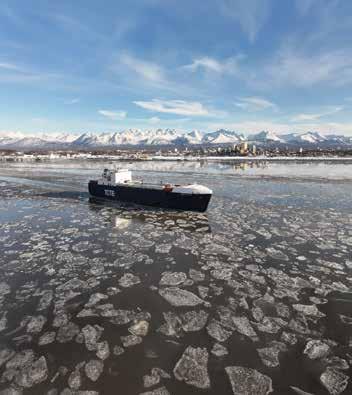
For 50 years, TOTE has o ered a 3-day transit, twiceweekly sailings, flexible gate-times, and roll-on/rollo operations to support versatile cargo needs, for an award-winning customer experience. When it comes to shipping to Alaska, TOTE was built for it.



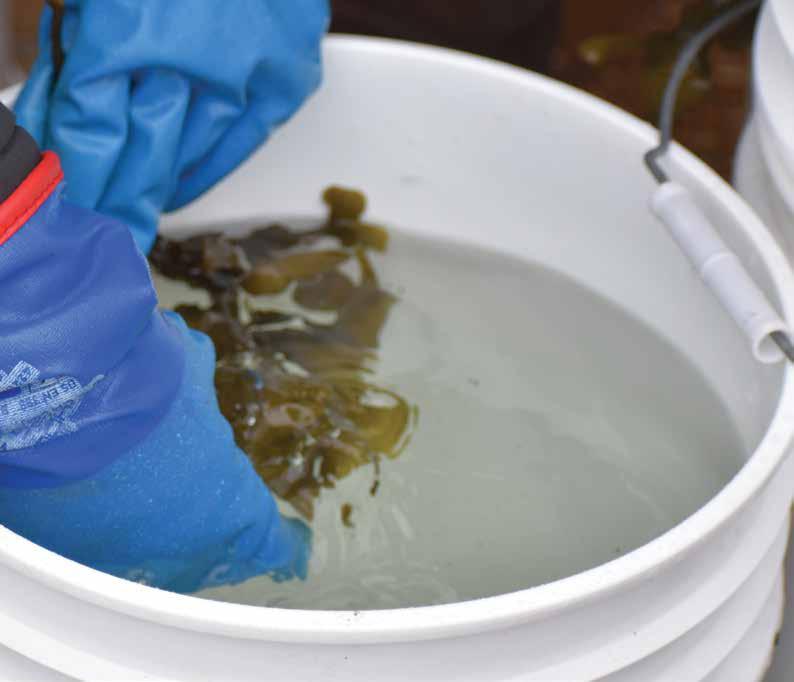
Deep in the Weeds
UAF-led project studies rare earth elements in seaweeds
By Jamey Bradbury
Schery Umanzor is thinking about uses for seaweed: Food. Biofuels. Animal feed. Biodegradable packaging.
“Seaweeds have a use,” she emphasizes. “There’s a reason why it’s the fastest growing industry in the world. [But] realistically, [the United States] cannot compete with Asia or Latin America” when it comes to exporting seaweed products to the rest of the world.
Since April 2024, Umanzor has led a UAF research team in the study of seaweeds in Southeast. The team is less interested in the use of biomass—the plant material produced by seaweed—than in the potential of extracting rare earth elements (REEs) from them.
Partnering with UAF on this project are UAA, the National Renewable Energy Laboratory, Seagrove Kelp, Ocean Rainforest, and the Alaska Fisheries Development Foundation.
Though the project is only weeks into the second year of a two-year study, Umanzor’s team has made some promising findings. Whether REE extraction from seaweed could lead to a viable new industry in Alaska, however, would depend on a significant shift in how Americans use seaweed.
Rare and In Demand
The UAF research team’s seaweed REE extraction project was initiated, in part, by the US Department of Energy’s increased funding in 2017 to develop seaweed farming in the United States. Early research made it clear that the United States could be very successful at
UAF College of Fisheries and Ocean Sciences
Studies
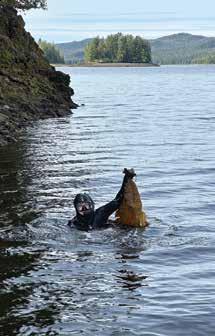
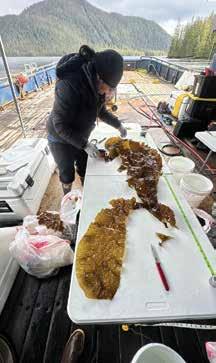
producing biomass from seaweed farming, but finding a use for that biomass was a different story.
At the same time, demand for REEs increased. REEs aren’t “rare” because they’re hard to find— elements such as gadolinium, neodymium, and yttrium are more abundant in the Earth’s crust than tin, tungsten, or mercury—but they are thinly distributed and difficult
to mine efficiently. Nevertheless, they’re used for a variety of soughtafter technologies, everything from tiny motors for adjusting car seats and the light-emitting phosphors in mobile screens to laser targeting and weapons in military vehicles.
Currently, China controls most global REE mining and processing. Since the suspension of nearly all REE exports from China this April, demand for REEs has grown amid shortages that threaten many American-made technologies. Now more than ever, discovering a new way to source REEs could mean significant benefits to the United States.
Previous exploratory research by the Pacific Northwest National Laboratory found that seaweeds can accumulate REEs dissolved in the ocean. The UAF team’s project builds on those findings to ask whether the seaweed off the shore of Prince of Wales Island at the base of Bokan Mountain is accumulating REEs in concentrations worth the effort it would take to recover them.
“Seaweeds are like sponges,” says Umanzor. “Our goals were to understand the geochemistry of the site, to determine what the seaweeds are accumulating and at what rate.”
The Challenges of Extraction
Bokan Mountain is not the most hospitable place. Situated at the southern tip of Prince of Wales Island, pummeled by frequent rain, the slopes yielded uranium from the Ross-Adams mine from the ‘50s into the ‘70s. This uninviting environment is exactly what makes the mountain an ideal site to explore whether
seaweeds are absorbing REEs.
“This particular site is completely exposed to environmental elements. It rains so much over there, the rain washes the rock, causing REEs to leach into the streams and then into the ocean,” explains Umanzor.
And then into the seaweed. So far, the simple answer to the question posed by Umanzor’s research is that, yes, seaweed does act as a sponge, soaking up REEs that run off from the mountain and into the ocean. Research has detected the presence of several REEs in the seaweed: lanthanum, neodymium, and dysprosium are all present at higher concentrations. Additional REEs, including yttrium, europium, gadolinium, and lutetium, are also detectable at lower concentrations.
“Higher,” though, is relative in REE research. These REEs are found at “really minute” amounts, Umanzor points out. “We’re talking parts per billion in most cases.”
Detecting REEs at such miniscule amounts was no easy feat. While the analysis of the seaweed was guided by existing methods for detecting critical minerals at low concentrations, Lieve Laurens of the National Renewable Energy Laboratory and her colleagues had to use extremely sensitive instruments to detect and measure REEs from Bokan Mountain—while at the same time avoiding contamination.
“As soon as we would’ve, for example, used metal scissors or a metal spatula or touched the [samples] with our fingers, any of these samples would’ve gotten contaminated with very low concentrations of elements and
so far indicate REE concentrations of one part per million in seaweeds, which is less than 1 percent of even low-grade mineral ore.
UAF College of Fisheries and Ocean Sciences
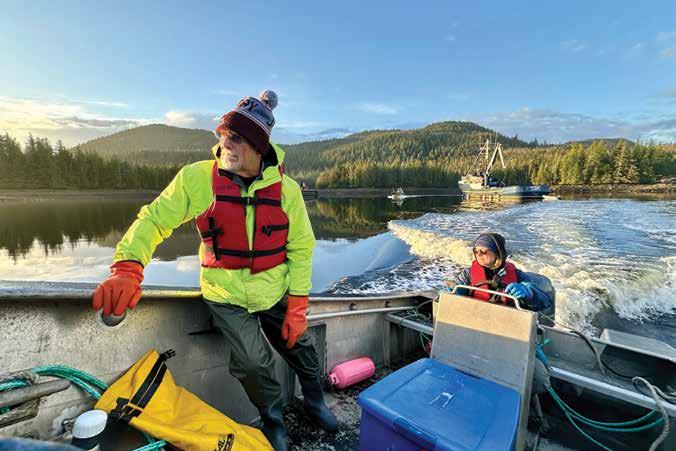

compromised the quality of our results,” Laurens explains.
To eliminate contamination, scientists took specific care to ensure samples remained untouched through the entire process of collection, shipping, and drying. They also set up experiments to ensure their methods for REE recovery would be accurate.
Industry Potential
One gram per tonne. That’s the ratio Umanzor estimates, based on
the study’s findings so far, at which REEs can be extracted from the Bokan Mountain seaweed. It’s an important number to consider when talking about potential practical applications for this work. By comparison, Ucore Rare Metals estimated 452 grams per tonne of gadolinium, for example, in a 2011 preliminary economic assessment to revive REE mining at Bokan Mountain. Squeezing dissolved metals from seaweeds, rather than from the rock itself, would take widespread effort.
“The recovery of rare elements cannot be a standalone industry,” Umanzor says.
She envisions the possibility of incorporating REE reclamation into seaweed farms, where the REEs are recovered in a clean way that allows for the biomass to be processed for other uses, like food, animal feed, and packaging. In fact, these seaweed farms already exist—just not primarily in the United States. The expense of seaweed farming in the ocean, along with the lack of an existing
The team led by UAF will wrap up the two-year study in April 2026. New funding would be needed for the next phase.
UAF College of Fisheries and Ocean Sciences
Research reveals that seaweeds aren't passively soaking up REEs but preferentially absorb different elements, depending on species.
UAF College of Fisheries and Ocean Sciences
“pathway” to establishing additional farms, would be major hurdles to overcome, she says.
One surprising finding of the study was the discovery that different species of seaweed have different selectivity for the REEs they capture. The research team had predicted that whatever elements were present in the seaweed would be a representation of everything present in the water. Instead, REEs appear to be present in different amounts, depending on the seaweed species.
Laurens says more research needs to be done to understand exactly how seaweeds select REEs, what role polysaccharides play in adsorbing REEs, and whether there are proteins playing an active role in seaweeds by acting as “gatekeepers,” letting some REEs in while keeping others out. Gaining a better understanding of this selectivity, Umanzor says, might allow for specific species of seaweed to be planted with the purpose of collecting REEs.
“Say we want to recover neodymium, which is used in magnets and electric vehicles,” she elaborates. “Maybe we can select for a particular seaweed to collect neodymium, but that same seaweed might not be as good as others to collect europium, for example.”
Cleaning and Capturing
Seaweed selectivity may be one of the most promising findings in terms of how this research could be applied to industries in Alaska. While extracting REEs from seaweed as part of a farming operation seems unfeasible, given low local demand and the lack of infrastructure
“Using biology to capture elements is not new, but we could use it here to work with some of the mining companies to recapture additional value beyond the mine and, at the same time, clean up the water source as well.”
Lieve Laurens,
Algae
Platform Team Lead, National Renewab le Energy Laboratory
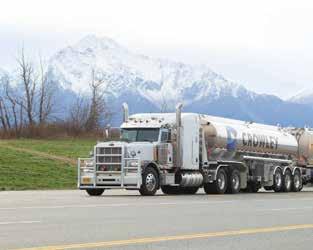
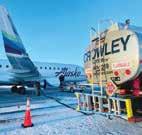


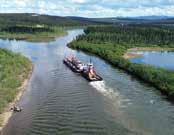
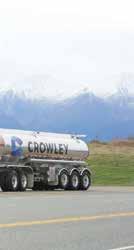
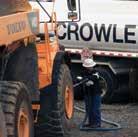
CROWLEY FUELS ALASKA
With terminals and delivery services spanning the state, and a full range of quality fuels, Crowley is the trusted fuel partner to carry Alaska’s resource development industry forward.
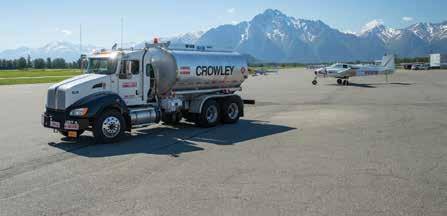
Fieldwork near the tip of the Panhandle might result not only in a new method to extract minerals but new tools for environmental support of inland mines.
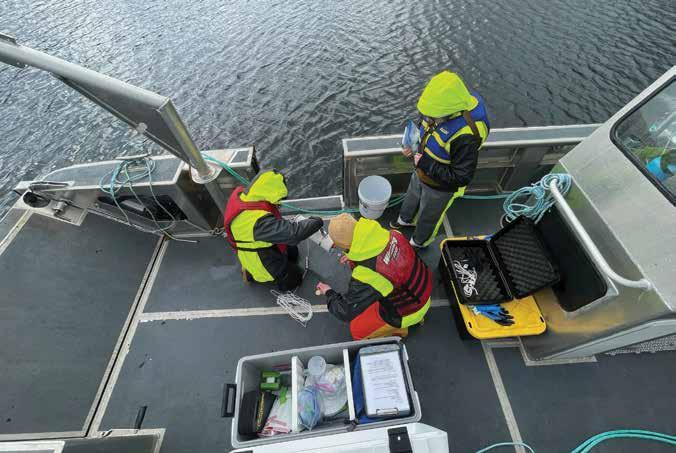
to export biomass from Alaska, seaweeds could be used in the mining industry to reclaim REEs from runoff.
If scientists can determine which seaweeds are best at collecting specific REEs, additional value could be captured by “selectively deploying” a species of seaweed in the bodies of water near mining operations.
Laurens likens this possibility to kelp forests that are planted to clean pollutants from water.
“That vision of using biology to capture elements is not new, but we could use it here to work with some of the mining companies to recapture additional value beyond the mine and, at the same time, clean up the water source as well,” she describes.
Umanzor imagines another option: If researchers can find the mechanisms of bioaccumulation present in the seaweed, what if they
could create a synthetic version that could be thrown into water to capture REEs?
It sounds like science fiction. But fantasy could become reality with more research.
The Future of Seaweed
In the ‘80s, Umanzor points out, before kelp farming became “a thing,” there was “a lot of learning, but a lot of failure. But it was all of that groundwork that opened the door to having what we have right now.”
She sees her research on the ability of seaweed to collect REEs as a similar laying of groundwork. While she doubts seaweeds will ever become a substitute for mining or be relied upon solely for REE extraction, she does see a future in which seaweed could play a significant role in new industries.
“Everything that we are learning about is going to open a door to understanding other processes. It may not take a long time before we revisit this because we are in need of those elements. We’re going to need all possible options [for recovering them].”
Developing ways to recover REEs from seaweed, though, will require additional understanding. When the UAF research project sunsets in April 2026, new funding will be needed to continue important work toward using what’s been learned—and potentially growing a new industry that could benefit Alaska.
“It’s exciting to be opening doors,” says Laurens. “There’s a lot more to be done. There’s a lot more doors that we’re going to open, but we need continued support to make that happen.”
UAF College of Fisheries and Ocean Sciences









When Contracts Clash
Contractors’ rights and responsibilities in disputes
By Rachael Kvapil
The best-laid plans of mice and men oft’ go awry. The translated line from Robert Burns’ poem “To a Mouse” is a reminder that, no matter how carefully a project is planned, something may still go wrong. Construction contractors are no strangers to changes to their bestlaid plans, so they rely on contracts to outline how such changes should be handled by all parties involved. However, due to the complexity of modern contracts, interpretations can easily differ and cause disagreements—or worse, disputes. To mitigate disputes, contractors rely
Georgii| Adobe Stock
on legal services from firms familiar with construction industry law to find a resolution and keep them apprised of their rights and responsibilities.
Disagreement vs. Dispute
Not all disagreements become disputes, says Anne Marie Tavella, a partner at Davis Wright Tremaine. Changes anticipated on a construction project do not necessarily result in a dispute if the parties can reach an agreement as to the scope, cost, and time associated with the change. But changes can cause a dispute if there is disagreement as to the cause of the change, whether it should have been anticipated, and the cost or time impact. There are also related issues, such as timely notice and proceeding without direction, that can cause a dispute even if there is agreement on the nature and impact of a change.
“Broadly, a contract dispute is any disagreement regarding the interpretation or performance of a contract that results in additional action by the parties to address the dispute,” says Tavella. “Most contracts have a provision for disputes or dispute resolution.”
Tavella says there are many reasons for construction contract disputes, but most involve changes to the scope of work, delays, and payment issues. Changes to the scope of work regularly happen during a construction project, but the ones that may cause disputes include different-than-expected site conditions, defective specifications, or additional work ordered by the owner. Similarly, delays, which are often the result of a change to the
scope of work, are often the subject of disputes. Given that construction contracts usually include liquidateddamages clauses to compensate the owner if the project exceeds the completion date, determining whether a delay should permit excusable time or compensable time can lead to parties disputing the measurement and classification of the delay. For contractors, excusable time allows the contractor to reduce or avoid liquidated damages, and compensable time pays the contractor for the additional time caused by the delay.
Tavella adds that payment is hardly surprising as a common dispute issue. Although payment disputes between owners and general contractors happen, it is more common to see payment disputes between general contractors, subcontractors, and suppliers due to federal and state laws that provide protection to certain lower-tier contractors.
Doug Oles, a partner at Smith Currie Oles, clarifies that most construction contract disputes are based on written agreements and rarely on verbal agreements. He says that long, complex contracts have replaced handshakes when parties decide to exchange services for payment.
“Verbal and handshake agreements or even one-page contracts have faded into the past,” says Oles. “Now contracts include so many pages with industry-specific language that they’ve become less user-friendly. It’s unfortunate, but it’s reality.”
He says construction contract disputes rarely involve just two
“Verbal and handshake agreements or even one-page contracts have faded into the past… Now contracts include so many pages with industry-specific language that they’ve become less user-friendly. It’s unfortunate, but it’s reality.”
Doug Oles Partner
Smith Currie Oles
“Broadly, a contract dispute is any disagreement regarding the interpretation or performance of a contract that results in additional action by the parties to address the dispute… Most contracts have a provision for disputes or dispute resolution.”
Anne Marie Tavella Partner D avis Wright Tremaine
companies. Many disputes include multiple parties, and resolving the dispute means sorting the issues by the parties involved in the construction project. This includes the owner, designer, architect, prime contractor, subcontractor, suppliers, and more. With so many people involved in a contractual relationship, Oles says that any dispute resolution can require interpretation of multiple agreements, and those agreements may not all be consistent.
Time and Money
Tavella says resolving construction cases can be very expensive, in part due to the large volume of documents involved. Construction projects that span several years can generate tens of thousands, or more, documents. Costs for document review and production are substantial, in addition to the cost of legal services. Relatedly, many construction cases require expert witnesses—often more than one expert—which also increases the cost.
Most contracts put the responsibility on the contractor to take all actions in pursuing a claim or dispute. This includes timely notice, preparing documents and information for the owner’s consideration, timely submitting such information, and ensuring the documents meet contract requirements. For example, many contracts require a time impact analysis to prove delay. This creates an administrative burden for the contractor, even in situations where the owner is entirely responsible for the cost and impacts of the issue.
“Know your contract and ensure your field team is properly documenting any potential issues on the project,” Tavella says. “It’s impossible to know when an issue arises if it will be a dispute. However, failing to take proper action at the time, notifying the owner, or documenting the issue could result in a loss of the dispute as it gives the owner an easy excuse to deny responsibility.”
Proper documentation includes daily reports, accurate schedules, and meeting minutes. A contractor with significant documentation establishing its entitlement to a dispute can also avoid litigation, and the costs associated with it, entirely. If litigation cannot be avoided, having adequate documentation greatly improves a contractor’s chances of recovery. Without proper documentation, collecting all the facts and information is difficult due to the number of platforms on which people communicate. Discussions between parties may take place in person and via email, text messages, phone calls, and more.
Construction contracts mostly determine a contractor’s rights and responsibilities, but public contracts can be more complicated. Most public contracts cite regulations or laws that need to be cross-referenced to confirm rights and responsibilities. Even with private construction contracts, which are usually more straightforward, court cases addressing contract interpretation can affect how those contracts are administered.
Contractors generally have the right to enforce contract terms,
including seeking additional time and costs for changes and delays. There is also the responsibility to provide timely notification to the owner of any issues on the project, to await direction before performing work outside of the original scope, and to mitigate damages or increased costs.
Contractors rarely, if ever, have the right to refuse to perform work—even changed work—due to a pending dispute. A contractor who is debating whether to refuse a change order or to walk off a project due to a dispute should contact an attorney.
“Refusing to perform or choosing to abandon the project can lead to termination for default,” says Tavella, “even if the contractor is justified. Fighting over a termination is much more difficult for the contractor than fighting over a change order.”
Contractors who continue to work through a dispute should take caution when signing documents, particularly change orders, as they can cause a contractor to waive or release unrelated issues. Tavella says signing any document with a release should be carefully considered with legal counsel while a dispute is pending. Many times, she’s encountered contractors who signed releases based on verbal agreements for future change orders or other resolutions only to have the owner reverse course after the fact.
Tavella adds that parties in dispute commonly wait until a project is finished or nearing completion before addressing the issue. Although this allows the parties to focus on the construction work, waiting may force the contractor to finance the cost of the issue in dispute. This can also create a difficult situation if there www.akbizmag.com

TRY ONE

SEE FOR YOURSELF. Contact Yukon Equipment to experience the power, intuitive controls and comfort that CASE equipment delivers. Be sure to ask about ProCare— the most comprehensive, standard-from-the-factory heavymachine support program in the industry. And speaking of support, you can always count on us as your go-to resource for all your equipment needs.
Visit CaseCE.com/TryOne or contact us to schedule a demo today.
Contact us for more information. Been in business since 1945.
2020 East Third Avenue
Anchorage, AK 99501
Phone: 907-277-1541
Fax: 907-276-6795
Email: info@yukoneq.com FAIRBANKS
3511 International Street
Fairbanks, AK 99701
Phone: 907-457-1541
Fax: 907-457-1540
Email: info@yukoneq.com
WASILLA
7857 West Parks Highway
Wasilla, AK 99623
Phone: 907-376-1541
Fax: 907-376-1557
Email: info@yukoneq.com
www.yukoneq.com
PROUD SUBSIDIARY OF CALISTA CORPORATION
“It’s impossible to know when an issue arises if it will be a dispute. However, failing to take proper action at the time, notifying the owner, or documenting the issue could result in a loss of the dispute.”
Anne Marie Tavella, Partner, D avis Wright Tremaine
is turnover on the project and the individuals who were initially involved no longer work for the company. Without sufficient documentation or the ability to obtain testimony from former employees, the contractor may not be able to prove its case later in the project.
Lastly, it’s important to be thoughtful about how the dispute is discussed internally, particularly when no lawyer is involved. Tavella says emails and text messages can create problematic evidence that may need to be disclosed during litigation. Involving a lawyer in internal communications may protect documents by attorney-client privilege.
When to Seek Help
Asking a lawyer when to seek legal
assistance is like asking a doctor when to get a health checkup, says Oles. He says some wait until they’re sick (there is an actual dispute), and some seek preventive care (before there is a problem). In today’s environment, with multiple complex agreements, he suggests getting advice before a dispute arises.
Tavella agrees. “My advice is to seek legal guidance early and often,” says Tavella. “The cost for thirty minutes of advice early in a dispute or before an issue becomes a dispute is significantly smaller than the cost to litigate a case or even prepare an initial complaint.”
Seeking legal counsel early and often also allows a contractor to have strategic guidance while continuing the project. Tavella says this can help avoid other disputes
STRUCTURAL CRANE REPAIR
Onsite
Structural
Preventative


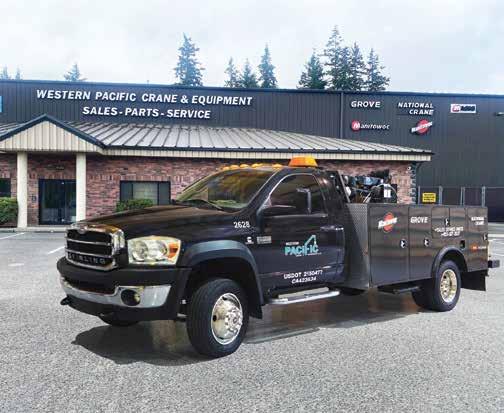

or minimize an ongoing dispute. For contractors who prefer to involve an attorney later in the process, she says it’s best to consult an attorney as soon as a disagreement looks like it will be a dispute. Many contracts, particularly with public owners, have detailed dispute-resolution processes with associated time requirements. Contractors who fail to follow the requirements can waive their claims, so working with a legal advisor before the dispute resolution process applies is important.
“It depends on the contract and the timing of when I’m contacted,” says Tavella. “If it is early in the dispute, my main goal is to determine the options that lead to the client’s desired result without the need for litigation. If it is later, the process is usually dictated by the contract.”
Either way, Tavella says the goal is to reach a resolution without a lawsuit, as they are time-consuming and expensive as employees are pulled away from their normal work to testify as witnesses.
One of the fundamental challenges to dispute resolution, according to Oles, is overcoming hostility. By the time a dispute comes to a lawyer, he says the parties are sometimes no longer listening to each other. Finding a resolution means encouraging everyone to return to rational discussions based on objective documentation. Most importantly, he says it’s important not to exaggerate claims. Some parties come to the negotiation table asking for double the amount they believe they’re entitled to, anticipating the need to bargain that down by half.
Oles says this tactic degrades the credibility of the industry.
“Lawyers should never get carried away by the emotional hostility of the parties involved in a dispute,” says Oles. “It’s important to remain objective and talk their clients down from an extreme position to a reasonable one.”
In general, Oles says people shouldn’t take adversarial positions. A contract is a path for two or more parties to achieve a goal. In that light, he says, people who hire contractors shouldn’t put unnecessary obstacles in the way of efficiently completing a project, and contractors should show the same respect for project owners. Likewise, the lawyer who assists them should focus on the relevant information to get optimal results.

Navigating the Courtroom
The specialized skills of litigators
By Amy Newman
Cl ose your eyes. Imagine an attorney. What do you see? More than likely it’s two suited professionals arguing passionately, perhaps dramatically, in a courtroom on behalf of their client.
Turns out that image is far from reality.
“The exact opposite is true,” says Lee Baxter, a civil litigator and shareholder at Schwabe’s Anchorage office. “Most attorneys never go into a courtroom. There are far more nonlitigation attorneys in Alaska than there are litigation attorneys.”
Exactly how many more is unclear. The Alaska Bar Association doesn’t maintain statistics on its members’ practice areas, but the American Bar Association (ABA) counts 1.32 million active attorney members
nationwide, and just 2.3 percent of them are members of its litigation section. However, membership in the ABA and its sections is voluntary, so the accuracy of that figure is questionable. In a 2022 ABA Legal Technology survey of private practices, 46 percent of respondents identified as primarily litigators; however, the survey was not meant to quantify how many attorneys identify as litigators, nor did it differentiate between civil and criminal attorneys.
Bonnie Paskvan—a partner at Dorsey & Whitney, head of its Anchorage office, and cochair of the firmwide Indian and Alaska Native Law practice group—thinks the number falls s omewhere in between.
“Only 25 percent of attorneys selfidentify as litigators,” says Paskvan, who is herself among the majority who do not. She references an estimate by lawyer and legal blogger Dennis Kennedy after he examined the (admittedly limited) available statistics on the subject, which included asking AI platforms. “So it’s a myth that all lawyers are litigators. The statistics show they are the minority,” Paskvan observes.
Among attorneys who do identify as litigators, very few of their cases make it to trial. The Alaska Court System Statistical Report FY 2024 shows that just 0.7 percent of general civil cases disposed of in Superior Court were resolved following either a bench or jury trial. District Court numbers were nearly identical, with just 0.8 percent resolved following a bench or jury trial.

Landmark real estate & construction projects are represented by Schwabe.
We don’t just settle on knowing your industry. We live it. Spotting trends and navigating turbulent waters can’t happen from behind a desk. The insights come when we put on our hard hats and meet our clients where they are.
“People have this opinion that attorneys are constantly in court, but the bulk of our work, the lion's share, is certainly not—at least for civil litigators.”
Whitney Brown Associate Stoel Rives
“Trials are extremely rare because they’re expensive and you can’t control the result,” Baxter explains. “So the vast, vast majority of cases are settled because the parties to the dispute choose to take less than what they’d get on their best day in court to avoid the risk of getting a result that i s very unfavorable.”
Even though most lawyers rarely, if ever, see the inside of a courtroom, they still have plenty of work to do.
Civil Litigation in Alaska
Civil law encompasses every non-criminal legal issue. Civil attorneys may market themselves as general practitioners, which means they don’t specialize in a single area of law; others may specialize in one or more.

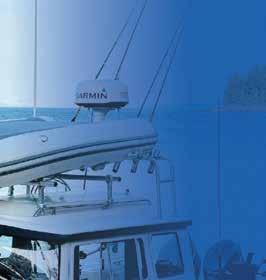


































“On the civil side, there are will and estates attorneys, tax specialist attorneys, corporate governance attorneys,” Baxter says, naming just some of the specializations. “It’s extremely rare for them to go into court and argue anything. Most of the civil cases that make their way to the Alaska court system are family law, child in need of aid cases, torts, contracts, and some business litigation.”
Transactional attorneys provide legal services that don’t initially involve a dispute between parties. Drafting business formation documents or contracts, creating estate plans, advising corporate clients, writing letters on a client’s behalf—none of these issues require the court’s involvement. A civil litigator steps in only


Named one of Alaska’s Legal Elite
NANA proudly celebrates your leadership and dedication.
Your work strengthens our corporation and re ects the values that guide us.











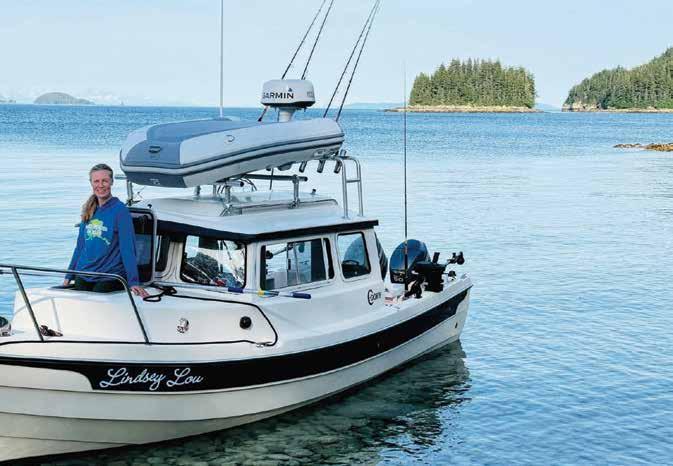
Pilliataqtutin, Lindsey Holmes!
when the parties’ attempts to resolve their dispute outside the court system have failed.
“A litigator overall, I think, is someone who practices across substantive areas,” says Whitney Brown, an associate with Stoel Rives. “Their skill set is [one] that specializes in going to court, handling motions, appearing before a court, and trying to resolve a dispute between their client and another entity with the court’s assistance.”
Though non-attorneys may equate litigation with the actual trial, it is instead a process that begins when the plaintiff files their complaint with the court. That makes the litigator akin to a guide who utilizes their expertise not only to achieve a favorable
outcome—whether getting the case dismissed, settling, resolving the case through mediation or arbitration, or a verdict—but to help the client understand the process along the way.
“When you hand a case to a litigator, one of the main things that they can offer is understanding the system, the kind of filings that a court would want to see and the arguments it would expect at a hearing or in a briefing,” says Danika Watson, a litigation associate in Dorsey & Whitney’s trial group. “They’re really that contact point between a historic system and the people who have legal issues. There’s so much legacy behind those rules and those procedures, and a litigator is a navigator for all of that.”
The Litigator’s Role
Navigating civil litigation, from the initial filing to trial, can take up to two years, Baxter says. Almost all that time is spent in the office.
“You’re preparing your case. That’s most of your time,” he says. “What you see on TV, Suits or Boston Legal , is absolutely nonsense. An actual presentation of civil litigation would not be TV worthy.”
That preparation—issuing and responding to discovery requests, filing and responding to motions, and deposing witnesses—comes with a court-imposed timeline to keep the process on track. Litigators, Baxter says, must be able to manage that timeline and the deadlines that come with it, or else they risk negatively affecting their client’s case.
Reach for the Stars




“Trials are extremely rare because they’re expensive and you can’t control the result… So the vast, vast majority of cases are settled because the parties to the dispute choose to take less than what they’d get on their best day in court to avoid the risk of getting a result that is very unfavorable.”
Lee Baxter Civil Litig ator and Shareholder Schwabe
Watson, who joined Dorsey & Whitney after clerkships with the Alaska Supreme Court and the United States District Court for the District of Alaska, says even she was surprised at just how little of a litigator’s practice involved the courtroom.
“It’s been really eye-opening to see the breadth of legal work that is done outside of the courtroom, and where the courtroom is not thought of as where disputes get resolved, but a risk to be aware of,” she says.
Even when litigators do appear in court, Brown says it’s often not with the legal fireworks people imagine.
“People have this opinion that attorneys are constantly in court, but the bulk of our work, the lion's share, is certainly not—at least for civil litigators,” she explains. “I work with a team of five litigators in our Anchorage office, and I would say one of us is in court every week. But that might just be for a short status conference or a motion that’s being argued.”
With so much of a litigator’s work happening outside the courtroom and so few cases going to trial, specializing as a litigator requires more than just oral advocacy skills. The ability to write clearly, persuasively, and accurately is equally important, if not more so. Exactly how much of litigation practice involves writing, Baxter says, might come as a surprise.
“You’re writing so much more than you’re speaking, which is something that is discounted by the general layperson who is not in the business,” he says. “They think, ‘Oh,
attorneys just need to be able to talk on their feet and in court.’ Every case involves so many motions and letters. It’s a 99:1 ratio—99 percent writing, 1 percent arguing.”
Non-attorneys may also be surprised to learn that, despite the adversarial nature of litigation, interpersonal skills are also hugely important. The ability to understand the client’s needs and desires, to be a skillful negotiator and be able to find common ground with the opposing party, and “know when to stand up for what’s really important and give on what’s less important” are all important skills a litigator should have in their toolbelt, Brown adds.
“Some might call them soft skills, but I think they’re pretty important,” she says. “There’s a lot of that that comes into play.”
Which to Hire: Litigator or Non-Litigator?
If a client’s legal issue is purely transactional, might they wish to retain a litigation specialist for the worst-case scenario? Not at all.
“If you have a dispute in a specific subject matter, it would be better to go to a subject matter expert first, and then worry about if it’s going to litigation,” Baxter says.
If the issue does seem headed toward litigation, then a litigator either from within the firm or outside counsel can be brought in later.
“Our advice would be to find someone that you respect and trust their advice,” Paskvan says. “If it comes to litigation and that person can’t help you, they could refer you to someone who can.”














LLC, We See Thee Limitless potential in limited liability companies
By Scott Rhode

Li ke the water a fish swims in without recognizing it, LLCs are everywhere. Not just the limited liability companies themselves; the letters are part of the background of everyday commerce. The abbreviation appears in business names so often that it becomes invisible.
Similar suffixes suffuse signage, saturating scenery with “Inc.,” “Corp.,” and “Co.” Yet these short forms are descriptive and understandable, whereas “LLC” is opaque and technical, often irrelevant and left unmentioned.
“It is typical to omit ‘LLC’ from a company name in casual conversations, social media, and marketing materials,” says Sarah Gillstrom, a partner at the law firm of
Davis Wright Tremaine. “However, the full company name should be used, including the LLC designation, in legal documents, banking documents, and tax documents.”
Three little letters are the key to an LLC’s true name, a talisman that unlocks its power.
Enter the Entity
In business organizations, “entity type” refers to the legal structure of operations. Sole proprietors and partnerships are ancient entity types; corporations are newer types, and LLCs are newer still.
“Although similar in certain ways, each entity type has distinct characteristics that impact legal rights, obligations, and protections,” says Shane Coffey, an attorney at
Manley Brautigam Bankston. One of the key features of an LLC, contained in its name, is that it limits liability.
Coffey explains, “To the extent the LLC fails to fulfill an obligation for which it is responsible (such as paying rent pursuant to a lease it signed or compensating a person for injuries it caused), the person(s) harmed by such failure can generally only pursue the property owned by the LLC to recover the debt; property owned personally by the LLC’s members generally cannot be used to satisfy the debts of the LLC.”
Gillstrom adds, “It generally limits the liability of its owners to the amount of their investment in the entity.”
Other types of corporations likewise limit liability, and they carry further
distinctions: a tax classification. C-corporations and S-corporations are tax classifications, referring to how a business is taxed by the relevant taxing authority, such as the IRS. “An entity’s tax classification determines tax rates, reporting requirements, and, ultimately, tax liability,” notes Coffey.
According to the US Small Business Administration, a C-corp is a legal entity separate from its owners. “Unlike sole proprietors, partnerships, and LLCs, corporations pay income tax on their profits. In some cases, corporate profits are taxed twice: first, when the company makes a profit and again when dividends are paid to shareholders on their personal tax returns,” the agency states. An S-corp is designed to avoid double taxation by allowing profits (and some losses) to pass through as income to the owners, avoiding corporate tax rates.
LLCs share this feature of S-corps, but self-employment taxes can sometimes be higher than taxes paid by S-corp shareholders. However, LLCs generally have fewer formalities and reporting requirements than S corps, which can simplify management.
Emily Berliner, the founder and COO of EBO Consulting, says, “I advise clients to select their entity type based on several factors: liability protection needs, tax considerations, administrative requirements, and growth plans. LLCs are popular because they provide personal liability protection while maintaining tax flexibility and requiring less paperwork and administrative overhead than corporations.”
“In my experience, professional services are most likely to advertise/display ‘LLC’—they want that sign of credibility.”
Emily Berliner, Founder and COO, EBO Consulting Inc.

Local Roots, National Reach
We help businesses in Alaska and across the country navigate complex legal challenges with confidence, so you can focus on what matters most—growth and innovation. With deep industry insight and relentless focus on your success, you’ll have the strategic guidance needed to stay ahead in a rapidly changing world.



‘90s Kids Remember
Berliner did not grow up with LLCs. Anyone older than the youngest Millennials remembers a time before LLCs, which coincidentally arose about the same time as the “.com” internet domain.
Wyoming enacted the first LLC statute in 1977, but most other states waited until 1988, when the IRS ruled that LLCs could be treated like partnerships for tax purposes. By the mid-‘90s, every state passed LLC legislation.
The wave reached Alaska in 1994. Gene Therriault, then a state representative from North Pole, sponsored House Bill 420 to define LLCs in state statutes. Therriault recalls, “Having graduated from college with a business degree, I felt it was appropriate for Alaska business

owners to have the new structure available to them similar to what so many other states offered.”
In his sponsor statement, Therriault noted that S-corps have the disadvantage of limiting ownership by certain types of shareholders, and while S-corps can avoid the “double taxation” problem, “they do not enjoy all the advantages of partnerships when it comes to allocating income and deductions.”
Limited partnerships, Therriault noted, restrict how active some partners can be, so LLCs “protect all members while imposing no limits on their involvement in operation of the business.”
Observing the adoption of LLCs in other states, Therriault stated, “LLCs have tended to be family businesses,


professional service firms, venture capital companies, real estate businesses, and startups. I believe the LLC will provide these business owners with an efficient and flexible investment vehicle that allows both limited liability and federal income tax treatment as a partnership.”
Then-Governor Wally Hickel signed the bill into law on June 8, 1994, and it took effect on July 1 of the following year. A new era of business formation dawned in Alaska.
Berliner says, “We see a lot of professional services choosing LLCs: real estate agents, consultants, small law practices, accountants. Trades love them too—such as electricians, plumbers, and tree care companies. The LLC structure works well for these businesses because they often have liability concerns

Peter Boskofsky









Recognizing his excellence in the legal profession and commitment to Alutiiq values.


ATAGUA, PETER!

2025 ALASKA BUSINESS LEGAL ELITE
but want simpler tax treatment than a corporation.”
She adds that, as LLCs became mainstream, “There were several established Alaska businesses that converted from corporations to LLCs in the late '90s and 2000s, especially smaller professional practices that found the corporate requirements too much. The conversion process involves some paperwork and potential tax implications, so it wasn't automatic.”
The IRS cautions that certain types of businesses, such as banks or insurance companies, generally can’t form LLCs.
Most states permit “single member” LLCs, and Gillstrom notes that Alaska is one.
But why advertise these esoteric qualities in the name of the business?
Because the Law Says So
If a business has “Inc.” in its name, clients don’t necessarily know if it’s an S-corp or C-corp. For example, Alaska Business Publishing Company is an S-corp, but that status is not mentioned on the business license certificate posted on the premises. “Company” is sufficient under AS 10.06.105(a). But the rule for LLC names is more specific.
Quite simply, per AS 10.50.020(a): The name of a limited liability company stated in the company’s articles of organization must contain the words “limited liability company” or the abbreviation “L.L.C.” or “LLC.” The word “limited” may be abbreviated as “Ltd.,” and the word “company” may be abbreviated as “Co.”
“I have formed my personal businesses under the LLC structure and find the filing process is convenient.”
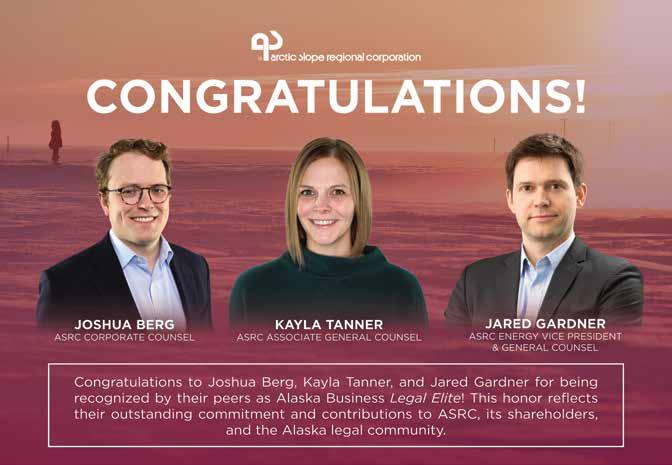
Gene Therriault Owner GT Services LLC
This becomes part of the official name for signing contracts, opening a bank account, or other business dealings. “LLC” does not necessarily have to be part of a trade name or “doing business as” (DBA) used for marketing.
Berliner points out, “Restaurants and retailers are often LLCs behind the scenes but rarely put it on the storefront. Most use DBAs for branding while keeping the LLC designation for legal documents.” Online maps, however, tend to draw information from official names, so a search reveals LLCs that might be invisible from the street.
Sign of Legitimacy
If LLCs have the option of not proclaiming their corporate status, why do some include those letters on their shingles? Berliner explains, “In my experience, professional services are most likely to advertise/ display ‘LLC’—they want that sign of credibility.”
In other words, “LLC” signals that the business took the step of registering as such. “Including ‘LLC’ in branding can exhibit professionalism and legitimacy to some clients,” Berliner adds. “However, from a marketing perspective, many businesses use a trade name or DBA for branding purposes while maintaining their legal name with ‘LLC’ for official documents. This provides flexibility while maintaining compliance.”
This reasoning is partly why Therriault put the naming requirement in the 1994 bill. He recalls, “It was still a relatively new form of business structure allowing
“I've noticed more retail businesses going the LLC route lately, especially smaller operations, since people are more liabilityconscious now.”
Emily Berliner Founder and COO EBO Consulting Inc.
business owners to combine the benefits of sole proprietorships, partnerships, and corporations. As such, I felt it was appropriate to require LLCs to give notice to people doing business with them.”
The notice specifically alerts clients that they are, in a legal sense, dealing with a business entity and not the owner personally. It levels the playing field, in other words, given the advantages of LLCs.
Berliner says, “I've noticed more retail businesses going the LLC route lately, especially smaller operations, since people are more liability-conscious now.”
That route does not include her own EBO Consulting Inc., where the suffix alludes to its S-corp status. “Including ‘Inc.’ in our branding was a deliberate decision based on a few factors,” Berliner
explains. “First, the corporate designation conveys established professionalism and credibility to clients and partners. We have observed that certain industries, particularly those providing B2B professional services, benefit from the perception of formality and longevity that corporate designation implies. Second, maintaining consistency across all areas of our business—from legal documents to email signatures and marketing materials— mitigates potential confusion and reinforces brand recognition.”
She prefers to use “EBO Consulting Inc.” in all official communications, contracts, and financial documents, but “Inc.” might be dropped in marketing. “For marketing contexts, we evaluate each case based on format constraints and audience expectations,” she says.
Happily Ever After
The tale of LLC, like Hans Christian Andersen’s tossing-and-turning princess, cannot yet rest because of a pea. Or rather, “P.”
No, not PLC, a public limited company that sells shares to raise revenue; that’s a Britishism and less relevant to Alaska business since BP p.l.c. exited the state.
However, there is the LLP, a limited liability partnership. Like many law firms, Davis Wright Tremaine is an LLP, and Gillstrom is one of its many partners. Gillstrom explains, “A limited liability partnership is a legal business entity which is separate from its partners. Similarly, a limited liability company is a legal business entity which exists separate
from its members. The roles of the members or partners are generally governed by the entity’s governing documents. LLCs generally have more tax options than LLPs.”
Another P under the pillow is the PC, a professional corporation available to certain highly skilled workers, like lawyers or engineers. Manley Brautigam Bankston is a PC based in Anchorage. Coffey explains that his firm takes advantage of three unique characteristics: 1) only members of the same licensed profession can be shareholders in the PC; 2) when a shareholder leaves, the PC must redeem that owner’s shares; and 3) a person may not be a shareholder, director, or officer in more than one PC at a time.
In contrast with LLCs, Coffey says, “A PC may only render one type of
professional service and is controlled by a board of directors, while LLCs may conduct any number of lawful purposes and is controlled either by its member(s) or its manager(s). Finally, a PC may only be classified as a C-corporation or S-corporation for tax purposes, while an LLC may elect to be taxed as a sole proprietorship or partnership in addition to such classifications.”
Practicing what he preached, Therriault registered his own LLC, GT Services, in 2015. “I have formed my personal businesses under the LLC structure and find the filing process is convenient,” he says. “I offer consulting and lobbying services to a limited number of nonprofit entities that need insight into how the legislative process works in Alaska.”


After a stint as president of the Alaska Senate, Therriault worked at Golden Valley Electric Association and the Alaska Energy Authority, and he is currently board president of Fairbanks Community Food Bank. Midnight Sun Council, Scouting America honored Therriault and his wife, Jo Kuchle, last December as 2024 Distinguished Citizens.
Yet another lasting honor is present in every LLC in Alaska. Those three letters on a business sign are monuments to his legislation, which altered the state’s corporate landscape.
DISCLAIMER: This information is for educational purposes only, without guarantee of accuracy, adequacy, or currency, is not intended as legal advice, and may be considered advertising under the Alaska Rules of Professional Conduct. Use is at the reader’s sole risk. Consult with a competent attorney for advice regarding the specific situation.
CORPORATE UNIVERSITY OF ALASKA FAIRBANKS


in-person degree or certificate programs, or a fully online program with UAF eCampus. Empower them to get one step closer to their career goals — on their schedule, wherever they are.







2025

Welcome to the third annual Alaska Business Legal Elite! This list features Alaska’s most talented lawyers, as nominated by their peers.
We invited licensed Alaskan lawyers to nominate fellow professionals whom they think excel in providing legal services. A third-party data collection specialist verified that the nominated individuals have a current law license. The final list of Legal Elite represents notable practicing lawyers in the state, selected by those who are intimately knowledgeable about what it takes to excel in the field.
Lawyers named among the Legal Elite occupy a range of roles, from working at government agencies or traditional law firms to corporate counsel or “hang a shingle” small practices. This list is not a directory of attorneys for hire; many would be happy to provide legal services to any client, but some already have briefcases full of other business. What this list does represent is the cream of the legal industry crop in Alaska.
Alaska Native Law
ANDREW MARCH
Gana-A’Yoo
Anchorage
ANNA CHAPMAN CRARY
Landye Bennett Blumstein
Anchorage
BONNIE J. PASKVAN
Dorsey & Whitney
Anchorage
CHRISTOPHER SLOTTEE
Schwabe Williamson & Wyatt
Anchorage
CONNOR SMITH
Stoel Rives
Anchorage
ELIZAVETA
BARRETT RISTROPH
Ristroph Law-Planning and Research
Fairbanks
GEOFF D. STROMMER
Hobbs Straus Dean & Walker
Anchorage
HEATHER KENDALLMILLER
Native American Rights Fund
Anchorage
JAMES J. DAVIS JR.
Northern Justice Project
Anchorage
JON M. DEVORE
Birch Horton Bittner & Cherot
Anchorage
K. AMANDA SAUNDERS
Sonosky, Chambers, Sachse, Miller & Monkman
Anchorage
KEVIN M. CUDDY
Stoel Rives
Anchorage
LEE BAXTER
Schwabe Williamson & Wyatt
Anchorage
LLOYD B. MILLER
Sonosky, Chambers, Sachse, Miller & Monkman
Anchorage
MAGGIE MASSEY
Kawerak, Inc.
Anchorage
MAUDE BLAIR
Alaska Native Justice Center
Anchorage

MICHAEL WALLERI
Jason Weiner and Associates
Fairbanks
NATASHA SINGH
Alaska Native Tribal Health Consortium
Anchorage
PHILIP BLUMSTEIN
Landye Bennett Blumstein
Anchorage
REBECCA A. PATTERSON
Sonosky, Chambers, Sachse, Miller & Monkman
Anchorage
RICHARD D. MONKMAN
Sonosky, Chambers, Sachse, Miller & Monkman
Juneau
RIVER E.M. STERNE
Landye Bennett Blumstein
Anchorage
RUSSELL L. WINNER
Winner & Associates
Anchorage
STEVEN C. WILFONG
Sonosky, Chambers, Sachse, Miller & Monkman
Anchorage
VANESSA NORMAN
Doyon, Limited
Anchorage
WHITNEY A. LEONARD
Sonosky, Chambers, Sachse, Miller & Monkman
Anchorage
WILLIAM H. BITTNER
Birch Horton Bittner & Cherot
Anchorage Appellate Law
ANDY ERICKSON
Landye Bennett Blumstein
Anchorage
DAVID WILKINSON
State of Alaska - Department of Law
Anchorage
JAMES E. TORGERSON
Stoel Rives
Anchorage
JENNIFER M. COUGHLIN
Landye Bennett Blumstein
Anchorage
JESSICA ALLOWAY
State of Alaska - Department of Law
Anchorage
LAURA FOX
State of Alaska - Department of Law
Anchorage
MATTHEW SINGER
Schwabe Williamson & Wyatt
Anchorage
MATTHEW T. FINDLEY
Ashburn & Mason
Anchorage
MICHELLE S. NESBETT
Birch Horton Bittner & Cherot
Anchorage
SARAH SCHIRACK
Perkins Coie
Anchorage
WHITNEY A. BROWN
Stoel Rives
Anchorage Aviation, Maritime & Transportation
BRENT R. COLE
Law Office of Brent R. Cole
Anchorage
JACK POULSON
Poulson & Woolford
Juneau
LANNING M. TRUEB
Trueb Berne & Beard
Anchorage
MARC G. WILHELM
Richmond & Quinn
Anchorage
MARK C. MANNING
Mark C. Manning
Anchorage
MICHAEL S. SCHECHTER
Ashburn & Mason
Anchorage
MOLLY HENRY
Schwabe Williamson & Wyatt
Anchorage
PETER J. CALTAGIRONE
Caltagirone Legal
Anchorage
ROBERT L. RICHMOND
Richmond & Quinn
Anchorage
WILLIAM WRIGHT
Schwabe Williamson & Wyatt
Anchorage Bankruptcy Law
AUSTIN K. BARRON
Step Two Law
Anchorage
BRUCE A. MOORE
Landye Bennett Blumstein
Anchorage
JENNIFER L. HOLLAND
Law Offices of Jennifer
L. Holland
Anchorage
MICHELLE BOUTIN
Landye Bennett Blumstein
Anchorage
ROBERT H. HUME JR.
Landye Bennett Blumstein
Anchorage


























Business Law
A. WILLIAM SAUPE
Ashburn & Mason
Anchorage
ANDREA N. CANFIELD
Stoel Rives
Anchorage
JASON M. BRANDEIS
Birch Horton Bittner & Cherot
Anchorage
JOHN D. KAUFFMAN
Stoel Rives
Anchorage
JULIAN L. MASON
Ashburn & Mason
Anchorage
KEN CICCOLI
Inlet Law
Homer
LESLIE R. NEED
Landye Bennett Blumstein
Anchorage
MATTHEW BLOCK
Block Law Office
Anchorage
MICHAEL A. GRISHAM
Dorsey & Whitney
Anchorage
MICHAEL GERAGHTY
Holland & Hart
Anchorage
MICHAEL PARISE
Ballard Spahr
Anchorage
MICHAEL R. MILLS
Dorsey & Whitney
Anchorage
NATHAN BISHOP
Dorsey & Whitney
Anchorage
ROBERT A. SPARKS
The Law Office of Robert
A. Sparks
Fairbanks
SCOTT J. GERLACH
Jermain Dunnagan & Owens
Anchorage
THOMAS V. WANG
Ashburn & Mason
Anchorage
WILLIAM M. BANKSTON
Manley Brautigam Bankston
Anchorage
ZOE A. EISBERG
Ballard Spahr
Anchorage Chief Fiduciary Officer
ABIGAIL O’CONNOR
Peak Trust Company
Anchorage Corporate Counsel
ALEXANDER J. KUBITZ
Landye Bennett Blumstein
Anchorage
ALLEN TODD
Doyon, Limited
Fairbanks
JAMIE N. CONWAY
Stoel Rives
Anchorage
JARED GARDNER
ASRC Energy Services
Anchorage
JESSICA GRAHAM
Global Credit Union
Anchorage
JOSHUA BERG
Arctic Slope
Regional Corporation
Anchorage
KAYLA TANNER
Arctic Slope
Regional Corporation
Anchorage
KRISTY A. GARRETT
Birch Horton Bittner & Cherot
Anchorage
LINDSEY HOLMES
NANA North
Anchorage
MELANIE OSBORNE
Alyeska Pipeline
Service Company
Anchorage
NICHOLAS OSTROVSKY
Ahtna, Inc.
Anchorage
PAMELA KEELER
Chugach Alaska Corporation
Anchorage
PETER BOSKOFSKY
Koniag
Anchorage
RICHARD A. CAMILLERI
UIC Alaska
Anchorage
ROBERT MISULICH
The Aleut Corporation
Anchorage
SIENA CARUSO
Chenega Corporation
Anchorage
STEPHANIE AICHER
Cook Inlet Region, Inc.
Anchorage
WALTER FEATHERLY
Calista Corporation
Anchorage Cyber Blockchain & Technology Law
KEVIN R. FELDIS
Perkins Coie
Anchorage









Elder Law
ILONA BESSENYEY
Bessenyey & Van Tuyn
Anchorage Employment Law
ALLEN CLENDANIEL
Sedor Wendlandt Evans & Filippi
Anchorage
BILL EVANS
Sedor Wendlandt Evans & Filippi
Anchorage
BREWSTER H. JAMIESON
Ballard Spahr
Anchorage
DAVID M. FREEMAN
Holmes Weddle & Barcott
Anchorage
ELIZABETH P. HODES
Davis Wright Tremaine
Anchorage
GREGORY S. FISHER
Littler Mendelson
Anchorage
HOWARD TRICKEY
Schwabe Williamson & Wyatt
Anchorage
JACK DAY
Davis Wright Tremaine
Anchorage
JANEL WRIGHT
State of Alaska - Department of Law
Anchorage
JENNIFER C. ALEXANDER
Birch Horton Bittner & Cherot
Anchorage
KRISTAL GRAHAM
Davis Wright Tremaine
Anchorage
LAURA FISHER
Ashburn & Mason
Anchorage
MEGAN N. SANDONE
Jermain Dunnagan & Owens
Anchorage
MICHAEL O’BRIEN
Davis Wright Tremaine
Anchorage
PATTI A. VECERA
Davis Wright Tremaine
Anchorage
RENEA I. SAADE
Arctic Tern HR Solutions
Anchorage
RYAN A. STUART
Jermain Dunnagan & Owens
Anchorage
SARA L. BLOOM
Law Office of Sara L. Bloom
Anchorage
SARAH E. JOSEPHSON
Jermain Dunnagan & Owens
Anchorage
SARAH JANE SHINE
Holland & Hart
Anchorage
WILLIAM A. EARNHART
Birch Horton Bittner & Cherot
Anchorage Environmental
Natural Resources
AARON PETERSON
State of Alaska - Department of Law
Anchorage
ASHLEY DONOVAN
Trustees for Alaska
Anchorage
CODY B. DOIG
Stoel Rives
Anchorage
COLLEEN MOORE
Reeves Amodio
Anchorage
CONNIE SUE MARTIN
Schwabe Williamson & Wyatt
Anchorage
ELENA ROMERDAHL
Perkins Coie
Anchorage
ERIC B. FJELSTAD
Perkins Coie
Anchorage
HANNAH PATON
Perkins Coie
Anchorage
JENNIFER CURRIE
State of AlaskaEnvironmental Section
Anchorage
JIM SHINE
Holland & Hart
Anchorage
JON KATCHEN
Holland & Hart
Anchorage
LYNN T. MANOLOPOULOS
Davis Wright Tremaine
Anchorage
MARY GRAMLING
State of Alaska - Department of Law
Anchorage
RAMONA L. MONROE
Stoel Rives
Anchorage
SCOTT BROADWELL
Davis Wright Tremaine
Anchorage
SHANNON M. BLEICHER
Stoel Rives
Anchorage
SUSAN REEVES
Reeves Amodio
Anchorage
TINA M. GROVIER
Stoel Rives
Anchorage









































































WALKER STANOVSKY
Davis Wright Tremaine
Anchorage
ZJOK DURST
State of Alaska - Department of Law
Anchorage
Estate Planning & Probate Law
ALLISON STRICKLAND
Cruz Law
Anchorage
ANN BRUNER
Durrell Law Group
Anchorage
ASHLEY SUNDQUIST
Sundquist Law
Anchorage
BRIAN DURRELL
Durrell Law Group
Anchorage
CHELSEA RAY RIEKKOLA
Foley & Pearson
Anchorage
CONNIE
A. ASCHENBRENNER
Law Office of Constance
A. Aschenbrenner
Anchorage
KARL A. KAUFMAN
Landye Bennett Blumstein
Anchorage
MARIBETH CONWAY
Manley Brautigam Bankston
Anchorage
PETER B. BRAUTIGAM
Manley Brautigam Bankston
Anchorage
VALERIE M. THERRIEN
Valerie M. Therrien Attorney at Law
Fairbanks
WILLIAM M. PEARSON
Foley & Pearson
Anchorage Ethics & Compliance
MATTHEW STINSON
State of Alaska - Department of Law
Anchorage
RENEE WARDLAW
Bristol Bay Native Corporation
Anchorage Family Law
CAITLIN SHORTELL
Shortell Law
Anchorage
CHARLES J. GUNTHER
Chicklo Law Group
Anchorage
D. PATRICK PHILLIP
Carlson Law Group
Anchorage
DANEE L. PONTIOUS
Pontious Law Offices
Anchorage
GARY R. ESCHBACHER
Eschbacher & Eschbacher
Anchorage
JOE TOWSLEE
Birch Horton Bittner & Cherot
Anchorage
JOHN SHERMAN
Sherman Law Office
Anchorage
JUSTIN R. ESCHBACHER
Eschbacher & Eschbacher
Anchorage
KARA A. NYQUIST
Nyquist Law Group
Anchorage
KATHRYN RUFF SODEN
Alaska Network on Domestic Violence and Sexual Assault
Juneau
KRISTIN FARLEIGH
Jason Weiner and Associates
Fairbanks
LINDSEY N. DUPUIS
The Law Office of Lindsey
N. Dupuis
Anchorage
LORI COLBERT
Colbert Family Law
Anchorage
MARC CHICKLO
Chicklo Law Group
Anchorage
MARGARET ROGERS
Rogers Law Group
Fairbanks
MAURICE
NATHANIEL ELLIS
Law Office of Maurice N. Ellis
Anchorage
MEGAN HISER
Chicklo Law Group
Anchorage
MICHAEL GERSHEL
Law Office of M. Gershel
Anchorage
SETH DINKEL
Dinkel Law
Wasilla Government & Administrative
ADAM W. COOK
Birch Horton Bittner & Cherot
Anchorage
CHRISTIAN CARPENETI
Holland & Hart
Anchorage
EVA GARDNER
Municipality of Anchorage
Anchorage
HOLLY C. WELLS
Birch Horton Bittner & Cherot
Anchorage
JESSICA SPUHLER
Birch Horton Bittner & Cherot
Anchorage
JOHN P. WOOD
Dillon Findley & Simonian
Anchorage
MATT MEAD
Landye Bennett Blumstein
Anchorage
MATTHEW C. WIDMER
Birch Horton Bittner & Cherot
Anchorage
MATTHEW PRIEKSAT
US Army Corps of EngineersAlaska District
JBER
MAX D. HOLMQUIST
Jermain Dunnagan & Owens
Anchorage
ROBERT PALMER
Munson, Cacciola & Severin
Anchorage
SCOTT KENDALL
Cashion Gilmore & Lindemuth
Anchorage Healthcare Law
CAROLYN HEYMAN
Sedor Wendlandt Evans & Filippi
Anchorage
CASEY WILLITTS
Alaska Legal Services Corporation
Anchorage
DONNA M. MEYERS
Farley & Graves
Anchorage


JANE SAUER
Jane Sauer Law
Anchorage
MARA E. MICHALETZ
Birch Horton Bittner & Cherot
Anchorage
PETER M. DIEMER
Clayton & Diemer
Anchorage
ANNA TAYLOR
Alaska Institute for Justice
Anchorage
JULIE FIELDS
Fields Immigration Law Office
Anchorage
MARGARET D. STOCK
Cascadia Cross Border Law Group
Anchorage
Intellectual Property Rights
JONATHAN WARD
Slater Matsil
Anchorage
Mediation & Arbitration
DANA FABE
Fabe Dispute Resolution
Anchorage
GLENN E. CRAVEZ
Law Office of Glenn E. Cravez
Anchorage
JEFFREY W. ROBINSON
Ballard Spahr
Anchorage
New Lawyers
ARINA FILLAPENKO
Birch Horton Bittner & Cherot
Anchorage
CHRIS B. BRUNO
Jermain Dunnagan & Owens
Anchorage
DANIKA WATSON
Dorsey & Whitney
Anchorage
DYLAN HITCHCOCK-LOPEZ
Ashburn & Mason
Anchorage
DYLAN KRUEGER
State of Alaska - Department of Law
Juneau
JACOB B. GERRISH
Stoel Rives
Anchorage
MOLLY GUNTHER
Schwabe Williamson & Wyatt
Anchorage
OLIVIA WELLS
Rogers Law Group
Fairbanks
SARAH KATHRYN BRYAN
Shortell Law
Anchorage
STEPHANIE HUANG
Ashburn & Mason
Anchorage
STEVE TENNISON
Davis Wright Tremaine
Anchorage
WILL CROWTHER
Holland & Hart
Anchorage
ZACH FORRESTER
Schwabe Williamson & Wyatt
Anchorage
Personal Injury
AARON D. SPERBECK
Birch Horton Bittner & Cherot
Anchorage
COLIN STRICKLAND
Farnsworth & Vance
Anchorage
DANIEL E. LIBBEY
Libbey Law Offices
Anchorage
DAVID KARL GROSS
Birch Horton Bittner & Cherot
Anchorage
JAMES NOLAN
Richmond & Quinn
Anchorage
JEFF BARBER
Alaska Personal Injury Attorneys
Anchorage
JOHN FOSTER WALLACE
Zimmerman & Wallace
Fairbanks
KENNETH M. GUTSCH
Richmond & Quinn
Anchorage
MARK CHOATE
Choate Law Firm
Juneau
MEG SIMONIAN
Dillon Findley & Simonian
Anchorage
MICHAEL KRAMER
Kramer & Cosgrove
Anchorage
PETER SANDBERG
Sandberg & Pace
Anchorage
REBECCA LINDEMANN
Richmond & Quinn
Anchorage
RICHARD VOLLERTSEN
Atkinson Conway & Gagnon
Anchorage
ROBERT STONE
Robert Stone Law
Anchorage
WILLIAM R. SATTERBERG JR.
The Law Offices of William R. Satterberg Jr.
Fairbanks Public Contracts Law
ANNE MARIE TAVELLA
Davis Wright Tremaine
Anchorage
DOUG KARET
Landye Bennett Blumstein
Anchorage
JACKSON MORAWSKI
Landye Bennett Blumstein
Anchorage
TRAEGER MACHETANZ
Davis Wright Tremaine
Anchorage
WILLIAM CASON
Holland & Hart
Anchorage Real Estate Law
BENJAMIN W. SPIESS
Landye Bennett Blumstein
Anchorage
BRANDON C. MARX
Law Office of Brandon C. Marx
Sitka
DONALD W. MCCLINTOCK
Ashburn & Mason
Anchorage
JAMES WRIGHT
James B. Wright & Associates
Anchorage
JOSHUA D. HODES
Landye Bennett Blumstein
Anchorage
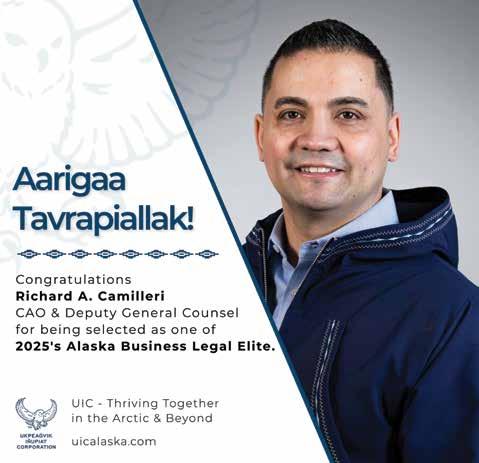






















LAUREN
SOMMER BOSKOFSKY
Landye Bennett Blumstein
Anchorage
MARK P. MELCHERT
Jermain Dunnagan & Owens
Anchorage
MATTHEW COOPER
Davis Wright Tremaine
Anchorage
MICHAEL J. SCHWARZ
Birch Horton Bittner & Cherot
Anchorage
MICHAEL JUNGREIS
Reeves Amodio
Anchorage
PETER SCULLY
Schwabe Williamson & Wyatt
Anchorage
REBECCA E. LIPSON
Ashburn & Mason
Anchorage
ROBERT K. REGES JR.
Reeves Amodio
Anchorage
SARAH C. GILLSTROM
Davis Wright Tremaine
Anchorage
SUZANNE CHEROT
Birch Horton Bittner & Cherot
Anchorage Taxation Law
CASEY CARRUTH-HINCHEY
Shafftel Delman
Anchorage
JONATHAN E. IVERSEN
Stoel Rives
Anchorage
NELSON G. PAGE
Alaska Bar Association
Anchorage
Workers’ Compensation
AARON M. SANDONE
Meshke Paddock & Budzinski
Anchorage
ADAM SADOSKI
Meshke Paddock & Budzinski
Anchorage
AMANDA K. EKLUND
Eklund Law Office
Anchorage
BRYAN HAUGSTAD
Haugstad Advocacy & Litigation Office
Anchorage
CARSON HONEYCUTT
Honeycutt Law
Anchorage
HEATHER M. BROWN
Franich Law Office
Fairbanks
J JOHN FRANICH
Franich Law Office
Fairbanks
LEE D. GOODMAN
The Law Office of Lee D. Goodman
Anchorage
MARTHA TANSIK
Meshke Paddock & Budzinski
Anchorage
MICHELLE M. MESHKE
Meshke Paddock & Budzinski
Anchorage
ROBERT M. BECONOVICH
Franich Law Office
Fairbanks
STACEY STONE
Holmes Weddle & Barcott
Anchorage
ZANE D. WILSON
CSG
Fairbanks

Nominations will be open February 25, 2026 through March 31, 2026.
To be notified when nominations open, contact Tiffany Whited at tiffany@akbizmag.com to be added to the mailing list.
Only active members of the Alaska State Bar Association in good standing may nominate a peer for the Alaska Business Legal Elite.






Same local experts. More resources.
The local team you know and trust. Together, we’ve built a stronger, more dynamic insurance and risk management organization to serve you better than ever.



+ Insurance Program Design + Claim Advocacy/Loss Control + Employee Benefi ts + Surety Services + Personal Insurance is now IMA
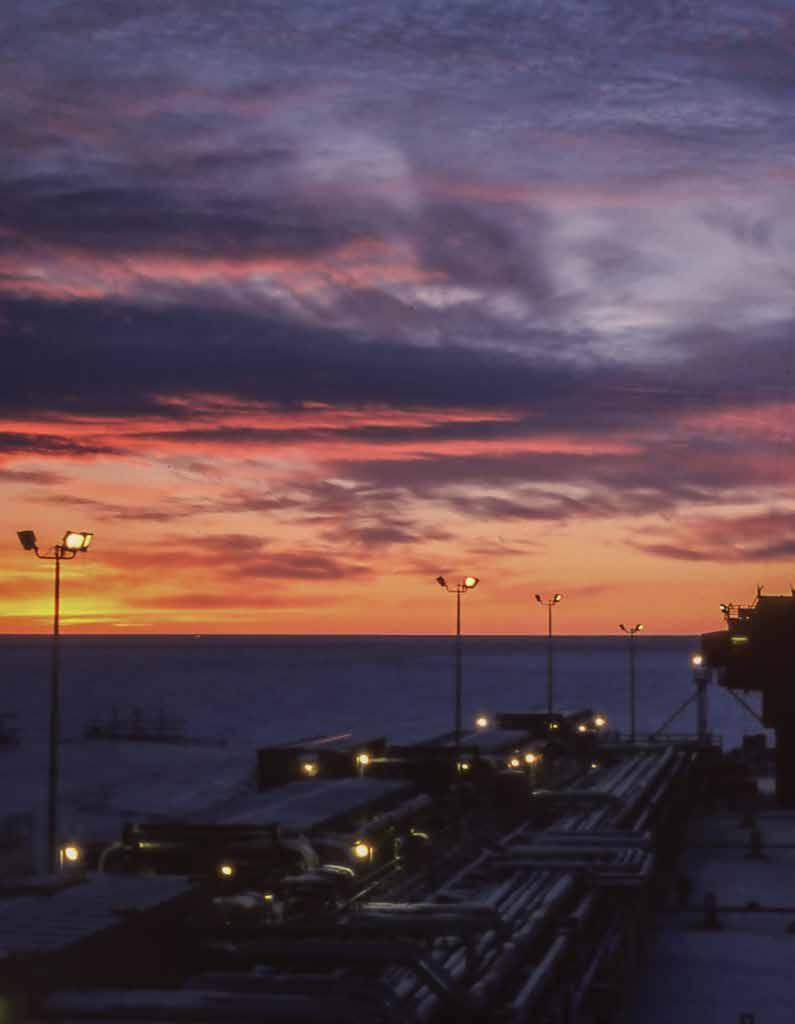
Oil & Gas Special Section
If oil and gas were the sole focus of this magazine, the topic would still justify coverage of practically every other type of Alaska business. Supplies and services for the state’s premier industry are, in microcosm, the same that sustain the economy generally: hauling freight, building infrastructure, provisioning materials and equipment, and accommodating weary workers after a long day’s labor, to name but a few.
Just as oil and gas activity echoes Alaska business writ large, the ups and downs of the industry are writ within Alaska Business, as these pages have covered forty years of boom and bust cycles. This special section reflects on that past while looking ahead to present-day projects with near-future payoffs, as well as fortunes further over the horizon.






























Pumping Up the Volume
New North Slope production already boosting TAPS throughput
By Rindi White
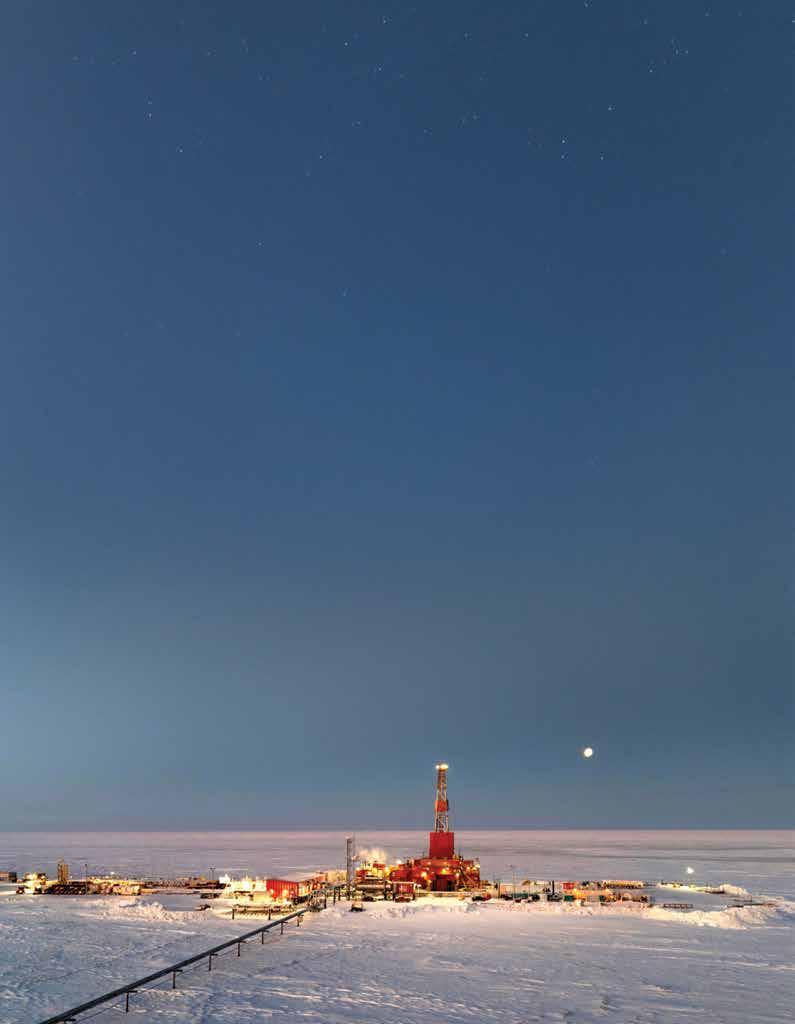
New development on the North Slope has brought hope that daily throughput of the Trans Alaska Pipeline System (TAPS)—which has seen a steady decline since its 1988 peak of 2 million barrels per day—will see a marked upswing.
The flow in the pipeline is already increasing. Alyeska Pipeline Service Company, which operates TAPS, reported in May an average of 478,167 barrels per day moving from the North Slope to Valdez, a significant jump over the 2024 per-day throughput average of 464,784 barrels. Alyeska reports the daily per-barrel throughput average has remained steadily in the 480,000 range since December 2024, peaking at 487,682 barrels per day in January 2025.
What happened in December 2024? The recent upward trend can be attributed largely to ConocoPhillips Alaska, which started adding oil from its Nuna project to the pipeline on December 17, earlier than expected.
And there’s more to come, oil industry watchers say. The US Energy Information Administration’s Independent Statistics and Analysis office, in a March 19 In-Brief Analysis, provided a forecast: “Two new oil developments in Alaska—the Nuna and Pikka projects—are expected to boost crude oil production in the state after decades of decline. If realized, this annual production increase will be the first since 2017 and the largest since 2002.”
New Oil from Nuna
The Nuna project is located at drill site 3T, the forty-ninth drill site developed within the Kuparuk River Unit (KRU), of which ConocoPhillips Alaska is the majority owner.
Work continues on Nuna. The project scope will include twentynine wells and on-pad infrastructure that will pipe the oil back to existing KRU processing facilities. Peak oil from Nuna is anticipated to reach 20,000 barrels per day, bumping up ConocoPhillips Alaska’s estimated annual barrel-per-day production rate, now sitting at 195,000 barrels per day, by about 10 percent.
“The KRU continues to thrive with satellite projects like Nuna,” ConocoPhillips Alaska Vice President of Alaska Asset Development Heather Tash says. “Since 2000, ConocoPhillips has drilled more than fifty-eight exploration wells across the entirety of our North Slope operations, highlighting the significant oil exploration and development opportunities that remain on Alaska’s North Slope, including in our established areas of development. The Nuna project is notable as the first new drill site in the Greater Kuparuk Area in nearly a decade.”
Working Up Willow
While 20,000 additional barrels per day in TAPS is nothing to sneeze at, there’s a larger prize on the horizon.
ConocoPhillips Alaska’s Willow project in the National Petroleum Reserve-Alaska is estimated to nearly double the company’s current production rates, with an estimate of 180,000 barrels per day at its peak. The project is said to be the largest in size and scope to be built on the North Slope in two decades. ConocoPhillips Alaska is on track to have oil flowing in 2029.
The Willow project has been years in the making. ConocoPhillips Alaska
“The decline you have experienced over the last years, I think that that is going to change. We are going to see a real reverse—a turning point—in coming months.”
Josu J on Imaz, CEO, Repsol


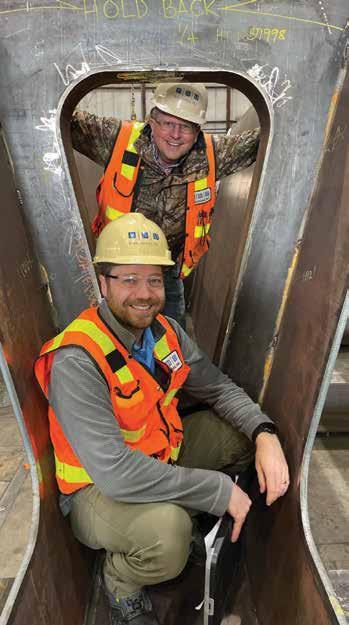
ConocoPhillips Alaska
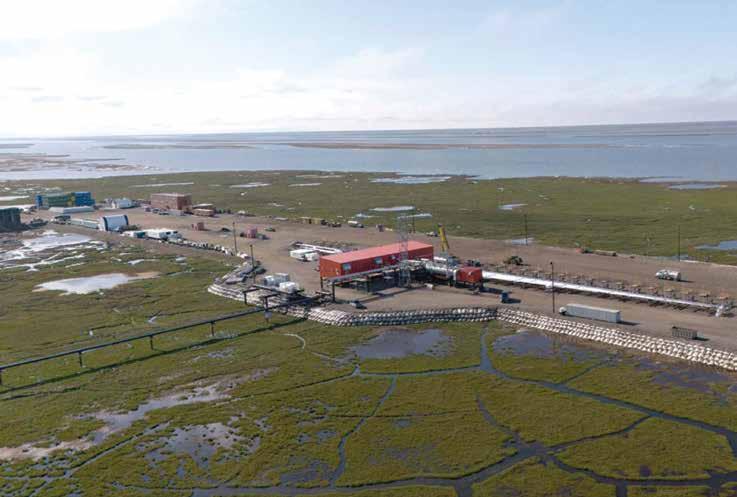
acquired its first leases there, in the northeast portion of the Bear Tooth Unit, in 1999. It was nearly twenty years before the permitting process began in 2018, during which ConocoPhillips Alaska drilled several successful exploration wells. The path from permitting to a final investment decision took five additional years, during which the project ultimately overcame numerous attempts in federal court to stop it. Construction commenced when US District Judge Sharon Gleason issued a pivotal decision in April 2023 allowing the project to proceed. However, appeals and legal arguments continued in court.
On June 13, 2025, the 9th Circuit Court of Appeals issued a decision keeping Willow permits in effect.
While the three-judge panel found a procedural error that the US Bureau of Land Management must address, Willow construction is allowed to continue.
Winter 2024–2025 was the peak construction season for the Willow project, says ConocoPhillips Alaska Vice President of Willow Mo Chahal. The company installed nearly 80 miles of pipeline, executed pipeline installations under a key waterway, built two bridges, hauled and placed gravel, and more.
“We ramped up to roughly 2,400 people on the North Slope in support of the project and are happy to report that we met all our critical winter season milestones, and the project remains on track for first oil in 2029,” Chahal says.
One critical milestone achieved this season, he notes, is that twelve oil field modules built in Corpus Christi, Texas, were transported to Alaska by sealift last summer and, during the winter season, were hauled on gravel and ice roads from Kuparuk to Willow. They are all now in place on the pad.
That’s not the only critical accomplishment this year, Chahal says.
“We opened our Willow construction camp, and that’s important because it allows us to begin construction work on the North Slope throughout the year, as opposed to being completely confined to the winter season. This is the first year we will have year-round construction,” he says.
The Nuna module arrives at drillsite 3T in 2024. Drilling began at the site in September 2024, with first oil achieved in December.
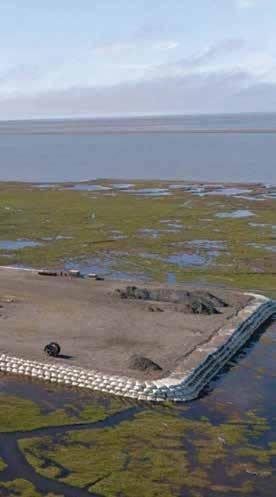
In addition to building out the oil field infrastructure, ConocoPhillips Alaska will also build a permanent camp to house workers at the Willow project, large enough to support around 500 employees.
Pikka Progress
Closer to the horizon than Willow— both in terms of anticipated first oil and distance from Prudhoe Bay—is Pikka. Australian oil and gas company Santos is closing in on first oil for its Pikka Phase 1 project, which is expected to deliver 80,000 barrels of oil per day at its peak.
Pikka, also being billed as a “largest-in-twenty-years” development for the North Slope, is located in the Nanushuk oil formation on state leases. Pikka, Iñupiat for







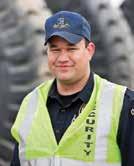






ConocoPhillips Alaska
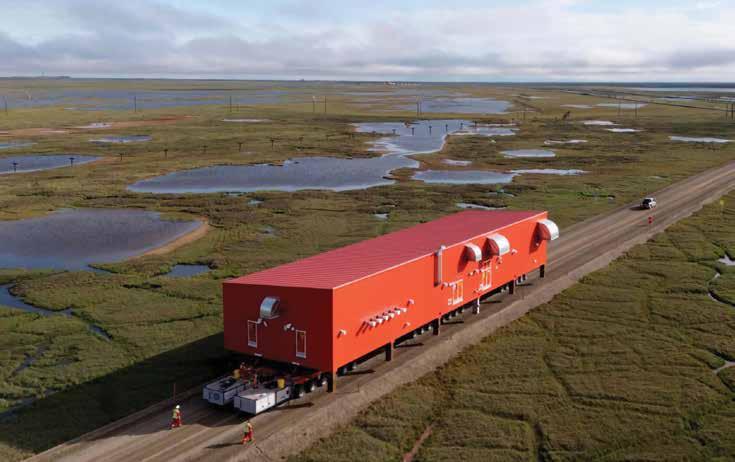
DEDICATED TO OPERATIONAL

EXCELLENCE
THE DUS TEAM
• Security Officers
• Medics
• Firefighters
• Culinary Specialists
• Housekeepers
• Maintenance Specialists
OUR SERVICES
• Integrated facility management
• Onsite security
• Security assessments & trainings
• Culinary and remote catering
• Onsite housekeeping & janitorial


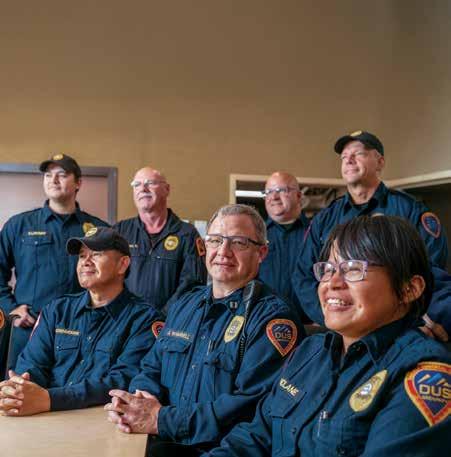
The Nuna module, built in Anchorage, was barged to the North Slope and transported inland to drillsite 3T last summer.
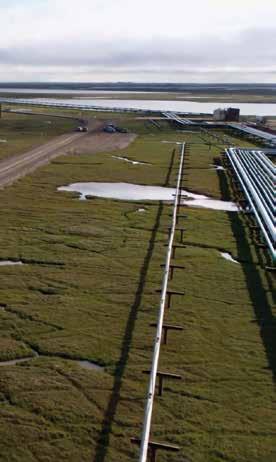
“up there,” is a low carbon-intensity operation that Santos says will have net-zero scope 1 and 2 emissions from first production Santos jointly owns the project with Spanish energy company Repsol, in a 51 percent to 49 percent arrangement. What was expected to be three seasons of construction, conducted by nearly 2,500 workers, was materially finished in two seasons. The company in May celebrated the completion of 120 miles of new pipeline—a remarkable achievement in two winter seasons—by slicing into a 120-foot-long sandwich in its Anchorage office.
Santos President for Alaska Bruce Dingeman told the Alaska Sustainable Energy Conference audience on June 3 that the company




is anticipating it will tap the resource ahead of earlier estimates of second quarter 2026.
“It has been quite the journey for us to get to this point. When Repsol and Armstrong Energy drilled the discovery well in 2013, that was over twelve years ago, and now we’re within twelve months of first oil. So it’s been a long journey, but we’re close to something really transformative,” Dingeman said.
In an announcement in March, Dingeman said the company had reached the 80 percent completion mark for the Pikka project, “putting us in a good position to pursue acceleration to first oil around the end of 2025.”
Adding oil to TAPS isn’t the only benefit from Pikka. Dingeman told the conference audience, “In the









“We’ve helped, I think, the overall economy of Alaska advance during our construction phase. But the real value will come when [Pikka] production is realized.”
Bruce Dingeman EVP and President Alaska Santos
construction of the project over the last two and a half years, we’ve delivered thousands of jobs—both permanent and temporary roles. We’ve made a new investment in downtown Anchorage in our office building, and we’ve helped, I think, the overall economy of Alaska advance during our construction phase. But the real value will come when production is realized.”
Santos officials note that Pikka isn’t the only project the company is working on. Immediately southeast of Pikka, Santos is pressing forward on promising developments in the Horseshoe and Quokka units. Infrastructure built for Pikka could be leveraged to develop these units, they note, which have potential to add tens of thousands of additional barrels down TAPS.
Squeezing Out Every Drop
ConocoPhillips Alaska’s production represents about 41 percent of the current flow in TAPS, at 195,000 barrels per day. Santos is not yet adding to the pipeline flow. Where is the other 60 percent coming from? From Hilcorp, Alaska’s largest oil field operator and one of the largest privately owned oil and gas producers in the United States.
Hilcorp, whose first foray into the state was in tapped-out Cook Inlet in 2011, expanded its operations to the North Slope by buying BP’s shares of the Endicott and Northstar fields, and a portion of the company’s shares of Milne Point and yet-untapped Liberty field in 2014. In 2020, Hilcorp bought everything BP still owned as the company departed Alaska. In so
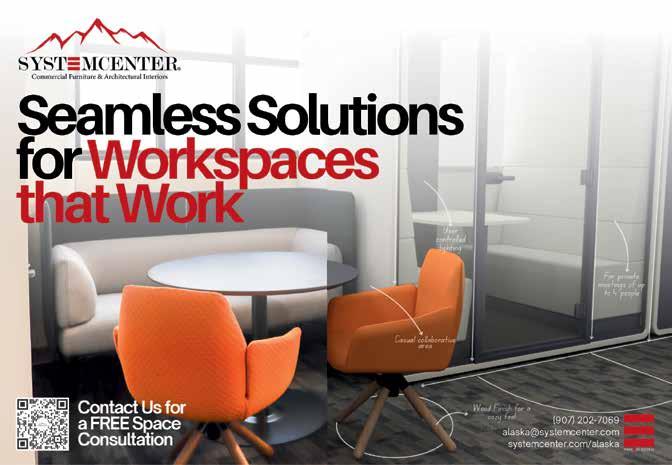
doing, Hilcorp became the primary operator of Prudhoe Bay.
Hilcorp brought its Cook Inlet strategy of using technology to wring oil and gas out of depleted fields into play on the North Slope. This year, Hilcorp announced it has tripled production from the Milne Point unit, where 2014 production was 18,400 barrels per day. In January 2025, Hilcorp said it reached more than 50,000 barrels per day at the field and hopes to reach 60,000 barrels per day in the next four to five years.
Part of the success at Milne Point has to do with a polymer-flood process that Hilcorp embarked on, in partnership with UAF petroleum engineering researchers, in 2018. According to an October 2022 article in the Journal of Petroleum Technology , a publication of the
Society of Petroleum Engineers, the project involved injecting a mix of polymer and seawater into the heavyoil reservoir through two existing injection wells. Previous attempts to use only a waterflood method resulted in about 20 percent oil recovery; the polymer flood resulted in up to 39 percent recovery.
Hilcorp in November 2024 became the largest offshore producer in Alaska when regulators approved its purchase of Italian energy company Eni SpA. The $1 billion deal meant Hilcorp is now owner of Eni’s Oooguruk and Nikaitchuq fields, which produce about 20,000 barrels of oil per day. Add that to Hilcorp’s existing net production average of about 135,000 barrels of oil per day.
Hilcorp officials say they are seeing steady increases in production
at Prudhoe Bay and Milne Point. Overall on the North Slope, the company says Hilcorp-operated fields saw a 5 percent year-over-year increase in production.
Josu Jon Imaz, CEO of Spanish energy company Repsol—the 49 percent owner of the Pikka project—told Alaska Sustainable Energy Conference attendees he is thrilled to be part of the force driving a shift in the state’s oil and g as future.
“The decline you have experienced over the last years, I think that that is going to change. We are going to see a real reverse—a turning point—in coming months, and Pikka going to be part of this history. And for us, I think, being party to this change is very exciting, and is important,” Imaz said.
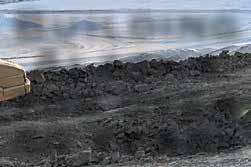
Building Alaska

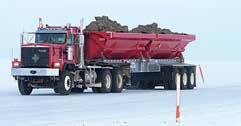
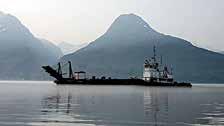
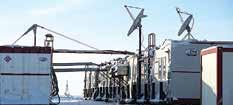
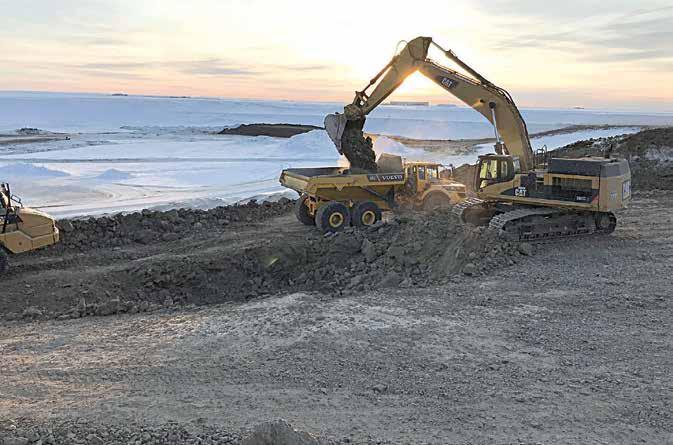
The Long Game
Multiple rolls of the dice for Alaska’s next discoveries
By Alexandra Kay

Al aska’s energy sector is gaining serious momentum through three major developments: promising exploration finds on state land, new federal territory openings, and expanded leasing initiatives that could reshape the state’s energy landscape over the next decade.
Shepherding oil from its geologic hiding place to the global market is a marathon. Between permitting and exploration to the construction of infrastructure and storage facilities, bringing a well to fruition can take the better part of a decade. Alaska’s geologic bounty for the next decade is still hiding underground, but the process is underway to bring it to the surface. Several earlystage developments are setting up what might become the state’s next big energy story.
Armstrong Strikes Again
A discovery called Sockeye-2 in the Lagniappe area east of Prudhoe Bay
boasts a promising pedigree. Bill Armstrong, the Colorado geologist behind the 2013 Pikka discovery that sparked renewed North Slope activity, is at it again.
Armstrong’s track record speaks for itself. Pikka didn’t just create one project—it opened an entire frontier leading to nearby discoveries like ConocoPhillips Alaska’s Willow project. This time, Armstrong’s company Lagniappe Alaska teamed up with major operators Apache and Santos to drill Sockeye-2. Apache holds a 50 percent working interest while Lagniappe and Santos each hold 25 percent in the 325,411-acre block on state lands.
The results have been impressive. APA Corporation, of which Apache is a subsidiary, announced in April that Sockeye-2 drilled to about 10,500 feet deep and hit a highquality reservoir with 20 percent average porosity. During a twelve-day production test, the well averaged 2,700 barrels per day without any
artificial stimulation—exactly what geologists love to see.
Armstrong believes Sockeye-2 could spark a “second renaissance” in North Slope exploration. The discovery sits within a field that Armstrong estimates could contain 700 million barrels of recoverable oil. Importantly, the well demonstrates exceptional natural flow rates without stimulation techniques, which Armstrong calls “old-school geology where the wells are really good.” This unstimulated flow characteristic gives Sockeye advantages over even the successful Pikka and Willow developments.
“We are excited about the performance from the Sockeye-2 well, which could greatly benefit the state of Alaska and the US,” said Armstrong, CEO of Armstrong Oil and Gas, in an April APA press release. “This discovery significantly extends the prolific Brookian topset play first established with our Pikka discovery in 2013. We have identified
analogous anomalies to investigate following on this success.”
APA CEO John J. Christmann added, “The results from the Sockeye-2 flow test are consistent with our expectations, demonstrating high quality reservoir, confirming our geologic and geophysical models and derisking additional prospectivity in the block. We will evaluate the data from the Sockeye-2 well to determine the next steps in our Alaska program.”
The location helps as well. It’s close to existing infrastructure at ExxonMobil’s Point Thomson operation, and since it’s on state land, Alaska would receive full royalties.
“The Sockeye-2 well further demonstrates the potential of the play, presenting an exciting opportunity in an active area of the North Slope with significant existing infrastructure,” said Armstrong in an earlier APA release.
Federal Doors Swing Open
While companies are making discoveries on state land, the US government is opening federal areas that had been off limits. The US Department of the Interior plans to reopen 82 percent of the National Petroleum Reserve-Alaska (NPR-A) to oil and gas development.
The area has been treated as a storehouse for future oil development for more than 100 years. During the energy crisis of the ‘70s, Congress redesignated it from a reserve for US Navy resources to a national asset under the US Bureau of Land Management. Almost immediately, though, parts of NPR-A were
“We are excited about the performance from the Sockeye-2 well, which could greatly benefit the state of Alaska and the US.”
Bill Armstrong, CEO, A rmstrong Oil and Gas

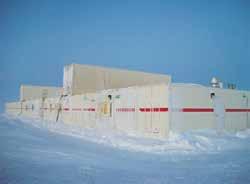
• Arctic tough
• Turn-key set up
• Rapid mobilization
• Custom built

• Easy to relocate

restricted because the value of the surface lands outweighed the potential underground: the Utukok River Uplands Special Area contains critical habitat for the Western Arctic caribou herd, the Colville River Special Area is home to the arctic peregrine falcon, and the Teshekpuk Lake Special Area near the coast is a crossroads for migratory birds from around the world. With those cautions in place, the first leases were assigned in 1999.
NPR-A contains the Willow project, which the Biden administration approved in 2023 despite reluctance to allow drilling on federal lands elsewhere. This reluctance vanished with the return of the Trump administration, which proposed an “Energy Dominance” plan in June 2025 to rescind a 2024
rule that created a presumption against oil and gas activity in NPR-A’s special areas.
“This plan is about creating more jobs for Americans, reducing our dependence on foreign oil, and tapping into the immense energy resources the National Petroleum Reserve was created to deliver,” said Acting Assistant Secretary for Land and Minerals Management
Adam Suess in a June 2025 press release. “We’re cutting red tape and restoring commonsense policies that ensure responsible development and good stewardship of our public lands.”
The policy shift advances the BLM’s process to update its Integrated Activity Plan, aligning with the 2020 framework for managing NPR-A. Although oil companies showed no
interest in a federal lease sale in the Arctic National Wildlife Refuge in January, further leasing in NPR-A may be more enticing thanks to infrastructure ConocoPhillips Alaska has installed to reach its Greater Mooses Tooth Unit and the Bear Tooth Unit, where the Willow project is located.
Cook Inlet Finds New Life
Cook Inlet, Alaska’s most established producing region, continues evolving. The latest state lease sale brought in $872,072 across five leases covering about 21,800 acres—the strongest bonus revenue from a Cook Inlet sale in a decade.
Hilcorp Alaska was the only bidder, extending its holdings near the former Nikolaevsk Unit (where leases still produce gas)

and around the former Kasilof Unit (drilled but never developed before termination in 2016).
But here’s what’s really interesting: Cook Inlet is diversifying beyond traditional oil and gas. In April, the state held its first geothermal lease sale at Augustine Volcano, the 4,133-foot peak forming its own island at the mouth of Cook Inlet. The Alaska Division of Oil and Gas lease sale covered twentyfour tracts across 55,771 acres on Augustine’s north side.
While three companies have expressed interest in the volcano’s geothermal potential, only GeoAlaska ultimately submitted bids. All six of its bids were accepted, adding 11,991 acres to GeoAlaska’s geothermal portfolio. According to GeoAlaska in an
April press release, the Alaska Department of Natural Resources “converted GeoAlaska’s geothermal prospecting permits covering the southern half of Augustine Island into seven geothermal leases with ten-year terms,” securing rights to an additional 10,330 acres. The company now has a total of 22,321 acres at Augustine Island.
According to the same release, subsurface surveys on Augustine Island have identified three shallow geothermal reservoir targets and one deeper reservoir target, about 2 kilometers subsurface, above the island’s magma storage system. The next phase, according to the company, is exploratory drilling to further de-risk the project and refine the P50 power model (a probability model that indicates a
“Sustainable geothermal development could be a growing part of the energy portfolio for Alaskans if this exploration progresses.”






Haley Paine Deputy Director
Alaska D ivision of Oil & Gas
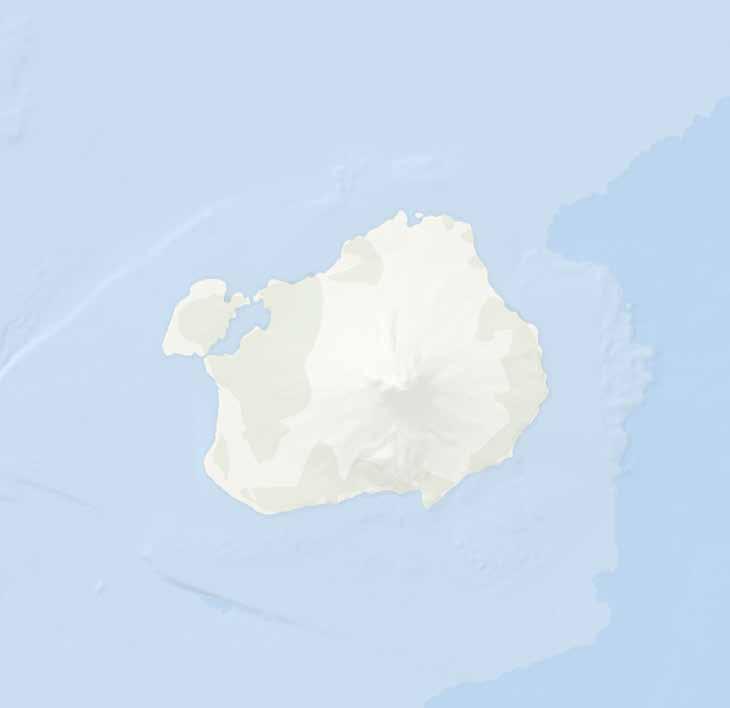
Haley Paine, deputy director of the Division of Oil & Gas, said in a press release about the lease sale, “Sustainable geothermal development could be a growing part of the energy portfolio for Alaskans if this exploration progresses, and our efforts to develop this potential is an important part of the Dunleavy administration’s ‘all of the above’ energy policy.”
Technology Makes the Difference
Recent exploration success reflects major advancements in geological
enabled nearby finds like Willow. 3D seismic processing and interpretation now help identify reservoir characteristics that would have been impossible to detect years ago.
Despite promising results, the route from discovery to production remains a long one, and the next phase of drilling may not take place until 2027. That timeline reflects Alaska’s development realities; logistical challenges, environmental considerations, regulatory processes, and technical complexity all contribute to extended schedules.
combination of successful state land exploration, expanded federal access, and energy diversification creates multiple pathways for production growth and revenue generation. What’s encouraging is the diversity of opportunities spanning different geographical areas, energy types, and regulatory frameworks. This provides multiple shots at success while reducing reliance on any single project. The coming years will determine whether these early activities mature into producing assets that define Alaska’s next major energy expansion.
Oil and gas exploration isn't all that's brewing in Cook Inlet. Augustine Volcano, an island southwest of Homer, drew interest from GeoAlaska at an April lease sale for geothermal prospecting.
Alaska Department of Natural Resources




DRILLING


WELL




CONFINED SPACE TRAINING |
























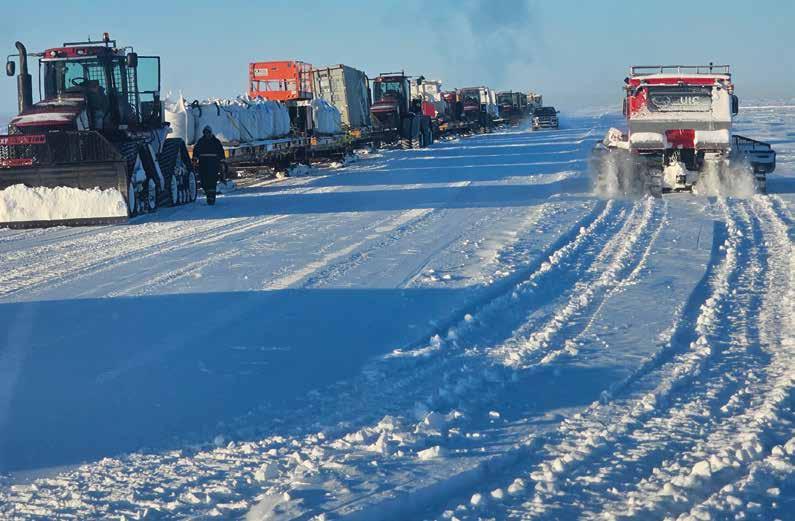
Connecting the Arctic
Perseverance, creativity, and teamwork to supply the Slope
By Vanessa Orr
Ho rrendous weather, impassable roads, severe temperatures, and lack of infrastructure limit the movement of freight and passengers on the North Slope. For companies that specialize in these logistics, however, the challenge is part of the fun—as is knowing that they’re providing North Slope communities with the goods needed to survive, and supplying companies with materials and equipment to operate year-round.
“We genuinely believe we have one of the most incredible jobs on earth,” explains Don Kious, general manager of UIC Oil & Gas Support. A subsidiary of Ukpeaġvik Iñupiat Corporation, UIC Oil & Gas Support works alongside UIC subsidiary Bowhead Transport to move people, freight, fuel, and supplies across
some of the most unforgiving terrain in North America.
“We serve as the lifelines of the Arctic,” he adds. “We’re not just transporters; we’re connectors.”
“Our company prides itself on putting the customer first,” says John Jansen, vice president and general manager of Lynden Oilfield Services, part of the Lynden family of companies. “We are innovative in how we operate, and if we see an opportunity to improve our customers’ operations by helping them with something, we’re big on finding solutions.”
A History of Helping
UIC Oil & Gas Support has been working in the Arctic for more than thirty years, transporting materials and people to, from, and around the North Slope. It carries everything
from construction materials for oil and gas companies to appliances, fuel, and food for village residents.
North Slope operations manager Joseph Barron says UIC Oil & Gas Support has a variety of equipment in its fleet to get the job done.
“We have the largest PistenBully fleet on the North Slope, which is our main piece of equipment,” he explains. “These play a big part in personnel transport, freight hauling, and trail construction. We also have Case IH Quadtrac Steigers, Tucker Sno-cats, custom lowboys, and tracked equipment.”
Lynden has supported the North Slope for decades, providing services even before the Dalton Highway opened in 1977. The company moves “pretty much anything,” Jansen says, from specialty chemicals to groceries.
UIC Oil & Gas Support
“Lynden has a barge service that runs into the Arctic out of Seattle, Anchorage, and Dutch Harbor, as well as a fleet of Hercules aircraft,” he says. “We also operate hovercraft on the North Slope and out of Bethel.”
Lynden Oilfield Services uses its fleet of 15 tractors and 6 PistenBullys to haul freight out to North Slope villages in winter, and it leases its fleet of 110 upright tanks to the oil and gas industry. The company also has 60 500-barrel (or 21,000-gallon) frac tanks.
“There is plenty more stuff, but those are our primaries,” notes Jansen with a laugh.
A Challenging Environment
Working in a place where temperatures can reach -50°F takes a toll on both equipment and Arctic crews. Mechanical failures are common, and if something breaks during a transport, there’s no place nearby to get it fixed.
“You have to be spot-on in your maintenance,” says Barron, noting that one of the biggest challenges crews face in such a remote environment is equipment failure. “Working on the North Slope is unlike anything else in the world. There are severe low temperatures, huge temperature swings, whiteout conditions, and 60 mph winds. But you can’t stop; you have to keep rolling.”
“Our equipment is almost as tough as the people running it,” adds Kious. “Weather delays, mechanical failures, river crossings, ground thaw, and daylight shortages are real—and so is the commitment to never leave a load (or a person) stranded.”
Kious considers the UIC Oil & Gas Support crew to be the toughest, most competent, most resourceful on the planet. He beams, “When shit hits the fan in the middle of nowhere and you’re 300 miles from the nearest road, you don’t want a meeting—you want my team.”
Kious notes that his crew has pulled freight through blizzards, whiteouts,
and mechanical nightmares with nothing but a wrench, a tarp, and “a prayer to our favorite ancestor.”
“Out there, there’s no AAA service,” he adds. “There’s just us, the tundra, and our ancestors judging how well we packed.”
UIC Oil & Gas Support recently moved 1.2 million pounds of freight from the highway terminus at

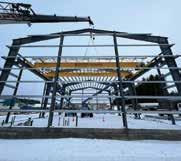
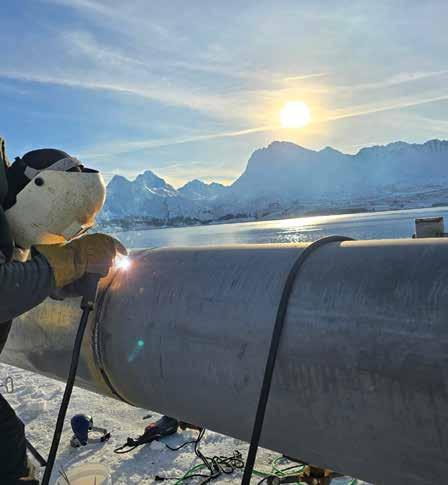
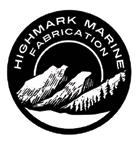
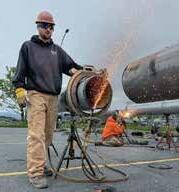
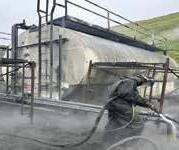

Deadhorse to the northwestern coastal village of Point Lay—a nineteen-day traverse.
“It was a logistical nightmare to be honest,” says Barron. “There was so much planning between permitting and day-to-day travel. Our crews work 18 hours a day on a basic freight haul, so you normally plan for 50 to 60 miles a day. On the Point Lay run, we were hauling twelve pieces of equipment with twenty-two trailers; some days we did 25 miles, and some days we did 70.”
In addition to carrying enough food for the crew, having enough fuel for the journey was a crucial concern because the equipment is run 24 hours a day to keep it warm.
“When you’re planning for slower traverse days or weather delays, that may extend the expected timeline,”
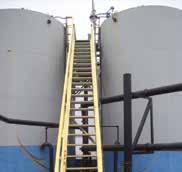
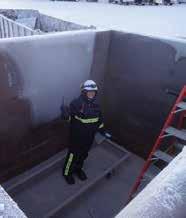


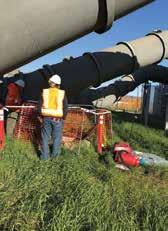


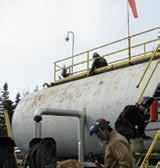
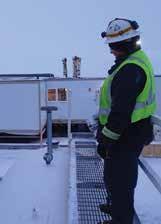
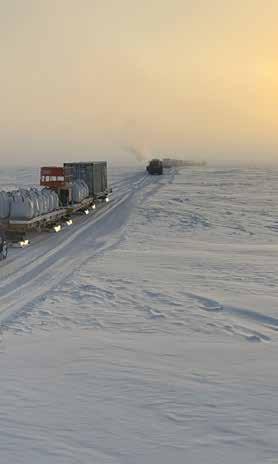
says Barron. “The terrain is also a problem; people think that the North Slope is flat, but it’s not. There are a lot of hills, so when you have a Steiger [tractor] hooked up to three trailers pulling 200,000 pounds, it takes multiple pieces of equipment to get them up a hill.”
Tough Enough
Even when the weather is good, the isolation of working in the Arctic can take a toll on crews.
“Everyone is away from home and living in a camp for two- or three-week shifts or longer,” Jansen explains. “A lot of companies operate ‘heavy’ in winter, so some crews may spend an entire season up there being away from home and dealing with the challenges of living in a harsh, harsh environment.
Arctic transport duty takes a special type of person, he believes. “It helps to have a strong family core at home to deal with things while you’re gone, but you still have to be tough enough to deal with the environment and what is a pretty physically challenging job most of the time. What is challenging in other locations becomes even more difficult when dealing with bad weather and long hours,” says Jansen.
While on the Slope, Lynden crews work 12 to 15 hours every day, seven days a week.
“It’s not easy work, and when they’re done, the only thing to do is eat and sleep,” says Jansen. “We have a gym and things like that, but there’s really not much to do other than have lunch with your coworkers, go







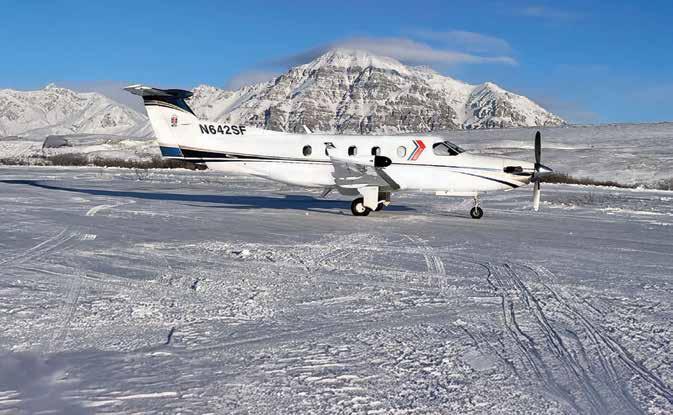
Steiger tractors make up part of a long convoy hauling heavy equipment and construction materials between Deadhorse and Point Lay.
UIC Oil & Gas Support
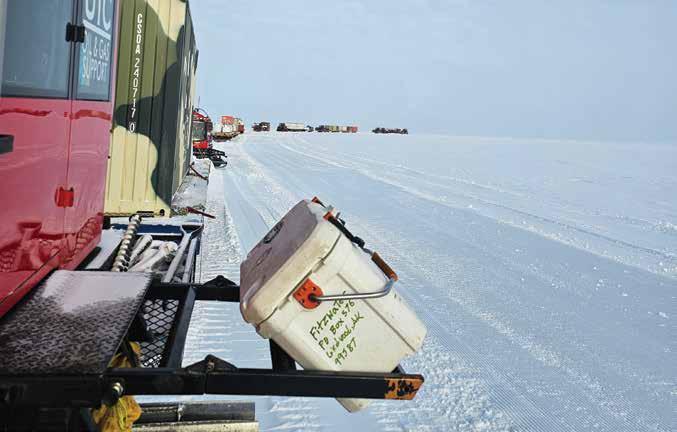
to bed, and get ready to do it all over again the next day.”
Working in the Arctic requires understanding far more than how to operate a machine.
“All of our employees go through an orientation where they do some basic training, as well as Arctic and survival training. But most environmental training is on the job,” says Jansen. “It’s hard to tell someone how treacherous it can be until they’re in it, which is why we show them what to do at the time.”
What’s true for Lynden Oilfield Services applies to UIC Oil & Gas Support too. “Our crew is highly trained; they are HAZWOPER [Hazardous Waste Operations and Emergency Response] certified, bear-guard certified, and have had medical training like first aid and CPR,” says Barron. “But what’s more important is that they know to watch
out for each other; as our ‘feet on the ground,’ they make the calls and have the authority to do what needs to be done.” Barron notes that UIC Oil & Gas Support has an impressive safety record.
“It’s all about the attitude, and you have to love what you do,” he continues. “It’s not your normal job; we ask a lot out of our crew, and they deliver.”
Thinking on Frozen Feet
While every transport on the Slope has its challenges, some are more difficult (and memorable) than others. Obstacles facing the Lynden crew in the spring of 2015, for example, required a huge amount of replanning and repurposing of equipment to keep oil fields operational.
“The Dalton Highway flooded about 40 miles south of Deadhorse,
A long convoy moved 1.2 million pounds of freight from Deadhorse to Point Lay over nineteen days in April 2025.
washing out the road in places and raising the roadbed about 6 or 8 feet with ice after it froze,” says Jansen. “Trucks tried to get through, but it had to be closed down.”
Jansen says Lynden employees worked around the clock to find options to transport large and/ or heavy items or chemicals that couldn’t be flown from Fairbanks to Prudhoe Bay.
“We had to get really creative,” he says. “The oil companies were in panic mode because, just like any city, there are certain absolute necessities that they have to have to continue to operate. They can’t shut down; wells and pipelines will freeze, which are critical.”
The company dealt with the closure by flying in its Hercules aircraft and setting up camps at Franklin Bluffs, 48 miles outside of Prudhoe Bay.
UIC Oil & Gas Support




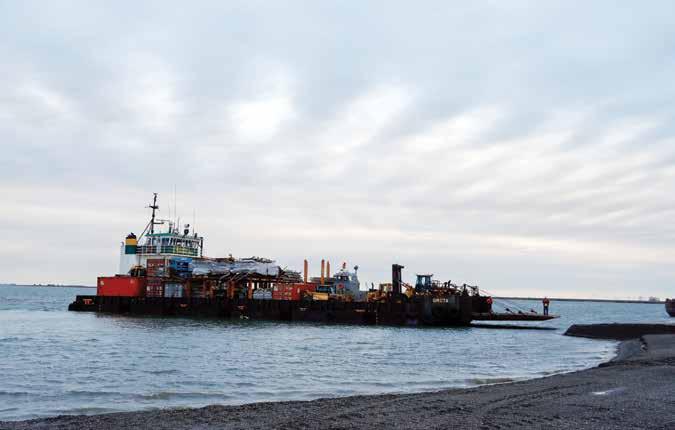
“We were craning and forklifting anything they could offload from trailers onto overland equipment so that we could go around the flooding,” says Jansen. “When the road finally opened back up, it could only be used at certain times of day while they fixed it, so there were hundreds and hundreds of loads of material trying to get through. And, of course, everything was a priority. It was a juggling act.”
End of the Line
Even when the haul road is wide open, timelines can be a problem for freight haulers in the Arctic. Overland transport requires a lot of planning— which doesn’t always happen.
“Unfortunately, freight haulers are the last people to know that there’s any freight to be hauled,” Kious says with a laugh. “An individual may buy a vehicle, take time to shop around for
the best rate, buy it, and then realize that they have to get it from Point A to Point B. We have a week left in the season, and suddenly it’s, ‘Can you take it?’”
As with individual orders, so goes commercial freight. Kious says, “A project may be in the planning stages for three years and suddenly gets funding. The RFP [request for proposal] gets sent out, they award the contract, and now things have to get from Point A to Point B right now.”
A lot of administrative work goes into logistics, which includes coordinating personnel, food, fuel, synchronized shipments, and permitting. On the North Slope, a single trip might require permits from the US Bureau of Land Management, the Alaska Department of Natural Resources, and local permits from the village of Nuiqsut, Arctic Slope Regional
Corporation, or the North Slope Borough, among others.
Making a Difference
While transporting items can be a challenge anywhere, deliveries of goods, services, and even people in the Arctic can make a difference in how companies and communities thrive—and even survive.
“We make life possible in the Arctic; we are passionate about it and go above and beyond to contribute to these communities,” says Kious. “We buy fuel in the villages to ensure that funds go back in, but we call in advance to make sure that what we need is not a strain on the community. If someone breaks down on the trail, we throw them on the transport and take them to where they’re going.”
As he sees it, “We are the protectors of the North.”
Lynden’s barge service runs into the Arctic from Seattle, Anchorage, and Dutch Harbor. Lynden
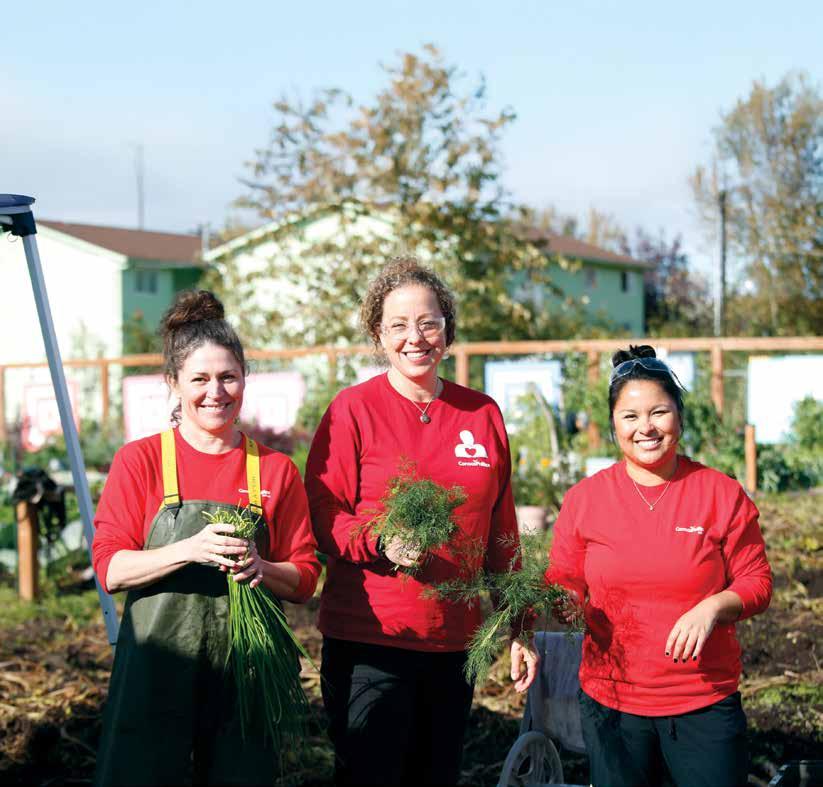

Fo r three days in June, the North Slope was cut off. Flooding from the Sagavanirktok River carved a gap into the Dalton Highway at milepost 315. A culvert collapsed, wiping out 80 feet of road. Even as crews worked to fill the 30-foot-deep gully, more flooding 30 miles north damaged an embankment along the highway.
Yet the haul road was only closed from June 14 to June 17, a much shorter shutdown than a flood disaster in 2015 that required re-engineering the riverbank. Governor Mike Dunleavy declared an emergency to bypass environmental rules to expedite repairs and apply for federal repair funds. The response was sudden and swift; it must be, to maintain access along such a vital artery.
The Dalton Highway provides access to the North Slope, where
Equipped to Serve
Parts and support for industrial customers
By Terri Marshall
numerous projects are underway including Santos’ Pikka Project, ConocoPhillips Alaska’s Willow project, and a number of other pilot projects expected to enhance the state’s oil production. The efficient, safe, and timely transport of goods and equipment needed for these projects is managed by Alaska businesses by land, air, and sea.
Oil and gas development and production is a highly specialized field that requires specific equipment that needs to be rigorously maintained. Several Alaska businesses have found their niche helping the operators operate.
Freight-Moving Equipment
Lynden developed the first regular trucking service in the state with over-the-road service starting in 1954. To persevere through the tough weather in remote locations,
Lynden uses special equipment like its PistenBully snowcats, which pull loads using custom-built sleighs. Additionally, Lynden’s hovercraft can traverse over ice, snow, water, or sand as needed to carry materials.
When transport by road isn’t possible, air transportation may be the best option. Lynden Air Cargo specializes in transporting cargo to challenging and remote locations using a fleet of fourengine Hercules aircraft.
In May, Lynden Air Cargo announced a strategic partnership with Moog to upgrade its fleet of Lockheed Model 382G Hercules aircraft with the Genesys Avionics suite. The partnership marks a significant milestone in the carrier’s commitment to enhance operational efficiency and ensure the highest standards of safety, reliability, and performance.
Matthias Breiter | Lynden
“We are thrilled to partner with Moog Inc. on this critical upgrade. Moog is a leader in avionics technology and will provide stateof-the-art systems to modernize our fleet and advance our operational capabilities. This initiative maintains our commitment to excellence and enables us to better serve our customers while meeting the evolving demands of the aviation industry. It also underscores Lynden Air Cargo’s dedication to continuous improvement, fuel efficiency, and innovation,” says Lynden Air Cargo president Scott Hicks.
The avionics and autopilot modernization program will encompass the installation of stateof-the-art equipment, software updates, and thorough integration testing. The initial aircraft update is scheduled to be completed by 2026.
Meeting Equipment and Service Needs
Founded in 2006 to meet the need for versatile equipment rental on the North Slope, Brice Equipment offers a variety of equipment to aid the oil and gas industry, including aerial platforms, air compressors, articulated rock trucks, generators, and more. All rental equipment is weatherized for the North Slope’s arctic conditions, and the company offers 24/7 support from its two locations, one in Fairbanks and another in Deadhorse.
Additional services provided by Brice Equipment include onsite mechanics, raw-water loading, gravel crushing, maintenance and smart pigging support services, chemical injection services, pipeline
and related facility maintenance and operations, leak detection system monitory and maintenance, flowmeter and valve maintenance and repairs, instrument checks and calibration, emergency spill response training, drills, and exercises, and underground vault cleanup operations.
Equipment Source, Inc. (ESI) commenced operations twenty-five
years ago by reconditioning heaters for the North Slope. The company soon identified the unique challenges posed by harsh winter conditions in the Arctic. In response, ESI began designing and manufacturing heaters that are referred to as “Arctic tough” to ensure safe and warm work environments. According to the company, the ES700 indirect-

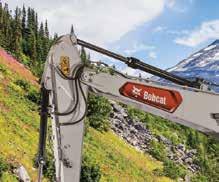
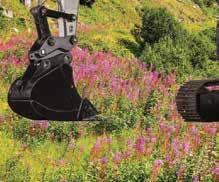


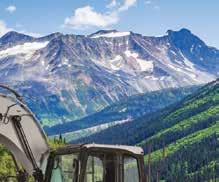










For over 70 years, Craig Taylor Equipment has proudly served as Alaska's premier locally owned and operated equipment dealer.
“It’s not the Holiday Inn Express; in fact, it’s pretty bare bones, but it provides a clean bed in a room for the workers to rest, a place to eat, and a game room with a TV as a place to relax.”
Tyler Loken Manager Olson Creek Alaska
fired air heater is the leading industrial heater in the oil fields on Alaska’s North Slope.
ESI also manufactures the Arctic Enclosure Pump, Tier 3 Diesel Engine Powered Pumps, and the Triplex Pump, which is used on the North Slope oil fields to pump freeze-protection fluids required to prepare wells for longterm storage. These heavy-duty systems are designed to withstand temperatures as low as -50°F.
A subsidiary of Remote Alaska Solutions, RAS Energy offers a variety of equipment rentals with daily, weekly, and monthly rental options available. The company’s rental fleet includes F350 4-door diesel pickup trucks, Doosan 480 and 450 wheeled loaders, Bobcat E85 mini excavators, 750K heaters, 34-foot gooseneck trailers, welders, and spill containment pits. RAS Energy also provides support services including mechanical services, project management, transport, and logistics.
Human Factors
Once the workers and equipment have been transported to the project site, another priority must be met: workers need a place to sleep.
NANA Regional Corporation has been meeting this need since 1974 through its catering and camp services subsidiary NANA Management Services (NMS). On the North Slope, NMS focuses on keeping camps for workers in the oil and gas industry clean, safe, and comfortable for the long work hours. Amenities at many campsites include athletic facilities, movie
theaters, reading rooms, and recreation rooms. Some camps even have swimming pools.
In the West Cook Inlet, Olson Creek Alaska meets this need for the area’s gas industry workers. The specialty lodging and equipment services company takes its name from the stream near Chugach Electric Association’s Beluga Power Plant.
“Employees of the gas industry in West Cook Inlet work shifts from two to four weeks at a time before going home for a break,” explains Olson Creek Alaska manager Tyler Loken. “We provide a place for the workers to stay through the man camps we build. It’s not the Holiday Inn Express; in fact, it’s pretty bare bones, but it provides a clean bed in a room for the workers to rest, a place to eat, and a game room with a TV as a place to relax. There’s no need for a gym because these guys work twelve to fourteen hours a day; they need to rest.”
Olson Creek Alaska currently manages fifty beds between a few different camps. The camps are sometimes built from scratch, but are more often renovated from existing structures, which is typically less expensive. “It depends on the property’s condition,” says Loken. “We don’t necessarily have the luxury of starting from the ground up, so we renovate it to the best of our abilities. If we’re working on land and there is no previous building in place, we will build a new camp. Also, when the property is in rough shape, we decide whether or not we’d just be throwing money away to try to renovate. In those situations, it’s
usually more cost-effective to start with a brand-new slate.”
Keeping the Oil & Gas Industry Thriving
The oil and gas industry in Alaska operates under conditions that require significant logistical expertise. The extreme cold, vast distances, and remote locations pose substantial challenges to every delivery, testing the capabilities, equipment, and perseverance of logistics providers.
Efficient logistics support the development of Alaska's oil and gas resources by facilitating access to and management of reserves located in these extreme environments.
Founded in 1983, Petroleum Equipment & Services, Inc. (PESI) was established with the objective of introducing products and services that were not previously accessible in the Alaska market.
PESI encompasses Alaska Service & Technology, a specialized company that provides an environmentally safe process for cleaning thread-protectors used in the petroleum industry.
The company’s mission to “obtain profitable growth through superior customer service, innovation, quality, and commitment to customers” is evident in its logistics expertise. PESI focuses on ensuring equipment is delivered intact and on time to project sites. The process begins with the manufacturer’s delivery of equipment to one of the company’s three locations: Anchorage, Nikiski, or Deadhorse. Equipment is thoroughly inspected and quality checked before setting up delivery to the project site. PESI established and implemented
a quality management system to formalize this process.
Businesses specializing in managing logistics for the oil and gas industry are not only aware of the challenges but can also proficiently address them on a daily basis. These companies are focused on quality, timeliness, and
reliability. Logistics companies that consistently deliver in these conditions distinguish themselves from their competitors. This reliability is established through a combination of advanced technology, strategic local partnerships, and an in-depth understanding of Alaska’s distinctive logistical environment.


Booms & Busts
The ‘80s crash, the 2014 crisis, and what comes next
By Tasha Anderson
In March the Alaska Gasline Development Corporation (AGDC) and Glenfarne Group announced an agreement for Glenfarne to become the majority owner of Alaska LNG, a project intended to deliver North Slope natural gas to instate markets and beyond.
Under the agreement, Glenfarne acquired 75 percent of AGDC subsidiary 8 Star Alaska, which is developing Alaska LNG as three subprojects: an 807-mile, 42-inch pipeline; an LNG export terminal in Nikiski; and a North Slope carbon capture plant. Glenfarne stated, “Phase 1 of the project will kick off immediately, prioritizing the development and final investment decision of the pipeline infrastructure needed to deliver North Slope gas to Alaskans as rapidly as possible.”
In May, Glenfarne selected Worley to perform additional engineering work and to prepare a final cost estimate “in sufficient detail to achieve final investment decision for the pipeline,” according to Glenfarne, which also stated at the time that it anticipates a final investment decision in 2025. The most recent cost estimate from June 2020 was $38.7 billion, a $5.5 billion decrease from a 2015 estimate when major North Slope producers were part of the venture. The economics of megaprojects have, since 2020, fluctuated massively.
While that analysis continues, Glenfarne completed the first round of its “strategic partner selection process” and said in June that
the company’s potential partners expressed interest for more than “$115 billion of contract value for various partnerships with the project, including equipment and material supply, services, investment, and customer agreements.” Later in June, the company announced that PTT Public Company Limited, the largest publicly traded company in Thailand, signed a cooperative agreement for “strategic participation” in the Alaska LNG project, including the procurement of 2 million tonnes per annum of liquified natural gas from Alaska LNG over a twenty-year term. Combined with other expressed international interest in Alaska LNG, the current energy surrounding Alaska LNG is thrilling: the political administration is favorable, partners are lining up, and markets seem ripe.
Eternal Recurrence
Thrilling, but also familiar.
In the December 1985 issue of Alaska Business , Scott Hawkins, then an associate economist for Key Bancshares of Alaska and the author of “Alaska Trends,” stated: “A North Slope gas line reportedly is looking more and more feasible… the conventional wisdom that a gas line to tidewater couldn’t begin until well into the 1990s may need to be reassessed.”
However, by January 1987, thenExecutive Editor of Alaska Business Paul Laird, in “The Incredible Shrinking Project,” said: “Ever since the idea of developing infrastructure to sell liquefied natural gas to the Pacific Rim was conceived,
“A North Slope gas line reportedly is looking more and more feasible… the conventional wisdom that a gas line to tidewater couldn’t begin until well into the 1990s may need to be reassessed.”
Scott Hawkins, “Ala ska Trends” author, December 1985

the bottom line’s been shrinking. And shrinking. An engineering breakthrough here. A pipeline route refinement there. The net result: a project that’s now conservatively estimated to cost $10 billion… Truth is, however, that despite prevailing, widespread skepticism about the prospects for any plan to deliver North Slope gas to any domestic or export market, Yukon Pacific just might be closer than ever to shrinking TAGS (Trans Alaska Gas System) into reality.”
Ah, 1987. When Yukon Pacific, a subsidiary of transport conglomerate CSX, was a decade away from ending its pursuit of a 42-inch diameter gasline, called TAGS, to Valdez.
Jumping forward to May 2014, Larry Persily, who at the time was the federal coordinator for Alaska
Despite the attention-grabbing subhead, this bulk of this 1986 cover story discussed technological and process advances that oil field operators were making in the mid ‘80s.
Then-executive editor Paul Laird wrote: “North Slope drilling operations that once took thirty days to reach permafrost, thirty days to reach well depth, and another two weeks to move the rigs now take a day to reach permafrost, two weeks to reach well depth, and fifteen minutes to move rigs because advances have made rigs more compact and efficient.”
Similar to the price crash in 2014–2016, in 1986 oil field operators pursued several methods of making oil production more efficient and cost-effective to combat the low-oil-price atmosphere. The article concluded with this thought, still of note today, from then-vice president for Atlantic Richfield Harry Jamison: “There’s a lot of room left for success in Alaska… The oil industry won’t leave, but will it continue to develop ideas for the future?”
March 1986
Illustration by Dee Boyles
natural gas transportation projects, shared an overview of an Alaska LNG project (as it was envisioned at the time) in the Alaska Business article “Alaska LNG Project Gains Momentum.” He listed three reasons the gasline had a chance at success: Alaska’s proximity via cargo ship to Asian markets, the efficiency of liquefaction equipment in Alaska’s cold climate, and the vast known and proven gas resources on the North Slope. He wrote, “Energy analysts worldwide expect global natural gas demand to grow at a strong rate—especially in Asia— for years to come… the world could need a dozen new, largescale liquified natural gas export projects by 2025 to supply that demand… Alaska has a shot of being one of the winners.”
He added: “Of course, any Alaska oil and gas project must overcome the reality of high costs of construction and operations in the far north.” The estimate for an Alaska LNG project, in 2012 dollars, was between $45 billion and $65 billion.
Left in the Dust
It’s now 2025, the year that Persily suggested an Alaska LNG project would need to be in operation to meet market demand. Of course, Alaska LNG isn’t completed and hasn’t even taken a solid position at the starting blocks. Furthermore, Alaska has never been the only interested party racing to satisfy the demand for LNG, and others have already crossed the finish line.
On July 1, LNG Canada announced loading and shipping its first cargo
tanker of LNG to South Korea, officially becoming Canada’s first large-scale LNG export terminal, with a price tag of $29 billion (C$40 billion). LNG Canada is a multinational joint venture comprising Shell, PETRONAS, PetroChina, Mitsubishi Corporation, and KOGAS. Its export facility is in Kitimat, British Columbia, and it’s currently operating two LNG trains with a total capacity of 14 million tonnes per annum. Two smaller facilities in Canada, Woodfibre LNG and Cedar LNG, are already under construction with anticipated completion in 2027 and 2028, respectively.
LNG Canada shares many of the attributes that Persily identified for Alaska LNG in his 2014 article: a known supply, cold climate, and proximity via ocean shipping to Asian markets.
And Canada is not Alaska’s only LNG competitor: other US states have their own plans. In December 2024, Plaquemines LNG in Louisiana shipped its first LNG cargo after starting production in midDecember. According to the Federal Energy Regulatory Commission, as of mid-2025 there are six LNG export terminals approved and under construction and another eleven, including Alaska’s at Nikiski, that are approved but have not started construction yet.
Moment of Inertia
The more the merrier, if that’s what the market demands, right? Not necessarily.
Bloomberg’s “Global LNG Market Outlook 2030: Focus on Supply Risks,” reports, “The global LNG


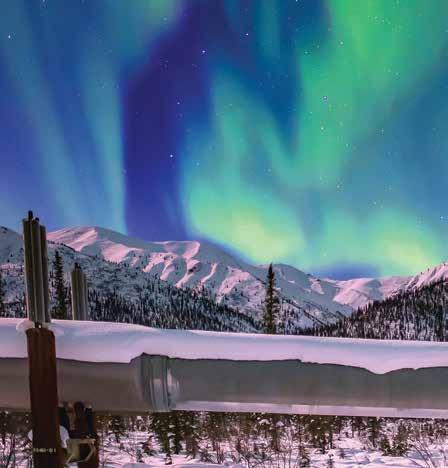
Built on Safety & Customer Satisfaction

Employee Retention






market is on track to see more supply than demand from 2027 onwards. It is poised to become increasingly oversupplied by the end of this decade in the base case, with expected supply 63 million tons higher than demand in 2030, as new liquefaction projects are commissioned.” According to the report, a “long list” of projects lining up for a final investment decision could provide an additional 74 million tons of LNG by 2030; approximately 162 million tons of LNG supply in 2030 is estimated to come from projects already under construction, “with the majority in the United States and Qatar.”
Has Alaska LNG missed its moment yet again? That decision, for the foreseeable future, is on Glenfarne’s desk. While the company is clearly
(and rationally) trying to build interest in Alaska LNG, the positive news that the company has been publishing is no guarantee that the project will move forward. In a June interview with KTUU reporter Joe Allgood, Persily, in his current role as an oil and gas analyst, said: “You need contracts to show you’ve got gas and how much it’s going to cost and when it can be delivered… You need contractors to say how much it’s going to cost to build the pipeline, the gas treatment plant, the liquefaction plant, and when they can be built… You need contracts for buyers at the other end who say, ‘At that price, at that delivery schedule, I will take X million tons, per year, for fifteen to twenty years,’ to cover a mortgage, essentially… That’s what you need, and they [Glenfarne] have none
of that for this project. They have expressions of interest.”
If Alaska LNG were to move forward, there’s no doubt about the short-term positive impact in construction jobs and the economic activity associated with them. Would it be a boom like the construction of the Trans Alaska Pipeline System (TAPS)? Probably not, if only because the state’s population and economy have more than doubled in size since TAPS construction started more than half a century ago. And for those aware of the economic climate in Alaska in the mid-‘80s, it would be best if the boom wasn’t an exact echo.
The Bubble Inflates
The boom during and immediately after the construction of TAPS transformed Alaska. In a September 2015 Alaska Economic Trends article “The ‘80s Recession: Are we in a similar position today?” written by Caroline Schultz, the Juneau economist described the early ‘80s in Alaska as “a period of extreme and unprecedented growth,” spurred by the construction of TAPS and oil revenue streaming into state coffers. The state’s budget doubled from $1.6 billion in 1980 to $3.4 billion in 1981, and its population grew by 36 percent from 1980 to 1985; 60 percent of that came from migration. “Alaska was no longer the least populous state, surpassing Wyoming in the early part of the decade,” Schultz wrote. “Spending created demand for goods and services that was a catalyst for the most dynamic five-year expansion in Alaska’s history.”
In the April 1987 Alaska Business article “Raising Revenues or
Stimulating Growth,” this publication documented state spending per capita in Alaska in 1985 at $3,408 compared to a national average of $723. At the time, then-Governor Steve Cowper wanted to reinstate an income tax to make up for projected budget deficits. Laird wrote: “Critics counter that a revenue shortage isn’t the issue—the level of state government spending is.” Alaska had previously collected a personal income tax but stopped in 1979 when “North Slope petro-dollars began flooding state coffers,” as Laird put it. For all the money that TAPS brought to the state, a mere six years after its completion, Alaska was in crisis.
Of course, it wasn’t just exuberant spending that landed Alaska in a recession.
After TAPS construction ended, approximately 10,000 construction jobs disappeared between 1976 and 1977. As Schultz explains, a small bust was anticipated: “It was well understood that pipeline construction jobs were temporary, and when the project was done, nearly all the job loss was in pipeline construction and support work while other parts of the economy continued to grow,” she wrote.
Unfortunately, the construction lull coincided with a crash in oil prices.
The Bust to Beat
All Alaska Busts
Multiple global factors combined to drive oil to less than $10 per barrel. In the ‘70s, a low supply of oil led to an energy crisis, which resulted in higher oil prices and led many industrial countries to reduce

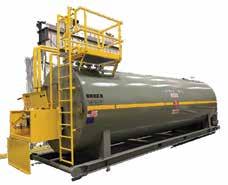
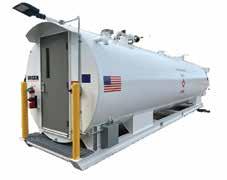






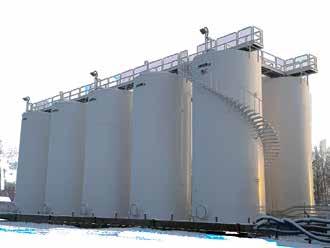










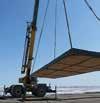
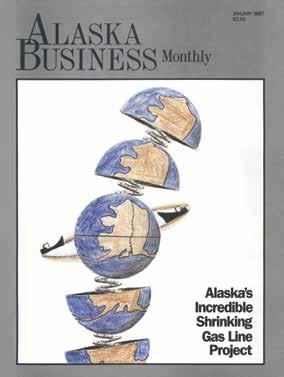
their oil consumption. As prices rose and consumption went down, many looked for ways to end oil scarcity. Alaska, for example, built TAPS, and then-President Ronald Reagan removed price controls from petroleum products in 1981, which allowed the free market to adjust oil prices and ended practices leading to artificial scarcity.
As prices continued to climb, Saudi Arabia, frustrated with the choices of other OPEC members, abandoned its role as a swing producer working to maintain price stability and instead turned to producing at full capacity. Suddenly there was a glut of oil, prices tanked, and Alaska was forced to deal with “petrobesity,” as Laird called it, “a condition of fiscal intoxication
Alaska’s “shrinking gas line project” was a positive take on a
potential LNG
project for Alaska, touting a reduced estimated project cost of approximately $10 billion ($30 billion today).
In 1987, Walter Hickel Sr. was the chairman of Yukon Pacific Corporation, which was spearheading the project, known at the time as the Trans Alaska Gas System (TAGS). Hickel was quoted in the cover article, stating, “The biggest stumbling block at this point is not financing, and it’s not our (price) competitiveness… It’s bringing all the end users together (under a single purchasing entity) to get the project off the ground. As soon as we tie up the markets, we’ll have a project.” If it had been constructed, TAGS would have been a 796-mile, 36-inch pipeline stretching from Prudhoe Bay to Valdez, where an LNG plant would have been constructed about 3.5 miles west of the TAPS terminal. Unlike TAPS, the majority of it would have been buried; since LNG flows cold, there would have been no risk of it melting the permafrost. Yukon Pacific Corporation estimated fifteen LNG tankers would make 280 dockings per year to transport the LNG to Asian markets.
January 1987
Illustration by Charles Lindemuth
resulting from the consumption of too much oil revenue.”
Alaska’s boom was over, immediately succeeded by bottom-ofthe-barrel oil prices. Of the situation, Schultz wrote, “In retrospect, it’s easy to see that the helter-skelter growth was built on a shaky foundation. The crash that followed still haunts many Alaskans.”
From 1985 to 1987, Alaska lost more than 20,000 jobs, and 40 percent of Alaska’s banks failed. During the boom, 36,000 homes were built in urban Alaska, but by the end of 1987, there were 14,000 empty homes in Anchorage; foreclosures peaked in 1988 at 6,821; and by 1989 more than 30,000 total foreclosures had been filed.
Laird, in his January 1988 letter from the editor, offered this gem
on the state’s economy: “How about the difference between an Alaskan oil man in 1987 and a pigeon? The pigeon can still make a deposit on a new Mercedes.” He wrapped his comedy routine with this one: “There’s a new message on Alaska’s bumpers: God, please give us another boom—we promise not to piss this one away.”
Not the Worst; Not Great, Either
Other than the oil spill cleanup bonanza the following year (careful what you pray for, bumper stickers), Alaska’s economy instead crawled steadily out of the hole for the next quarter century. Then came 2014, and Alaskans had flashbacks to the ‘80s.
For the previous decade, Alaska had enjoyed oil prices that soared
above $100 per barrel. Remember the $1,200 “resource rebate” attached to the 2008 Permanent Fund dividend, using the state treasury’s windfall to offset higher energy bills? By 2016, the reverse happened, and the annual payouts were capped as moths flew out of the state’s pockets.
The middle of 2014 marked the start of a multi-year decline that again sent Alaska into a tailspin. In the online article “What triggered the oil price plunge of 2014–2016 and why it failed to deliver an economic impetus in eight charts,” authors Marc Stocker, John Baffes, and Dana Vorisek wrote, “The 70 percent price drop during that period was one of the three biggest declines since World War II, and the longest lasting since the supply-driven collapse of 1986,” citing booming US shale oil production as a leading cause of an oversupply of oil. Natasha von Imhof, in her September 2015 Alaska Business article “Alaska’s Budget Crisis: Myth or Reality?” reported that Rex Tillerson, then-chairman and CEO of ExxonMobil, attributed the price decline to three main factors: weakening demand in Europe, an overestimation of demand in China, and (again) a significant supply influx from North American shale oil.
Specific to Alaska, in their January 2016 Alaska Business article “Alaska’s Economy,” economists Mouhcine Guettabi and Gunnar Knapp wrote: “After rising for many years, state revenues have fallen dramatically since 2012, the combined result of declining oil production, increasing tax-deductible costs of oil production, and a drastic fall in oil prices from more than $100/barrel in August
















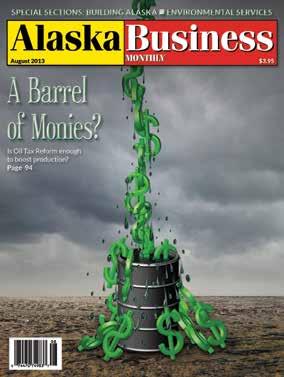
2014 to below $40/barrel in early December 2015. State spending has also fallen since 2013, but not as far or as fast as revenues, resulting in large deficits which the state has funded by drawing down savings reserves. Current deficit levels—likely to exceed $3.5 billion in FY16—cannot be sustained as they would drain available state savings in the state’s Constitutional Budget Reserve Fund within a few years.”
Even without the boom of a massive project, Alaska had nonetheless again acclimated to high oil prices in the early ‘10s and the joy of spending. Von Imhof wrote, “In the last decade, Alaska State general fund spending grew from $2.1 billion in FY2004 to $4.4 billion in FY2014, a 109 percent increase. To put it in perspective, inflation increased only 30 percent during
Despite
the gray clouds,
“A Barrel of Monies?” was optimistic about how the then-recently-passed SB21 would increase investment in the North Slope.
It turns out that author Mike Bradner’s “cautious optimism” was well-founded. Bradner wrote about ConocoPhillips Alaska’s GMT-1, which at the time was in the engineering phase, with permits planned for submission in late 2013. The article said, “ConocoPhillips’ other discovery in the area is GMT-2, which is 8 miles farther west, and which is not being developed at this time.” Today, with further investment, GMT-1 and GMT-2 are now both producing oil.
As is ConocoPhillips Alaska’s Nuna project, which at the time of the article was a potential project held by Pioneer Natural Resources. It sold its North Slope assets to Caelus Energy in late 2013, and ConocoPhillips Alaska acquired Nuna from Caelus in 2019.
Bradner’s article expressed that the investment into these and other projects vindicated the passage of SB21, for which many in the oil industry advocated; SB21 remains the governing regulation for state oil taxes today.
August 2013
Digital Composition by David Geiger
that same time, and population increased just 11 percent.”
In her analysis in Alaska Economic Trends, Schultz explained that Alaska in the mid-‘80s and circa 2014 shared essential similarities—state revenue depended on the value of oil, and Alaska relied heavily on federal spending—but Alaska had also seen considerable changes, such as an older population, larger state savings accounts, a more stable housing market, steady population and job growth in the preceding years, and more services in the industry mix.
In her conclusion, Schultz stated: “Nearly thirty years after the big bust, Alaska has accrued large budget reserves… The state didn’t have that kind of breathing room in the 1980s, and it slashed budgets almost immediately… policymakers have more time now to
address the problem.”
Which (judging by current events) they didn’t do.
…And Today
It’s almost uncanny how Laird’s observations of the economy in 1985 ring true today, a decade after the 2014 crisis. As he put it, “The days of petroleum-plump state budgets are fading, and born-again bottomline weight watchers in Juneau are curbing capital construction’s caloric consumption of currency.”
This year marks yet another when state spending struggles to fit into the tight waistband of revenues (to borrow Laird’s metaphor), and again Alaska’s economy, while it has changed, somehow is in the same position. The question seems to arise every year, blooming with the fireweed: is this the year

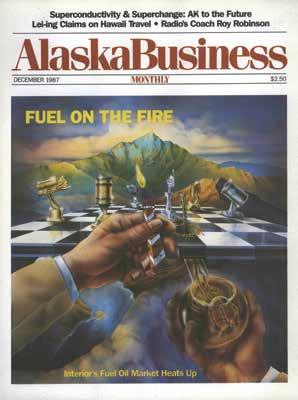
Alaska adjusts oil and gas taxes to find the magic formula that fixes budget problems while somehow encouraging investment across the state? The answer remains elusive.
Per capita spending remains high compared to the national average. In 2022, Alaska spent approximately $20,000 per person, while the national average was in the range of $13,000.
How has this situation sustained since the post-pipeline boom? Well, the budget reserves that Schultz credited with cushioning the shock in 2014 have been spent, leaving the state’s ultimate rainy-day piggy bank: the Permanent Fund. State leaders abandoned the previous statutory formula—a calculation based on half of the statutory net income averaged over the five most recent fiscal
“Fuel on the Fire” covers the oil refining businesses the Interior in 1987, with MAPCO, Petro Star, and Tesoro Alaska Petroleum competing to supply the region with fuel.
According to author Philip Deisher, “In the last two years, and particularly this summer, there’s been a mad scramble among refiners to find retail niches in the competitive Fairbanks heating fuel game.” For example, Petro Star, at the time the newest entrant in the marketplace, made two acquisitions: North Pole Fuel, making Petro Star the first refiner with a retail anchor in Fairbanks, and Sourdough Fuel, the Interior’s at-the-time 'oldest and largest' fuel distributor. In the summer of 1987, MAPCO purchased Jack Coghill’s Nenana Fuel Company, which had wholesaled and retailed fuel throughout the Interior since the ‘50s, and it launched its own fuel distributorship later that year. To round it out, Tesoro became the majority owner of Interior Energy, a relatively new fuel distributor in Fairbanks."
December 1987
by Jerrett Holderby
years—and now legislators and the governor haggle over how much to split between the operating budget and dividend payouts. With the piggy bank cracked open, Alaska needs an answer for what will happen on the next rainy day in ten or twenty years.
Except there is an answer! Same as the old answer: build a new, massive project, rake in more oil and gas revenues tied even more tightly to commodities markets that Alaskans don’t control, and hope that periods of prosperity outnumber low prices.
The boom and bust of the mid‘80s apparently cemented an Alaska mindset that all problems are solved with oil money, and if prices aren’t good, get more oil—and if there isn’t enough oil, try natural gas. With this history in mind, the déjà vu optimism for another 800-mile
pipeline is stunning. This is not a repeating cycle from hundreds of years ago; many of the Alaskans in positions of influence today remember the crash of the ‘80s, and an even larger portion were around during the crisis in 2014.
In forty years of coverage, Alaska Business has printed article after article, expert after expert, leader after leader, advocating for Alaska’s financial future to be controlled by Alaskans—not by Saudi Arabia, Washington, DC, or shale producers in North Dakota. If Alaska LNG moves forward, the resulting revenue would be more wisely directed toward stability in Alaska’s economic future, not just a burst of spending followed by another cycle of head-hanging regret that, once again, we had the money—and changed nothing.
Illustration



















Calm Voices
Crisis communications in emergency management
By Tracy Barbour
Cr isis communication—a strategic approach to corresponding with people and organizations during a disruptive event—is an important aspect of emergency management. It involves not only the dissemination of timely and accurate information but also building trust through transparency and proactive engagement.
Crises are inevitable for every organization, no matter its size or the services it provides, according to Heather Cavanaugh, Alaska Communications’ vice president of external affairs and corporate communications.
“For a company like Alaska Communications, which provides critical [telecommunications] services to the community, having
crisis communicators is nonnegotiable for us,” she says. “Our crisis communication team is an integral part of our company’s larger crisis management team.”

newsletters, proactive news releases, customer emails/letters, and unique corporate web and intranet pages with regular updates.

For example, Alaska Communications maintained a steady flow of information at the onset of the COVID-19 pandemic. This included creating more than 100 proactive social media posts; more than 50 personalized letters to Alaska congressional, legislative, and community leaders; and internal story and email updates for employees. The team also produced special-edition employee
“Through ongoing communication with employees, customers, government leaders, vendors, and social media followers, we were able to keep constituents safe and connected throughout the ongoing pandemic,” Cavanaugh says.
Proactive communication is key during a crisis, says Kate Dugan, Valdez communications manager at Alyeska Pipeline Service Company. This philosophy proved invaluable during a major incident involving

Heather Cavanaugh
Alaska Communications
Kate Dugan Alyeska Pipeline Service Company
Natalia | Adobe Stock

the Trans Alaska Pipeline System (TAPS) in 2011. In the middle of winter, workers discovered oil leaking from auxiliary piping at Pump Station 1 on the North Slope.
Experts at Alyeska, the consortium of oil companies that own and operate TAPS, determined that resuming operations quickly—even before the leak was completely secure—was vital to preventing further complications.
“There was a concerted effort to communicate early and transparently with regulators, legislators, and other stakeholders,” Dugan says. “That built a deep understanding of the issues and created trust, and they permitted us to restart TAPS.”
Clear, Consistent Messaging
In a world run by a non-stop news cycle and social media, transparency is key, according to Bri Kelly, a vice president at Thompson & Co. (T&C), a fullservice Anchorage public relations (PR), digital, and advocacy agency.

Maintaining clarity and consistency begins with pre-established crisis communications management protocols. During a crisis, it’s essential that everyone is aligned around a central messaging hub, ideally overseen by the core team leadership and supported by its PR advisors or communications team.
“People need actionable information—not speculation or jargon,” Kelly says. “Consistency doesn’t mean repeating the same message but ensuring that updates






Bri Kelly Thompson & Co. | Lena Lee Photography
stay aligned with your core values and previously shared facts, even as new information emerges.”
The best way to maintain clear and consistent messaging is to start with a situation fact sheet and message box, according to Laurie Fagnani, founder and CEO of MSI Communications, a full-service advertising agency. The message box will evolve as new information comes to light. But putting messages down on paper allows management, including legal and operations, to vet comments for accuracy and risk.
company’s mission and values and be able to speak to them. In daily work and in a crisis, organizations should ensure they communicate first to their employees.

Fagnani emphasizes that there are standard ways for organizations to communicate during a crisis. This includes Unified Command and the Incident Command System, which are often used by the government and other entities during emergencies. “The protocols and standardization of the response steps allow practitioners to step into their assigned role and immediately get to work,” she says.
Common tactics for conveying messages during a crisis include press releases, press conferences, incident tours, multimedia press kits, incident response websites, social media use, and town hall meetings.
Heidi Embley, the owner of Embley Communications, stresses the importance of transparency, honesty, and adherence to values in crisis communication. She also recognizes employees’ role in the process. Embley says she feels that all employees should know their
established approval process in the middle of what can be a stressful situation.”

“Not only do they owe it to them as members of the team but employees will serve as the company’s unofficial spokespeople,” says Embley, who’s seen both sides as a TV reporter and as a spokesperson for the Anchorage School District.
“During a crisis, members of the public will seek out employees to try and find answers and gain insight.”
Crisis Communication Plan Components
Every organization and business should have a crisis communications plan to guide actions in an emergency. When developing a plan, MSI Communications identifies the roles and responsibilities of each team member according to positions established in its Incident Command System Joint Information Center. It identifies audiences and then creates a customized stakeholder contact list. “The very first tactic is usually a holding statement, which may or may not be used by the media,” says Karen Miovas, the agency’s director of client services.
“It is very helpful to get something in writing and formalize the
Companies dealing with an evolving situation or a one-time incident need alignment on their fact sheet and message box, which may be a pre-approved list of key messages that can be communicated. “Your dedicated crisis comms [communications] team needs to know what they can and cannot say to the media,” Miovas says. “The community liaison team and the phone bank also use this information in their direct communication with interested members of the public and VIP stakeholder groups.”
To Miovas, an effective crisis comms plan includes tactics such as “widening your bench.” Formal responses should identify other response participants, such as state troopers, wildlife officials, local police/fire department, and the US Coast Guard. “Oftentimes, the nature of the crisis event determines which state and federal entities must be involved,” she says. “Each team member brings a different perspective to the response and demonstrates to the public that you are working cooperatively to respond to the incident.”

According to Embley, organizations should begin their planning with a checklist of what needs to happen in a crisis. And they should have a checklist for each of the key positions on their leadership team. For communicators, for example, they should determine their key audience, how they want to communicate with them, and what they want to say. “A crisis
Laurie Fagnani MSI Communications
Heidi Embley Embley Communications
Karen Miovas MSI Communications
comms plan should include draft questions, answers, and resolutions for potential scenarios,” she says. “It also should include considerations on what to say for those negatively impacted by the situation.”
Organizations should also consider how often and how quickly to respond to a crisis. They don’t have to know all the answers to make an initial statement, but they do need to be accurate. “At the very least, start with an acknowledgement of a situation and then let your audience know when you will share more, whether that’s in an hour, a day, or after a specific task occurs,” Embley says.
Communicating Strategically and Successfully
During a crisis, the greatest challenge is often information
overload or uncertainty, Kelly says. Early in a crisis, facts are evolving, yet pressure mounts for immediate answers. Organizations must strike a balance by communicating quickly while ensuring information is appropriate, accurate, and empathetic.
Another challenge is ensuring message coordination across teams, platforms, and time zones. “Without a centralized crisis communications response protocol, inconsistent statements can confuse stakeholders or damage trust,” she says.
Transparency is not just ethical; it’s strategic, Kelly maintains. “Admitting what you don’t know or where you erred can build credibility and defuse speculation,” she says. “In Alaska, where communities are tight-knit and trust is paramount, engaging
“A crisis comms plan should include draft questions, answers, and resolutions for potential scenarios… It also should include considerations on what to say for those negatively impacted by the situation.”
Heidi Embley Owner Embley Communications
Ads Just Got More Awesome Meet Chelsea!
In the rugged heart of Alaska—where mountains carve the sky and silence is broken only by the wind—lives a woman shaped by both the land and the future. A born-and-raised Alaskan, my roots run deep: from organizing tools in my father’s auto body shop and singing in the paint booth to standing beside my grandfather at political events, applauding innovation and purposedriven leadership.
Surrounded by postcard-worthy beauty, I learned early the value of hard work, family, and community. That foundation guided me through a diverse career, from auto repair to healthcare, oil and gas, and now media. Each step
taught me something new, but the common thread has always been clear communication, authentic relationships, and a passion for helping others succeed.
This new chapter follows the retirement of Janis Plume, who served Alaska Business clients for a decade. I’m honored to carry on his legacy— acting as a connector, problem-solver, and advocate for Alaska’s business community. Whether working with engineers, stakeholders, or small business owners, I strive to bridge gaps, build trust, and highlight the people and companies moving our state forward.
Alaska gave me everything—and if you ask what drives me, the answer is simple: family, community, and the breathtaking spirit of the 49th state.

Chelsea Diggs is a strategist and connector inspired by the beauty and landscape of Alaska. Living in Alaska has shaped her adaptive approach: she’s resourceful in challenging conditions, values community support, and knows that small actions can yield big transformations.

CHELSEA DIGGS 907-257-2917 | chelsea@akbizmag.com
Best Practices for Crisis Communication

By Tracy Barbour
Crisis communication should be fully integrated into an organization’s business continuity process with a wellplanned communication component throughout each level of response: planning/training, mitigation, response, and recovery, says Alaska Communications’ Heather Cavanaugh. But having a plan isn’t enough; organizations must rehearse it. “Get all members of your crisis response team together at least once per year to rehearse a mock scenario,” she explains. “Debrief after your exercise to identify what worked and what didn’t.”
Over-communication is often acceptable in a crisis. “It can be instinctual to want to wait until you have all the facts before saying anything, but you can’t operate this way in a crisis,” Cavanaugh says. “Share what you know when you know it.”
Monitor social media to hear what customers or the community are saying, Cavanaugh says. Respond as appropriate and show empathy. After the crisis subsides, convene an after-action review.
Bri Kelly of Thompson & Co. emphasizes that internal communication should be a high priority. “Employees are not just stakeholders; they are the ambassadors who will relay your message to the broader public, clients, and partners,” she says. “That means they must be informed first, ideally before public statements are issued.”
Culture affects how people receive information, Kelly says. In Alaska, with its rich Indigenous heritage, it’s vital to consider language preferences,
communication norms, and whom to utilize as trusted messengers. “Best practices for crisis communication include partnering with local leaders and cultural liaisons, avoiding onesize-fits-all messages, and using plain language and even visuals when possible for accessibility,” she says. “Messages must be culturally authentic, acknowledging community values, historical context, and validating concerns.”
Kelly also recommends regular updates even if the message is “We’re still assessing, and we’ll share an update as soon as we have one.” She warns, “Silence or information gaps give way to anxiety and potential spread of misinformation.”
The public expects immediate information, so one of the fastest ways to reach people is through social media, according to Heidi Embley of Embley Communications. She advises, “Have active accounts on platforms that make sense for your organization and are foundational for your brand. Having a crisis communication plan that involves social media is a must in today’s world.”
Communications professionals must ensure their efforts are visible and understood by the public, says Alyeska Pipeline Service Co.’s Kate Dugan. “Your response can be going well, but if you don’t have a capable team to communicate about that effort, the response can still be seen as a failure,” she says.
Finally, Laurie Fagnani of MSI Communications cautions, “Never, ever lie to the media. You will lose credibility. Stick only to the approved messaging and facts that are available at the time of release.”

in authentic, culturally attuned communication goes a long way. Honesty, especially when paired with clear, actionable steps, is remembered and helps with an organization’s resiliency after a crisis.”
During a crisis, it’s best not to rely on others to tell their version, says Madison Richards, a project manager at MSI Communications. “Timely sharing of factual information assures the public that you are concerned and the situation has your attention,” she says.
Richards adds, “Your dedicated crisis team will usually have a pre-existing relationship with the
media. They should have some working knowledge of who to contact and what kind of coverage you can expect to receive. In Alaska, the list of media is not very long, so it’s important to protect your relationships by only delivering factual information during an incident.”
Prioritizing Training and Preparation
Organizations can predict 90 percent of the crises they might experience, Kelly says. And because they can predict crises, they can plan for them. Whether the threats are natural disasters, cyberattacks, supply chain disruptions, et cetera, companies can create tailored crisis response scenarios and train for each of them. Crisis preparedness hinges
“As practitioners, we say, ‘accurate news is good news.’ The goal of the crisis comms team is to become a trusted source of factual information for all audiences. Achieving this requires good, factual communication as often as the situation requires.”
Laurie Fagnani Founder and CEO MSI Communications

Madison Richards MSI Communications
on planning, training, and being nimble in any scenario.
“Crisis communications management plans must go beyond the booklet sitting on your desk or saved to your desktop,” Kelly maintains. “Regular drills and tabletop exercises with leadership and staff help expose gaps and refine processes. Equally important is keeping your appendices updated, including your contact lists, holding statements, and communication tools. Newsletters, social media content, and internal messaging must be functional and accessible.”
To enhance its crisis preparedness, Alyeska conducts several large emergency response exercises annually, bringing together incident management teams, regulators, and industry partners. The drills simulate crises, such as oil spills from tankers or pipelines, and are frequently evaluated by third parties.
“Our public information team gets bombarded with simulated questions from the public and media,” Dugan explains. “We practice the process of answering questions, tracking down accurate and timely information, and putting it into a format that builds credibility and trust.”
Alyeska organizes smaller, focused training sessions on different aspects of crisis communication. Team members from various divisions work together regularly, fostering seamless collaboration during emergencies.
Businesses that have an in-house communications lead or team can invest in training through the Public Relations Society of America (PRSA), Embley says. “PRSA has excellent resources and a strong code of
“Crisis communications management plans must go beyond the booklet sitting on your desk or saved to your desktop… Regular drills and tabletop exercises with leadership and staff help expose gaps and refine processes.”
Bri Kelly Vice President Thompson & Co.
ethics to help guide and support communicators,” she emphasizes. “The PRSA Alaska Chapter has a reputation of being one of the best in the country, due largely to its members—practitioners statewide— who are the top of their field and regularly implement best practices.”
But if a company does not have an in-house communication function, it can build relationships with solo practitioners, a communications/ PR agency, and other external experts who can help if needed. “Many practitioners can provide customized plans, checklists, media contact lists, and even conduct mock crisis trainings with your staff,” Embley says.
Mistakes and Lessons Learned
A common mistake that companies make with crisis communication is having a plan and not practicing it, according to Embley. They also assume the crisis is over once the immediate reaction is complete. But often a crisis continues to unfold, further threatening an organization’s reputation. “Solid communication and effectively executing your mission and values will help mitigate continued challenges,” she says.
A lesson learned for Alaska Communications is to have preapproved holding statements. For example, in the event of a network disruption, its communications team can immediately post an acknowledgement on social media and on its phone tree. “This helps reduce phone calls to our technical support staff and lets our customers know we’re aware and working on the issue,” Cavanaugh says. “It also gives us time to activate our crisis management team, investigate the issue, and start developing statements that contain more detail.”
As a tactical improvement, Alaska Communications has reduced the number of people needed to approve crisis messages from five or six individuals down to two or three.
“Reducing excess layers of approval has improved our response time and allowed other subject-matter experts to focus on their specific area of the crisis response,” Cavanaugh says.
Alyeska adheres to a precise philosophy with its approach to crisis communication: no surprises.
“We do our best to communicate


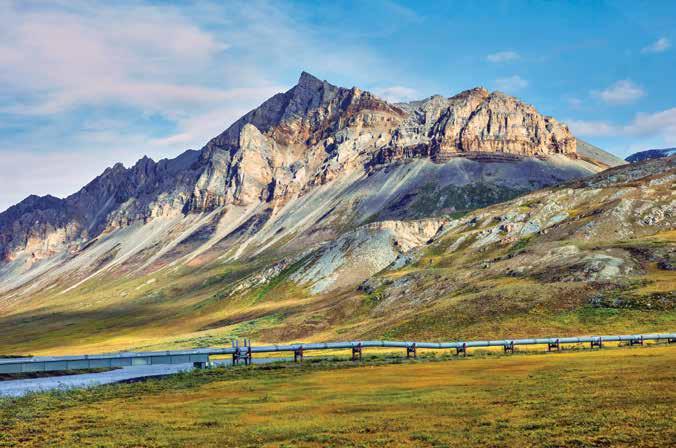
early and often,” Dugan notes. “The first time you talk to a stakeholder or the press is ideally not in the midst of a crisis. You want them to get to know you and know your issues before you’re in firefighting mode.”
Dugan stresses the importance of preparing for potential crises by drafting talking points and communication plans for issues— even if they never escalate. “I don’t regret the time I’ve taken because it builds capacity; it’s a library of information,” she says. “Sometimes issues can reemerge, or there might be a similar issue where we can use that groundwork, and it saves time.”
How can companies gauge the success of crisis communications? According to Fagnani, companies often rate success as “no news is
“The first time you talk to a stakeholder or the press is ideally not in the midst of a crisis. You want them to get to know you and know your issues before you’re in firefighting mode.”
Kate Dugan Valdez Co mmunications Manager Alyeska Pipe line Service Company
good news” and applaud efforts to keep them out of the news. She clarifies, “As practitioners, we say,
‘accurate news is good news.’ The goal of the crisis comms team is to become a trusted source of factual information for all audiences. Achieving this requires good, factual communication as often as the situation requires. However, a lack of negative media coverage or social media discourse can be a measure of success.”
To Embley, one way to measure success is to evaluate the company’s reputation, whether that’s quantitatively, such as potential changes in sales, or qualitatively through anecdotal feedback. She says, “One of the truest measures of success is not by making everyone happy but by making sure your response was empathetic and your organization honestly and thoughtfully supported those impacted.”

Port MacKenzie
Alaska’s gateway to opportunity
Port MacKenzie is not just another port; it’s a distinctive hub with thousands of acres of land zoned specifically for industrial and commercial development. The land encompasses two miles of shoreline reserved for future port infrastructure and four square miles of tide and submerged land, eliminating the need to acquire state tideland leases. With the deepest draft dock capability in the Upper Cook Inlet, the port is arguably the area’s most valuable piece of real estate for opportunity and economic activity.
“Port MacKenzie is a gateway to the world,” says Port Director David Griffin. “We have deep water and can operate year round. And being so close to the [Don Young] Port of Alaska in Anchorage, we are located on a well-travelled marine highway, providing our port with regional maritime resources—including the US Coast Guard, pilots, and tug operators.”
PRIME LOCATION FOR DEVELOPMENT
The geographic advantages of Port MacKenzie cannot be overstated. Situated in the Matanuska-Susitna Valley in an area known as Point MacKenzie, the port is just two miles from Anchorage by water. And it’s the only port in Alaska with more than 9,000 upland acres (14 square miles) dedicated to commercial and industrial development. The port is within the Port MacKenzie Special Use District or Port District, which includes three-phase power, paved road access, and electrical transmission lines, along with a substation to support growing industries. The Beluga natural gas transmission line runs 15 miles north of the port by road, ensuring reliable access to energy resources.
The Port MacKenzie and Port District lands are near the maritime industry of the Port of Alaska and Joint Base Elmendorf-Richardson. If key infrastructure is compromised on the Anchorage side, Port MacKenzie could be employed to move cargo and personnel to points further north
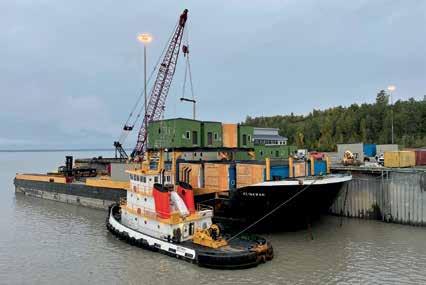
in Southcentral and the Interior. Griffin emphasizes: “The Point MacKenzie region as a whole is primed for growth due to the significant amount of developable and privately owned property, coupled with gas and electrical transmission lines, an agricultural district, planned road developments to the West Susitna region, and the completion of rail infrastructure along the Port MacKenzie Rail Extension.”
Port MacKenzie is well-equipped to handle increased demand and development in the coming years. This is primarily due to its strategic design, expansive facilities, and capabilities. Port MacKenzie’s infrastructure was designed to export various types of cargo, including natural resources like wood chips, coal, ore, gravel, and fuel. Yet in many ways, the port is still in its infancy. The barge dock was constructed in 2000; the deep-draft dock was completed in 2004, receiving its first ship in January of 2005.
“The port was located on a deepwater channel that is naturally scoured, alleviating the need to do any maintenance dredging,” Griffin says. “The deep-draft
dock is designed to be operable on a yearround basis, and the mooring dolphins and breasting dolphins are outfitted with quick-release mooring hooks and motorized capstans. The dock is only two miles away from Cook Inlet Tug & Barge, the company that provides tug support for vessels navigating the inlet.”
ADVANCED CAPABILITIES
With its deep-draft dock, barge dock, and barge bow ramp berth, Port MacKenzie offers some of the most advanced maritime facilities in Alaska. In 2010, the port expanded the barge dock wharf to 15 acres, doubling the size of the staging and laydown area. It reconstructed the bow ramp berth in 2018 and installed protective sleeves on the deep-draft dock piles in 2024. In 2026, Port MacKenzie plans to construct a barge haul out ramp.
Port MacKenzie’s deep-draft dock stretches 1,200 feet and maintains water depths of 60 feet at low tide, capable of accommodating large bulk carrier ships like those navigating the Panama Canal. Alongside this, its 375-foot-long barge dock maintains water depths of 20 feet
THE KLINKWAN BARGE WAS LOADED WITH MODULAR HOMES FOR THE WESTERN ALASKA VILLAGE OF MERTARVIK.
Photo Credit:Port MacKenzie
at low tide, and the barge bow ramp berth allows for roll-on/roll-off cargo operations at high tide.
A GOOD BACKUP OPTION
Port MacKenzie gives barge and shipping companies another viable option for transporting cargo and freight into and out of Southcentral. It operates as an open port, which enables shippers to bring their own equipment and personnel for loading and unloading operations. Port MacKenzie does not provide stevedore services, so shippers can use their own employees or hire private contractors for their logistics. But the port has a conveyor system still in use for cargo handling, allowing users additional operational flexibility.
Having a waterfront facility just two miles from Anchorage, Port MacKenzie is in a unique position. Being close to a port that handles freight and cargo twice a week year-round shows that its waterway is navigable and supports commerce. And although it’s a separate entity, Port MacKenzie is also a municipal port and public facility. This means the port can pursue grant funds from various federal sources—including the US Department of Transportation’s Maritime Administration, US Department of Defense, and Federal Emergency Management Agency—which enhances its funding opportunities.
While Port MacKenzie is relatively young, it is increasingly becoming more of a consideration for industry. And at this stage, it’s a port that makes logical sense to develop due to its location, capabilities, and ability to expand. As the state grows and develops its natural resources, Port MacKenzie is well suited for moving those commodities to market. “Our goal is to become an industrial hub that’s capable of meeting the needs of our local maritime industry while doing business with the world,” Griffin says.
With its strategic location, extensive resources, and vision for expansion, Port MacKenzie is a promising gateway to the future. Reach out today to discover how the port is poised to support Alaska’s growing industries and commercial ventures.
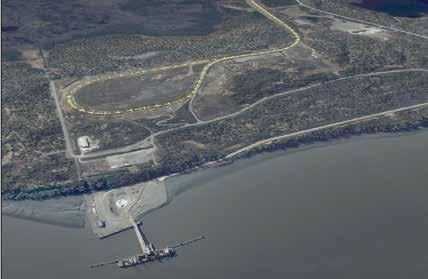
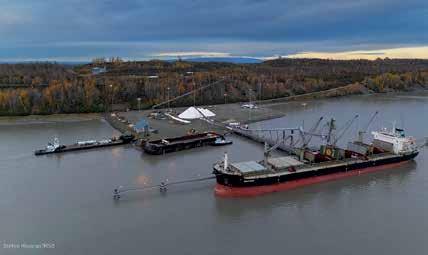
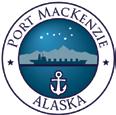
AERIAL VIEW OF PORT MACKENZIE AND THE TERMINUS OF THE PORT MACKENZIE RAIL EXTENSION, I.E., RAIL LOOP.
IN OCTOBER 2024, THE PORT WAS BUSY WITH TWO BARGES LOADING CARGO, AND A BULK CARRIER UNLOADING SALT FOR THE STATE OF ALASKA.
Photo Credit:Port MacKenzie
Anchorage’s Lifeline Port of Alaska Modernization Project picks up speed
By Katie Pesznecker
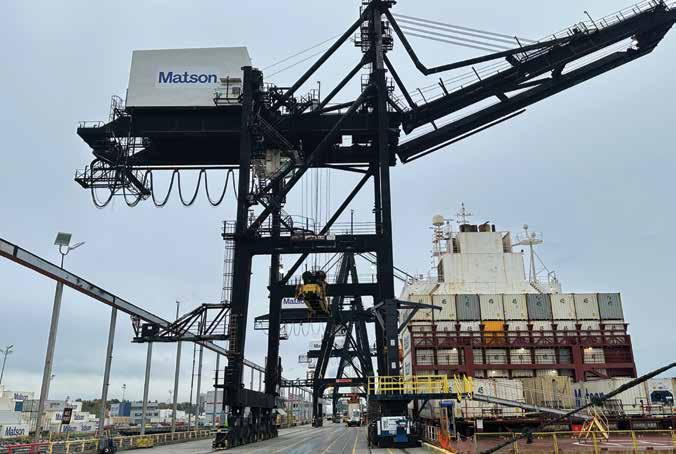
Ju st below Anchorage’s Government Hill neighborhood, near the mouth of Knik Arm, sits one of Alaska's most critical lifelines: the Don Young Port of Alaska. Every week, ships glide into this industrial artery, carrying goods that fuel daily life statewide. From groceries and gasoline to construction materials and jet fuel, vast volumes of Alaska’s inbound cargo pa ss across its docks.
Without the port, shelves would empty, fuel tanks would run dry, and disaster response plans would falter. As the port’s essential role has grown, so, too, has corrosion worn away at its decades-old infrastructure, which has become outdated and inefficient. This collision of port criticality with aging and obsolescence prompted the Port of Alaska Modernization Project (PAMP).
Renewing Alaska’s Freight Artery
Years in the works, PAMP intends to replace the original port terminals constructed between the late ‘50s and ‘70s with modern terminals designed to last seventy years. The project will enhance safety and efficiency, accommodating modern shipping operations and larger vessels. It should also improve resiliency, with new facilities designed to withstand extreme seismic events and the harsh and corrosive marine environment of Cook Inlet, ensuring sustained cargo operations during disasters.
After more than a decade of planning and preparation, PAMP is in its second phase, with major work underway and more on the horizon. Funding for the $2.2 billion effort gained further support with a unanimous vote by the Anchorage
Assembly in April to authorize essential funding measures and approve a transformative construction contract. Now the modernization effort is poised to usher the port into a new era defined by operational efficiency, seismic resilience, and sustainable infrastructure for generations to come.
Less than 5 percent of Alaska inbound freight arrives by air, and a little less than 5 percent of Alaska inbound freight arrives by highway; the remainder, more than 90 percent of Alaska’s inbound freight, is marine freight, coming by ship or barge. About half of all Alaska inbound freight crosses Anchorage docks and passes through Port of Alaska, and about half of all Port of Alaska inbound freight is delivered to final statewide destinations outside of Anchorage.
Charles Bell
| Alaska Business
“Suffice to say, the port is a pretty important piece of infrastructure for supply-chain operations within the state, and we take that very seriously,” says Port Director Steve Ribuffo. “It’s the big motivator behind what it is we’re doing here, so we can have relevance going into the future and have a facility that’s designed to always be there when the state needs it.”
An All-of-the-Above Port
The Port of Alaska is unique in its one-stop-shop nature.
Nearly 60 percent of port cargo received is liquid bulk, or petroleum products. Carriers of liquid bulk include Marathon Petroleum, Petro Star, Crowley, and the fuel consortium at the airport managed by Menzies Aviation.
Matson and TOTE Maritime Alaska, combined, account for about 40 percent of port cargo received annually. Matson and TOTE haul containerized cargo from Tacoma, Washington, twice weekly, familiar sights to locals used to the large ships stacked with Lego-like cubed containers. TOTE, with its roll-on/ roll-off model, can accommodate all types of wheeled cargo, too, such as vehicles and trailers.
Other port activity typically includes five annual shipments of dry bulk cargo—primarily cement—associated with Anchorage Sand & Gravel. This accounts for most cement shipped to Alaska for construction projects. The port also receives cruise ships and military transports.
“The superpower we have here is the infrastructure for all of that
cargo,” Ribuffo says. “If you are a port in the Lower 48, you can specialize and be a container port or a dry bulk port, and there is enough volume to keep you in business and enough road and rail connections that one place doesn’t have to do everything. We don’t have that luxury. We have such a small population that there’s not enough volume to support three or four ports that look like us. So we’ve created this capability to handle just about everything.”
The port’s two other notable functions are military support and disaster relief.
As a designated strategic seaport, Port of Alaska provides military support for the US Army Alaska deployment and redeployment requirements. About 20 percent of commodities crossing the dock

are in support of the military, in the form of either commissary goods or fuels used at Joint Base Elmendorf-Richardson.
As for disaster response, the port was just three years old when the 1964 earthquake hit and was “very fortunate to survive it,” Ribuffo says. “Before that, everything went to Seward. The brand-new dock in Anchorage survived. We grew from that disaster response relief role that was totally unexpected—and not the reason why the place was built in the first place—to what we are today.”
Nowadays, Ribuffo says, there is “not a single disaster response and recovery plan written by either the feds or state that doesn’t assume this port is operational when the need comes to bring relief supplies in.” No other port in the state has the capacity and strategic connectivity to meet predicted needs in the event of a large emergency.
Jim Jager, the port’s deputy director for programs, policy, and security, says it’s difficult to quantify impacts if the port were ever inoperable. “There’s not a simple answer,” he says. “A significant failure at Port of Alaska would probably cost the state $38 million per week to get the cargo in by alternative means.”
Although the port is in Anchorage, the facility matters to the entire state, Ribuffo says.
“You can safely say we’re the port of Fairbanks and the port of Palmer and the port of Wasilla and Kenai and on and on, because there’s not a store in those communities that wouldn’t have empty store shelves but for us,” he says. For that reason, the erstwhile Port of
“If you are a port in the Lower 48, you can specialize and be a container port or a dry bulk port, and there is enough volume to keep you in business… We don’t have that luxury.”
Steve Ribuffo Port Director
Don Young Port of Alaska
Anchorage was renamed in 2017 to reflect its statewide role—then re-renamed in 2024 in honor of the late congressman who played such a significant role in Alaska’s transportation infrastructure.
A Unique Municipal Model
Though it functions like a major industrial hub, the Port of Alaska is a department of the Municipality of Anchorage—with a twist. Like Anchorage’s Solid Waste Services and Merrill Field Airport, for example, the port is an enterprise department. This means it does not receive municipal tax revenues and must generate revenue to cover operational expenses, including payroll.
“Our users pay terminal fees, and we set rates to lease property
and use the docks,” Ribuffo says. “We’re a government department that runs like a business. We set the rates for what it costs to lease property and use the docks.”
The port pays the city an annual dividend and contributes via intergovernmental charges for shared services like legal and IT. The port also pays the city a fee in lieu of taxes.
With a lean staff of just twentythree people—including thirteen on the maintenance crew—the port manages everything from ship scheduling to infrastructure upkeep. Added to its suite of responsibilities, for the time being, is management of PAMP.
“We’re a government department that gets to run like a business with a caveat that we’re a government department—so all the rules of fair and open competition, all that you have to go through to get a contract, a lease—there are less freedoms than a private sector organization would have because we are part of the municipality,” Ribuffo says. “Our mindset is we have to generate revenue because we have to cover our expenses because there are no tax dollars coming our way.”
The Case for Modernization
Built more than sixty years ago, the port’s marine terminals are corroded and no longer meet modern safety or design standards. Ribuffo explains that Cook Inlet waters contribute to accelerated lowwater corrosion, common in highlatitude ports around the world. This form of marine steel corrosion occurs at or near the low-water line,
often due to microbial activity in the mud. The structures also predate seismic building codes enacted since the 1964 earthquake.
“Corrosion and the pervasiveness of it here was the motivation [for PAMP],” Ribuffo says. “We’re past the point where you could remove and replace all the corroded wharf pile. You just can’t economically replace them all and replace the dock. Then you destroy the structural integrity of what you have. The only real solution is to demolish and replace the whole thing.”
PAMP, launched in 2014, aims to build an entirely new, resilient port that can withstand seismic activity and serve the state’s needs for at least the next seventy years. Total costs are projected to be about $2 billion, Ribuffo says.
“That’s a number Alaskans don’t hear very often, and when they do hear it, it gets them kind of excited,” he says. “We’ve gone to great pains of how we intend to finance this thing.”
The financial mix so far includes federal and state grants, with an eye on whether the port could secure military funding given its intense support for operations and its
US Commercial Strategic Seaport designation, Ribuffo says.
Work Underway
The first visible success of the program came in 2022 with the completion of the Petroleum and Cement Terminal. The new terminal now handles 87 percent of the cement used in Alaska and supplies all jet fuel for Joint Base ElmendorfRichardson and half of the aviation fuel for both the Ted Stevens Anchorage International Airport and the Fairbanks International Airport.
“It was the first new terminal facility built down here in over forty years,” Ribuffo says.
Also as part of PAMP, the team moved into a new administration
The last place the port has looked for funding: banks and debt financing. The Anchorage Assembly’s unanimous April vote authorized the issuance of up to $1.1 billion in revenue bonds to fund the ongoing modernization of the port, which would be repaid through a port tariff surcharge. Port user fees and tariffs are already visible to consumers in everyday purchases and could increase through the PAMP effort, Ribuffo says.

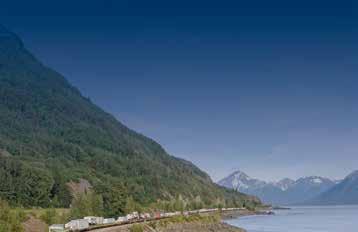





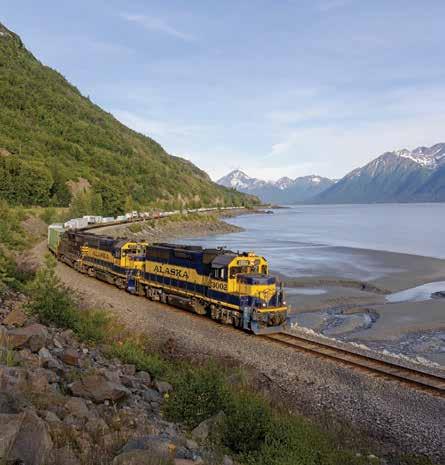
building last year. The previous building, located on a dock, was demolished so that the dock can be demolished in summer 2026 to make room for a new cargo terminal.
The contract the Anchorage Assembly approved unanimously in April engages Manson/Michels Joint Venture to dismantle the existing Terminal 1 wharf and build a replacement with a new pipepile-supported concrete deck, 870 feet long by 120 feet wide, with mooring and berthing features and crane rails to support new ship-to-shore cranes. The project, capped at approximately $807.5 million, is slated for completion by December 2029, with the contractor covering any cost overruns beyond the contract amount.
For its part, Matson is eager to bring its ships to the modernized dock. The company states, “We are looking forward to the start of construction of cargo Terminal 1 next spring, the arrival of the three shipto-shore gantry cranes when the dock is ready, and using the new dock to support Alaska’s economy.”
But the focus during the 2025 construction season is the North Extension Stabilization project, providing the literal groundwork for full dock replacement. It provides for demolition and engineering work to expand the working water area and stabilize the shoreline to allow for safer vessel navigation during construction. The approach illustrates an ongoing and underlying complexity of PAMP: redesigning and rebuilding a busy maze of infrastructure that must also remain in service throughout the effort.
“New cranes are anticipated to arrive in about three and a half years, so the goal is to have cargo dock construction and power station installation complete by that time.”
Steve Ribuffo Port Director
Don Young Port of Alaska
“If we didn’t do the North Extension Stabilization, there would be construction to the south and a rock wall on the north end, and then you’ve created a bathtub and would have to bring the ships in between that with very little space to maneuver in,” Ribuffo says. “That’s a real challenge now [in summer]; in the wintertime, with the wind and the ice, that’s dangerous. We did a fair amount of modeling to ‘What if we did or what if we didn’t,’ and the recommendation was [to] remove land to the north and create more open-water space to safely navigate what area container companies could use while we build the new one.”
The port has also taken on responsibility for the design and construction of a new electrical substation required to provide power to the new cargo dock. “New cranes
are anticipated to arrive in about three and a half years, so the goal is to have cargo dock construction and power station installation complete by that time,” Ribuffo says.
The Decade Ahead
With an estimated decade remaining for PAMP to reach completion, port operations must continue amid construction—a challenge that requires precision scheduling, cooperation among users, and shared sacrifice.
Over the next decade, PAMP will continue rebuilding marine terminals, upgrading electrical infrastructure, and acquiring new equipment such as cranes. Each step aims to position the Port of Alaska for long-term success in its three primary missions: commercial freight, military support, and emergency response.
Matson anticipates putting the new infrastructure to good use. The company states, “The new cargo dock design will provide an increased working area that will allow for a more efficient operation while enhancing safety. Matson will be able to purchase and operate three larger cranes which will allow for larger vessels to call the port and support future growth in the Alaska economy.”
What does a complete and successful PAMP look like to Ribuffo?
“I see a modern facility, resilient, built to the industry standards, capable of supporting whatever the economy does here for the next seventy years,” he says. “We will be part of the solution and not the problem that has to get solved first.”




The First Choice to the Last Frontier
Since 1978, Span Alaska has connected the world to all of Alaska with a weather-tested network of highway, vessel, barge, and air transportation.
At our West Coast Consolidation Center, we load your products into dedicated containers that transit directly to one of six service centers or air cargo facility for final-mile delivery. This eliminates extra rehandling and costly delays.
Benefit from:
• Year-round weekly ocean transit in all conditions
• LTL, FTL, Chill/Freeze, and Keep From Freezing Protection options
• Specialized equipment for project, oversized, and hazardous material loads
• Delivery throughout Alaska, from metro Anchorage to North Slope to remote villages in the Bush
• Customized solutions for commercial and industrial sectors, including oil and gas, construction, F&B, and retail/tourism

Uncle Sam Wants NEW
Civilian and military innovators improving national defense
From the creation of a flightline ice-breaking apparatus to an in-flight bladder relief product for female pilots, innovation in the military can take many forms. Hundreds of solutions—either conceptualized by military members or by civilian contributors—are proposed, accepted, funded, and tested each year, contributing to the efficiency and military readiness of the US armed forces.
The US Department of the Air Force started AFWERX in 2017 to serve as an innovation engine in cooperation with the Air Force Research Laboratory. The organization, which encompasses the Ventures, Spark, Prime, and SpaceWERX programs, has awarded more than 10,000 contracts worth $7.2 billion since 2019. In the 2024 fiscal year alone, Air Force Materiel Command awarded 260 Phase III transition contracts totaling $1 billion in value.
According to Colonel William “Laz” Wilkinson, the assistant deputy director of AFWERX and Austin Hub Site lead, Ventures is an investment
By Vanessa Orr
program geared toward commercial innovators and private capital investment, and Spark empowers airmen and US Space Force guardians by connecting them to commercial innovators using virtual collaboration, immersive training, and networking opportunities. The Prime program is an industry accelerator that expands technology transition pathways in emerging dual-use markets by leveraging government resources. And SpaceWERX is the innovation arm for the US Space Force.
“It’s great to be able to help an airman get an idea out, funded, and brought to fruition,” says Wilkinson, who adds that AFWERX can also help individuals apply for patents on their inventions. “We also partner with small businesses that have great ideas.”
Offspring of Necessity
One of the best sources of new ideas is from airmen dealing with day-to-day technical problems. At Eielson Air Force Base, for example, coping with frigid temperatures
spurred the development of three new technologies.
“When you’re working in Alaska, certain challenges arise when it comes to weather and getting aircraft off the ground,” explains Tech Sergeant Dustin Baker, who is the lead for Eielson projects. “As a fighter wing dealing with direct conflicts overseas, we need to be ready at all times.”
When temperatures sink below -20°F, pneumatic refueling lines freeze. By retrofitting an alcohol dryer container to remove moisture from the lines, Eielson crews could continue refueling jets.
“A couple years ago, during ‘Icemageddon,’ we had a flight line covered in a couple inches of ice,” Baker adds. “Our smart-brained people came together and within 48 hours developed a large icebreaking tool called FIBA (flightline ice-breaking apparatus)—which is basically a large plow—so that we were able to clear the runway.”
Recently, the base created heated phone scanners and phone cases to
protect its electronic Zebra barcode scanners from extreme cold.
“Bluetooth capabilities and battery life tend to fail at these scanners, which are used to scan gas cards for government vehicles, so we created a little temperature-controlled heater for these devices as well as our phone cases,” says Baker. “Now when individuals are out in the elements, they can use them at lower temperatures.”
Spark of Inspiration
The military has a long tradition of elevating the ingenuity of onthe-ground personnel, and Eielson formalized the process with its own Spark program. Airmen of the 354th Fighter Wing organized Iceman Spark to improve and deploy these juryrigged solutions.
Recent projects include augmented reality for Tactical Combat Casualty Care training in partnership with GigXR, which provides holographic healthcare training.
“GigXR developed scenarios using augmented reality for casualty care, which enables us to train individuals at a lower cost and more rapid pace in remote areas as long as we have service,” says Baker. “Now we don’t need to send people to different locations to get this training.”
To help with US Department of Defense (DOD) explosives training, Eielson innovators also devised an inexpensive design for training canisters.
“You can only explode so many things before you need money to purchase more items,” explains Baker. “We had a limited supply of containers but were able to provide www.akbizmag.com
























Able to mobilize for quick action needed situations, our team can tackle any public or private project. From airports to schools, to mines and water treatment, choose RESPEC as your integrated solutions provider.
Engineers. Planners. Surveyors... and everything in between.







Every Journey Begins with a Single Step
North Star Behavioral Health System offers behavioral health and substance use services for children, teens and adults.
Take the first step today. Call 907-264-3506 for a confidential, no-cost assessment, available 24/7.

2530 Debarr Rd | Anchorage, AK 99508 907-258-7575
1650 South Bragaw | Anchorage, AK 99508
907-258-7575
• Inpatient Acute Care for Children and Teens (ages 4 to 18)
• Residential Care
• The Arctic Recovery Program For adults in need of detoxification or rehabilitation for substance use.
• Chris Kyle Patriots Hospital Serving first responders, military service members and veterans. We are proud to be part of the VA Community Care Network.
• Outpatient Services for Adults
a 3D printer with metal filament to make more canisters in different designs to help with shape charges for training purposes. It works for all types of devices.”
Innovations are aborning at Joint Base Elmendorf-Richardson (JBER) as well. According to Staff Sergeant Taylor Davis, the 673rd Security Forces Squadron recently progressed prototypes to employment phases from two AFWERX projects under contract: Picogrid and Ravensafe. The squadron is working to close on another, the InVeris Augmented Reality Weapons Trainer.
Picogrid leverages cutting-edge surveillance systems, data analytics, and communication networks to provide a dynamic response capability to evolving security threats.
“The integration of a prototype highly attributable camera system into the Picogrid framework aims to revolutionize situational awareness and threat assessment,” Davis explains. “This advanced camera technology features real-time video analytics and automated tracking of potential security breaches, significantly increasing the ability of security forces to monitor and respond effectively to incidents within the base environment.”
Ravensafe is a mobile energy storage alternative to fuel-driven generators for providing instant power. The hybrid lithium-ion battery can be recharged by grid power, solar, or generator.
“The implementation of this mobile energy storage system under Ravensafe will provide security forces with a reliable and efficient power source that ensures continuous
“We do have civilian companies that reach out to ask if a technology or project is something the military needs… I first started getting requests from companies when I changed my LinkedIn profile title to Director of Innovation. I get a lot of people contacting me with a wide variety of ideas.”
Tech S ergeant Dustin Baker Di rector of Innovation Ei elson Air Force Base
operation of critical base defense systems in various scenarios,” says Davis. “This energy solution is designed to be easily transportable, allowing for quick setup in diverse locations and support for extended missions.”
Where Do the Ideas Come From?
Great ideas can come from anywhere, and the military is making a major effort to help individuals make ideas into reality. AFWERX participates in two big events each year at its Austin, Texas hub, inviting anyone who has a project
that has piqued the military’s interest to meet in person.
“There are open topics and specific topics; on open topics, individuals have ideas and bring them to us,” says Wilkinson. “Some of these ideas match our needs perfectly, some need a few modifications, and others are a good place to start.”
Specific topics that AFWERX requests might include, say, an automated drone to deliver food to troops. Companies compete for these contracts, showcasing products and ideas that can meet this need. During these events, AFWERX personnel meet with businesses and individuals to connect them with education and resources on AFWERX programs.
Wilkinson says most small businesses have a limited understanding of how to get through the military’s contracting function, so AFWERX also helps them navigate that path.
Baker notes that most of Eielson’s innovative ideas come from military individuals dealing with day-today issues. “However, we do have civilian companies that reach out to ask if a technology or project is something the military needs,” he says. “I first started getting requests from companies when I changed my LinkedIn profile title to Director of Innovation. I get a lot of people contacting me with a wide variety of ideas.”
Baker is also part of the Alaska Defense Board panel that includes UAF members and other innovative individuals, and he works with the National Security Innovation Network, a DOD program, to find new ideas.
According to Davis, JBER has innovative teams across the installation from the level of wing to squadron, which allows anyone in any position to promote process improvements, advanced technology, or equipment hacks to more efficiently and effectively accomplish the Air Force mission. He serves as a liaison between innovators, small businesses, and AFWERX to facilitate the administrative needs of submitting projects for development or implementation.
“Projects can be military-driven or proposed through civilian vendors competing for contract awards,” he says. “On the civilian side, I coordinate with third-party AFWERX partners who network with cutting-edge industries and
to cater submissions to our unit’s needs and mission set.”
Timeline and Funding
Encouragement and funding of innovations can make a big difference in how long it takes an idea to develop. In the military’s case, innovations may occur in five hours or five years, depending on the project.
“One project, a 3D-printed cover designed to prevent kick damage when maintenance was being performed, took all of an hour to design and four hours to print,” says Baker. “A warehouse redesign to improve productivity and workflow that we started two years ago is ongoing; we’ve just gotten to the point where we are creating work areas appropriate
Depending on the project, the Air Force Research Lab may provide funding for contracts through AFWERX (when contracts are with civilian companies), and funding may also come from Congress, with a specific portion of Air Force funding earmarked for innovation.
“If an idea is pitched from in-unit or within the military community, it’s a matter of if the product is readily available and if funds can be allocated for purchase,” says Davis. “If it is a pitch from civilian vendors through AFWERX, these are innovative capsules without tangible contents. Once a product is approved and awarded funding to initiate production, timelines vary from a projected twelve to twentyfour months before a prototype is

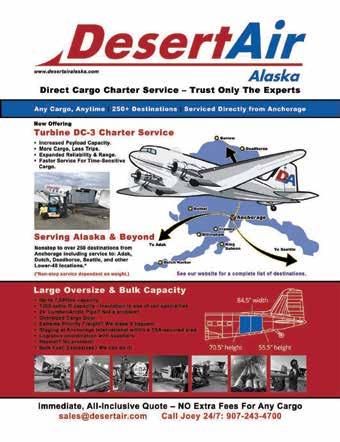
Davis notes that his security squadron is empowered to act on innovations. “As a unit, we can fund these opportunities if budget allocation can be situated,” he says. “If the dollar amount is greater than our means, I work to push these projects to the wing or MAJCOM [Major Command] levels for approval and innovations funding.”
AFWERX funds come from various sources, including contract opportunities such as the Small Business Innovation Research and Small Business Technology Transfer programs, the AFWERX Challenge, and the Tactical Funding Increase and Strategic Funding Increase programs. These funds support small businesses and startups in developing innovative technologies for the Air Force and the DOD.
More Success Stories
In the past eight years, AFWERX has helped develop numerous innovative solutions for military use. This includes sponsoring the Sky High Relief Challenge, geared to finding an improved bladder relief system that allows female aviators to hydrate adequately and relieve themselves during flight without interfering with operations or compromising flight safety.
A total of fifty-six companies showcased bladder relief solutions: some entirely new systems, some adaptors for commercially available products. The sleek Advanced Inflight Relief Universal System, with a detachable pump, has now been approved for Air Force use.
The Rapid Yeti, an idea that came from a frontline service member in


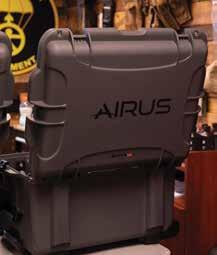
logistics, was created with the goal of helping unload cargo faster and safer, which can be challenging in areas that lack infrastructure, such as remote areas in Alaska. The airman worked through JBER’s Arctic Spark, which reached out to the National Security Innovation Network to help take the project from idea to reality.
“Other programs that encourage innovation include the Fellowship Program, which enables Air Force members doing other jobs who have expressed an interest in innovation to
be assigned to certain projects for six months to a year to bring in outside thinking where it had not been before,” says Wilkinson.
Furthermore, he adds, “The Refinery is an innovation accelerator where an airman can come up with an idea to make things safer or life better, and we’ll help them prepare their ideas to show to senior leadership.” In the Refinery program, innovators and project teams are competitively selected to participate in a two-, four-, or six-week cohort (based on team needs) to focus on development and refinement of their grassroots project prototypes. Refinery participants are also provided with entrepreneurial knowledge, connections to relevant stakeholders, and resources within the DOD ecosystem.
One success from this program is an airman-conceived tool that has enabled the Air Force to keep aircraft in the flight rotation. Without it, planes had to be taken out of rotation for one to two sorties; by finding a way to 3D print the $600 item, the Air Force has saved an estimated 400 hours of lost flying time each year.
According to Wilkinson, AFWERX encourages inventors and entrepreneurs to continue to share their innovations with the military and to take advantage of programs available to bring their ideas to fruition.
“We hope businesses continue to reach out to us because there are a lot of amazing ideas that they can bring to the table,” he says. “Somewhere out there, someone has a game-changer, and we’d love to see it.”
Civilian and uniformed innovators solve everyday military problems: (top to bottom) freeze-proof barcode scanners, augmented reality training, and airborne urine storage.
Joint Base
Elmendorf-Richardson
Eielson Air Force Base
AFWERX




Reliable internet and voice solutions


MTA delivers secure, scalable connectivity to meet the demands of remote operations, regulatory compliance, and real-time data transfer. Our dedicated business representatives will help you identify and deliver the technology needs that will help your business grow.
Dedicated Internet Access
Static IPs, scalable from 10MB to 100GB
Voice & Collaboration


Business Voice Services, SIP, and PRI trunking
Long Haul Ethernet
All terrestrial fiber for remote business sites
True Redundancy
Subsea + Alaska’s only terrestrial fiber route (AlCan ONE)
Local Experts
24/7 local support and custom network planning


mtasolutions.com/business

Striving to Thrive
Addressing outmigration through workforce development
By Matthew Langhoff

If you live in Alaska, you’ve likely felt the impact of population changes across our communities. For more than a decade, more people were moving out of the state than moving in.
Recently, there’s been a small but promising shift. According to new estimates from the Alaska Department of Labor and Workforce Development, Alaska's population grew by 2,274 people from 2023 to 2024—a 0.3 percent increase that brought us above 741,000 residents for the first time since 2018.
That’s encouraging news and worth celebrating. However, it’s essential to understand that, while the overall population ticked up, outmigration is still an issue—especially in rural communities and among younger Alaskans leaving for school or work and not returning. The slight bump in population doesn't mean the trend has reversed across the board. For many industries, including technology, the challenge of finding and keeping local talent remains very real.
The Brain Drain
Sustaining and expanding Alaska’s population growth means making long-term investments in workforce development and education. We see this moment not as a signal to ease up but as an opportunity to invest in building a stronger, more resilient Alaska, starting with the people who live and work here.
When people leave the state, they’re often looking for opportunities that feel out of reach here at home—jobs, education, affordable housing, or maybe a different lifestyle. But the problem is that when too many leave, it’s not just a personal loss, it’s a loss for the entire community.
Small towns and rural communities feel this loss the most. When young people head off to college
or to other states and don’t return, local businesses suddenly have a smaller pool of workers to draw from. Finding qualified people to fill good jobs becomes harder, especially in industries like technology that are vital to our state's infrastructure and economy.
Take the telecom sector as an example. We all depend on reliable internet and phone service for work, school, healthcare, and emergency communication. However, maintaining and upgrading networks requires skilled technicians who know Alaska’s unique geography and challenges. If we can’t find enough qualified workers locally because too many have moved away, network issues can go unresolved longer, causing frustration and potential safety risks.
If we can’t find enough qualified workers locally because too many have moved away, network issues can go unresolved longer, causing frustration and potential safety risks.




This isn’t just an inconvenience— it can have real consequences. Communication networks keep us unified, from coordinating disaster response to enabling telemedicine and keeping families connected across distances. When they degrade, everyone feels it.
What’s the answer? How do we keep our young people here and build a workforce that can support Alaska’s future?
Meaningful Reasons to Stay
At MTA, we're investing in apprenticeship and internship programs as well as local education initiatives explicitly designed to train and retain Alaskans in highdemand technical roles.
We partnered with other telecommunication companies in Alaska last year to create more awareness around apprenticeship programs that combine classroom learning with paid on-the-job training. These programs give individuals the opportunity to build essential skills while earning a competitive wage— around $90,000 per year on average for graduates—along with great benefits like healthcare, paid time off, and pension plans.
But it’s not just about wages and benefits. It’s about showing young Alaskans that there are rewarding career paths right here at home that can provide longterm stability and growth. It’s about giving them the tools, support, and encouragement to stay and grow their careers in our state.
Internships are another important part of this effort. MTA’s program gives local students
We partnered with other telecommunication companies in Alaska last year to create more awareness around apprenticeship programs that combine classroom learning with paid on-the-job training. These programs give individuals the opportunity to build essential skills while earning a competitive wage.
and early-career professionals the chance to gain real-world experience and build connections in the industry—opportunities that have a strong track record of leading to long-term employment within the organization.
Beyond apprenticeships and internships, we also run community outreach programs like our Youth
Technology Tour, which brings students from rural communities, including places in the MTA service area like the Native Village of Eklutna and the Traditional Village of Chickaloon, into the world of tech careers. These hands-on experiences aim to spark interest and excitement in often overlooked fields but have enormous potential here in Alaska.
Workforce development creates a ripple effect across industries. When businesses have access to local, well-trained talent, they can grow, innovate, and provide more services and jobs. That growth supports the community through increased economic activity and more robust infrastructure, which benefits everyone from remote workers to small business owners trying to stay connected with customers.
Building a strong workforce here encourages people to invest their lives here. When you know there are good jobs, training opportunities, and a supportive community, you’re more likely to stay—or even come back if you’ve left.
A United Front
Addressing outmigration is a shared responsibility—one that requires everyone from small business owners and educators to local governments and community leaders to play a role. It’s going to take a united, intentional effort to keep Alaskans here and bring others back.
One powerful way businesses and organizations can make a difference is by investing in local education and training. When
we support schools, vocational programs, and apprenticeships, we’re building a stronger, more sustainable talent pipeline to serve our communities long-term.
Creating clear and meaningful career pathways is just as important. People want to know there’s a future for them in Alaska—a chance to grow, thrive, and build a life. When companies offer roles that lead to real advancement and stability, it gives individuals a reason to stay.
We also need to foster a culture of innovation and resilience. That means embracing change, encouraging creativity, and staying connected to the needs of our communities. When people feel supported and inspired, they're more likely to invest in their futures here.
Alaska’s natural beauty, tight-knit communities, and unique lifestyle are also major assets. By highlighting the quality of life here—not just the jobs—we can show people why Alaska is worth choosing.
Whether through alumni networks, job fairs, or targeted incentives, creating pathways for former residents to return home can be a powerful part of rebuilding our population and strengthening our economy. Many former Alaskans still feel a deep connection to their hometowns. With the right opportunities, they may be ready to return and reinvest in the communities that shaped them. It’s about making that return feel both possible and worthwhile.
Achieving that future will require collaboration across
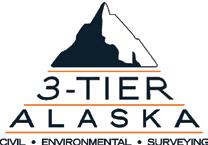
ENVIRONMENTAL SERVICES
&
Prevention
(SWPPP) Wetlands Delineation & Mapping • Environmental Site Assessments
Environmental Impact Statements • Permitting & Regulatory Compliance
Wetlands Jurisdictional Determination Report
Wastewater Treatment System Design & Permitting
Drinking & Storm Water System Design & Permitting
Spill Prevention, Response & Site Remediation
Spill Prevention Control & Countermeasure Plans (SPCC)
sectors. By working together, sharing ideas, and investing in people, we can create a stronger foundation—one where Alaskans have the opportunity to stay, grow, and build meaningful lives right here at home.
When Alaska’s workforce thrives, our communities grow stronger—and that’s something we all benefit from.
Matthew Langhoff rose through the ranks of MTA’s human resources department to become Chief Operating Officer. In his twenty years of experience with the Palmer-based co-op, he’s credited with blending HR with broader administrative services. He holds a professional certification from the Anchorage Society for Human Resources Management.

SURVEY / CIVIL SERVICES
As-built Plot Plans • Boundary Surveys • Road Alignments
Grading Design • Construction
Surveying • Earthwork Quantities/Cross Sections
Cadastral Remote Parcel Surveying • Landscaping & Drainage Design
Water Sample Testing & Analylis • Septic System Design & Testing
Percolation & Sample Analysis • Commercial Site Development
Subdivision Design & Platting • Right of Way/Easements
THE SAFETY CORNER
Aviation Risk Management
Crashes happen, so be prepared
By Sean Dewalt
Av iation travel in Alaska is essential for businesses that need to move employees from one location to another for work. While larger aircraft typically operate between cities and smaller regional hubs, smaller aircraft are frequently used for the shorter, more remote routes. As of December 2020, the Federal Aviation Administration (FAA) counted 396 public-use airports in Alaska. Of those airports, 284 are land-based, with four heliports and 108 seaplane bases. Due to the vast size and limited road infrastructure, Alaska has the highest number of airports per capita in the United States.
But they are not all made alike. Today, the state operates more than seventy runways, many of which are in remote areas. Most of these are gravel airstrips roughly 3,300 feet long. Some are tucked into valleys, others sit on mountainsides, and several require long approaches over water. Given these conditions, ensuring the safety of company
personnel is critical. This requires that companies assess their unique aviation exposures and develop plans that enable employees to complete each flight safely and successfully.
Staggering Statistics
The FAA’s Code of Federal Regulations defines various types of air travel. Part 121 outlines regulations for scheduled air carriers, such as Alaska Airlines, Delta Air Lines, FedEx, and UPS, and represents the highest safety standard in commercial aviation.
Part 135 governs commuter and on-demand (charter) operations. It applies to aircraft with fewer than thirty passenger seats or a maximum payload capacity of 7,500 pounds.
In Alaska, there are a substantial number of small aviation companies that operate under Part 135, often using single-engine aircraft and a single pilot. These flights frequently take place in remote areas, where weather reporting is limited or nonexistent at both the
departure and arrival locations and along the route.
Over the past decade, nonscheduled Part 135 flights have accounted for the majority of fatal crashes among both scheduled and non-scheduled Part 135 operations in Alaska and across the United States. According to the National Transportation Safety Board, these flights “had a fatal crash rate that was 75 times higher than Part 121 flights.”
In Alaska specifically, the National Transportation Safety Board reports that “the accident rate is 2.35 times higher than the rest of the United States, and the fatal accident rate is 1.34 times higher.”
Addressing these staggering statistics requires more than awareness; it demands a proactive safety approach. For organizations with traveling employees, stacking the odds in their favor requires implementing a strategy built on three critical components: a formalized travel safety plan, comprehensive employee training, and strong decision-making skills.
Empowering Policies
Aviation safety programs begin with a formalized, written set of policies and procedures that guide both employers and employees in making sound decisions when flying. These written policies should clearly outline which air carriers are approved for use by location, how frequently employees may travel, passenger limits per flight, travel procedures, and the specific training employees must complete. To assist in developing these plans, the Circle of Safety Handbook, which was created by the FAA for Alaska travel, offers practical guidance. The handbook is available online through the Alaska Department of Transportation and Public Facilities website.
A key part of employee training should include the use of a

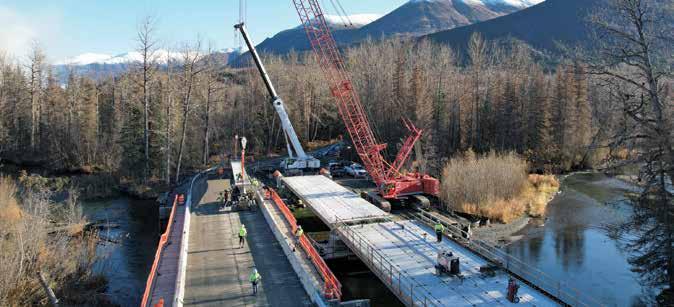

Chandler French and James Johnston experiencing a crash scenario training inside the Basic Egress Aviation Survival Trainer “The Beast.” Sean Dewalt
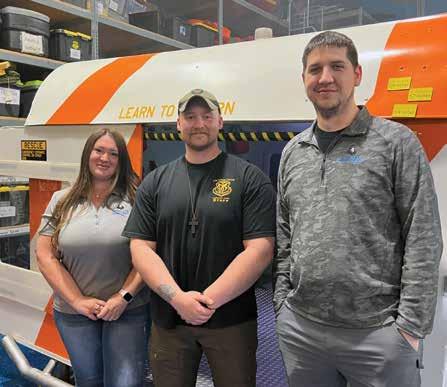
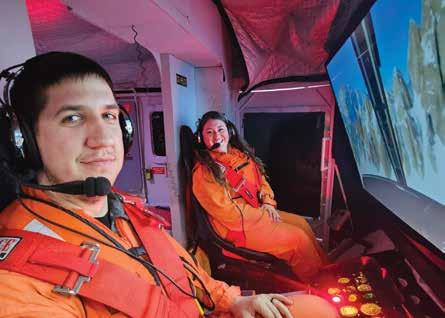
pre-travel aviation safety checklist. This checklist should include seasonal gear requirements, best practices for selecting a seat, awareness of how passengers and cargo are loaded, and guidance on asking informed questions. For example, if the day’s flight will include inclement weather, employees should feel empowered to ask the pilot, “Will this flight be conducted under visual or instrument
flight rules?” Asking this simple question can help the employee assess potential weather-related risks.
Statistics show that poor weather and low visibility contribute significantly to many fatal Part 135 aircraft crashes in Alaska. Because of this, the most critical element of any air travel policy should be a clearly supported right for employees to decline a flight if they perceive the
risk to be too high. All employees should receive training on these policies during onboarding and prior to their first flight.
In addition to written materials, formal hands-on training in aviation safety, risk management, and emergency procedures remains the most effective way to ensure employees are prepared to make safe, informed decisions in the field.
Making the Best of a Worst-Case Scenario
Learn to Return, also known as LTR Training Systems, is an Anchorage-based company that provides comprehensive aviation safety programs, including a twoday Aviation Land and Water Survival Course, which is widely considered the industry standard for Alaska workers who travel by air. Recognized by the FAA, the program certifies participants for a two-year period for both land-based and over-water flight operations. This extensive, hands-on program thoroughly prepares participants to survive aviation accidents, with training scenarios relevant to both Alaska and around the United States.
Participants engage in land and water crash simulations, which includes practicing crash positions, identifying reference points, escaping seatbelts quickly, extracting others from wreckage, and administering first aid. The course also includes “dunker” training in a local pool, led by certified instructors, to simulate an underwater aircraft escape. These are all crucial elements for survival, and the best way to plan for a positive outcome.
(Above) Chandler French and James Johnston of Umialik Insurance Company pose with Tanner Welch of Learn to Return, and (below) French and Johnston prepare for a crash scenario inside "The Beast."
Sean Dewalt
Upon course completion, participants receive Alaska Continuing Medical Education credits and certification cards. The curriculum also covers common aviation hazards, crash causation, incident statistics, and essential survival techniques. LTR also developed the HIS/HER principle for emergency decision making: Hazard, Injuries, Shelter/Heat, Energy, Rescue. These six survival priorities are reinforced in training and even printed on matchbooks, which serve as a practical reminder for field use.
The LTR Aviation Land and Water Survival Course is one of a kind, not just in Alaska but across the United States. LTR has distilled the key concepts of aviation crash survival into clear, memorable components that are reinforced through handson drills. Each year, LTR trains between 250 and 300 workers, including employees from major Alaska corporations, federal and state agencies, and air medical transport services. Class sizes are kept small, with a limit of twenty participants, to ensure individualized instruction. The program also includes youth training, which starts at age 14.
LTR’s training facility is dedicated solely to safety training and is equipped with multiple aircraft crash simulators that are designed to replicate a range of real-life scenarios. Participants are provided with all necessary clothing, personal protective equipment, and training gear. This immersive experience, delivered by highly qualified instructors, ensures that participants leave with practical skills and confidence that they could one day save their life and the lives of
others. As their staff often reminds participants, “This training session is your easiest survival situation, and the only practice you will get.”
The Hardest Day
In Alaska, remote flying comes with real risks, and preparation is key. While aircraft mishaps are not everyday occurrences, the risks are high enough to warrant a conservative approach. Combining sound policies, comprehensive employee training, and individual empowerment to make informed decisions is essential.
As the team at LTR often reminds their participants, “The hardest day of your life is still coming.” If that day comes in the form of an aviation emergency, the difference between survival and tragedy
may come down to the planning, training, and empowerment put into place beforehand.
If you need help formulating a company aviation safety plan, reach out to your commercial insurance broker or Loss Control Consultant who can help you through the process.

Sean Dewalt is an experienced loss control consultant in Anchorage. Dewalt has been working in safety and risk management in Alaska since 2000. This column is intended to be informational and is not intended to be construed as legal advice.

INSIDE ALASKA BUSINESS
CYBER Express Wash
The sudsy wave of new carwashes splashed ashore in Anchorage in June with the grand opening of CYBER Express Wash in the former Johnson’s Tire Service building in Midtown, making it the third-largest carwash facility in the country. CYBER Express Wash bills itself as Alaska’s first high-tech, hospitality-first express wash. Inside, customers experience a three-minute tunnel wash and ten-minute express detailing with no appointment needed. The company had begun staking out locations in Anchorage by 2023, when Chugach Alaska Corporation announced its investment. In addition to refurbishing the defunct Johnson’s Tire location on Denali Street, other “Coming Soon” signs are posted on East Fifth Avenue, where Sixth Avenue converges, and at the busy intersection of Lake Otis Parkway and Tudor Road. cyberexpressalaska.com
Alaska Manufacturing Association
At the end of June, the Alaska Manufacturing Extension Partnership wrapped up its activities, and into that void stepped the Alaska Manufacturing Association. The new group aims to connect businesses with manufacturers and find solutions to common problems, such as cutting costs by combining shipments. Megan Militello, the association’s managing partner, used to own Anchorage-based granola
company Elevated Oats and was a supply chain optimization manager for the manufacturing partnership. She says one of the association’s first initiatives is a businessto-business directory. akmfg.org
PanAlaska
The Arctic Light Modular Structural System is an insulated building panel that bolts together to make houses or commercial buildings. Inventor Glenn Brady was ramping up for production at his PanAlaska workshop in Fox, north of Fairbanks, for a $3 million contract to build thirty rural homes this summer. When the federal government paused the funding, Brady pivoted to military applications, such as using the insulation with airplanes. He hopes to keep PanAlaska solvent long enough to deploy the panels for homes. panalaskallc.com
Providence
A restructuring within the Providence healthcare network is expected to affect 600 full-time equivalent positions among its 125,000-person workforce, with 35 of those in Alaska. According to Providence, the affected Alaska positions are mostly leadership roles in non-clinical, administrative functions. Providence says it is responding to multiple pressures, including proposed Medicaid and Medicare cuts, ongoing denials and delayed payments from commercial insurers, higher labor
costs in some West Coast states, and higher costs for pharmaceuticals and supplies due to inflation and tariffs. providence.org
Alaska State Fair
A new multipurpose event center is being completed just in time for the Alaska State Fair. The 8,300-squarefoot structure near the Purple Gate entrance is designed for year-round community use to host indoor events, along with restrooms accessible from both inside and outside the building. Kuchar Construction, which built the new Sluicebox at the fairgrounds in 2023, is building the event center. Alaska State Fair is funding the project independently, thanks to generous and continued support from Alaskans. alaskastatefair.org
STaX Capital Partners
An entrepreneur from Wasilla is proposing to monetize stranded North Slope natural gas as cryptocurrency. Sparrow Mahoney, chief executive of STaX Capital Partners, applied for a permit with state land managers to set up pods the size of shipping containers at a disused pad at Franklin Bluffs, about 30 miles south of Prudhoe Bay. Natural gas would power computers mining for Bitcoin. STaX’s gas generators would have the capacity to produce 50 MW, about the same as Alaska’s largest coalfired power plant in Healy. Mahoney declined to reveal the exact cost but confirmed it would exceed $10
million. Last year, Hilcorp agreed to host a 1.4 MW cryptocurrency project using North Slope gas. stax.capital
Aleut | Pacific H2
The Aleut Corporation is partnering with Pacific H2 to produce green ammonia from wind turbines on Adak Island. Aleut agreed to lease approximately 3,500 acres to Pacific H2 to install onshore wind turbines that would power ammonia production equipment on board a vessel permanently moored at the defunct US Navy pier. Work begins this summer on meteorological monitoring to gather data for appropriate turbine models. Construction would take approximately three years, with
production and export to begin in the early 2030s. Pacific H2 anticipates monthly shipments to international customers of ammonia, mainly used as fertilizer but also combustible as fuel.
aleutcorp.com | pacifich2.com
Northern Star Resources
A new calculation significantly increases the estimated gold reserves at the Pogo mine near Delta Junction. Northern Star Resources reports 9.13 tonnes of proven and probable reserves, up from 5.88 tonnes last year. However, the estimated grade of 7.2 grams per tonne, or 2.13 million ounces, is a lower concentration than previous reports. Northern Star expects current reserves to support six and a
half years of continued operations at Pogo, at present milling rates. nsrltd.com
Anchorage School District
Academies of Anchorage is revamped for the new school year. The Anchorage School District is dropping a requirement for students to declare a career path; instead, they are encouraged to take careerfocused electives. The district says the mandatory Freshman Academy is being reshaped as a College and Career Exploration and Personal Finance course, counting toward an Alaska social studies credit. Program director Sean Prince attributes the changes to uncertainty about state and federal funding. asdk12.org
THIS ALASKA BUSINESS
Stop in for fresh soup, bread, or cookies. Buy gourmet oils, spices, or decorative sprinkles. Or select heirloom-quality cookware. Customers of The Dirty Apron in Midtown Anchorage can do all those things, but retail is secondary. Teaching is why Amy York pivoted from a career in construction management to cookery during the COVID-19 pandemic. She brings people together, whether friends or strangers, for bonding experiences in a top-quality kitchen and dining room. Local restaurant chefs share their skills at classes booked through The Dirty Apron website. York says corporate team-building events bring a lot of business too.

THIS ALASKA BUSINESS
The Dirty Apron Scan the QR code to watch the video featuring The Dirty Apron. Part 33 of an ongoing video series. youtube.com/@alaskabusinessmagazine www.akbizmag.com
RIGHT MOVES
Alaska Business Publishing Co.

· Upon the retirement of Janis Plume from Alaska Business Publishing Company, the Sales Department gained a new Account Manager. Chelsea Diggs applies her experience from personnel services firm Airswift to the world of advertising. From the healthcare and oil and gas sectors, Diggs gained expertise in project management, strategic planning, and data analysis. She has served as president of the Anchorage Petroleum Women’s Association and volunteers at the Anchorage Pioneer Home and with her local parent-teacher association.
Donlin Gold

· Developers of the Donlin gold prospect in the Middle Kuskokwim region hired an industry veteran as General Manager. Todd Dahlman comes to Donlin Gold after previously serving as vice president and deputy general manager at Kinross Gold’s Fort Knox Mine. Dahlman succeeds Enric Fernandez, Donlin Gold’s permitting and environmental manager, who served as interim general manager. Dahlman began his mining career in 1986 in his hometown of Butte, Montana. Dahlman holds a bachelor’s degree in mining engineering from Montana Technological University and an executive MBA from the University of Utah. In 2024, he completed the Advanced Management Program at Harvard Business School.
Schwabe
· Schwabe welcomes Molly Gunther to the law firm’s Anchorage office as an Associate in the Indian Country and

Alaska Native Corporations industry group. An enrolled member of the Central Council of Tlingit and Haida Indian Tribes of Alaska and a shareholder in regional and village corporations, Gunther advises Alaska Native corporations and tribal governments on corporate governance, business development, employment, and more. Gunther earned her JD at Seattle University School of Law.
Bristol Bay Native Corporation
Bristol Bay Native Corporation (BBNC) promoted six executives and managers at its corporate office.

· Shaun Andrew, a BBNC shareholder, is now a Senior Specialist, Entity Operations and Governance, responsible for data management and document control. He manages the Diligent Entity Management system, ensuring organizational records, documents, and data across BBNC’s corporate, subsidiary, and partner entities are accurate and up to date.

· Lisa Andrus is promoted to Senior Manager, Records and Information Management, overseeing management of records and information assets across BBNC’s enterprise of companies, ensuring compliance, security, and accessibility. She is responsible for classification and destruction of inactive records and developing policies and procedures that guide BBNC’s records and information practices.

· Carmell Engebretson, a BBNC shareholder, takes the new position of Vice President, Communications, in charge of internal and external marketing and communications strategies. With


RIGHT MOVES IS BROUGHT TO YOU BY NORTHERN AIR CARGO
Gunther
Diggs
Andrew
Andrus Engebretson
Dahlman
her deep expertise in branding, messaging, and stakeholder engagement, Engebretson ensures that all communications reflect BBNC’s brand and objectives.

· Casey Sifsof, a BBNC shareholder, is now Senior Director, Shareholder Development, in charge of training, career development, and employment opportunities for shareholders. She oversees strategic initiatives and programs to prepare for employment and long-term career growth. Sifsof also manages the Training Without Walls leadership development program.

· Polly Watson, a BBNC shareholder, is promoted to Vice President, Operations, in charge of BBNC’s compliance with the US Small Business Administration 8(a) Business Development Program. Watson manages program applications and regulatory reporting, ensuring timely and accurate submissions. Her expertise in compliance, federal contracting, project management, and process improvement strengthens BBNC’s operational effectiveness.

· Kala Wilson, a BBNC shareholder, takes on the title of Senior Manager, Communications, executing strategic communications across BBNC’s print, digital, and social platforms. She manages BBNC’s newsletter, website, texting platform, shareholder portal and mobile app, and she supports the production of the annual report, proxy statement, and statewide media campaign.
Bowhead Transport

· Bowhead Transport, a division of UIC Commercial Services, named Kevin O’Shea as its new Health, Safety, and Environmental Manager. At Bowhead, O’Shea oversees safety protocols and vessel inspections, supporting regulatory
compliance and commitment to a proactive safety culture. O’Shea has more than thirty years of experience in health, safety, and environmental management, with expertise in oil spill response and marine operations. He is a veteran of the US Coast Guard, where he served as a marine science technician, and has held safety leadership roles at Vitus Energy, Trident Services, and Alaska Department of Environmental Conservation.
UMIAQ Design

· UMIAQ Design, a division of UIC Commercial Services, named Sarah Moyers as its new Engineering Manager. In this role, Moyers oversees engineering operations, leads departmental improvements, and guides project delivery across key sectors, including utilities and land development. Moyers joined UMIAQ in 2010. A licensed professional engineer in both civil and environmental engineering, Moyers has more than twenty years of experience and holds dual degrees in civil engineering and system dynamics from Worcester Polytechnic Institute.
R&M Consultants

· Civil engineering, surveying, and environmental firm R&M Consultants established a Land Development Group and hired Dave Whitfield as Senior Planner. With Whitfield aboard, R&M now offers comprehensive land development services. Most recently the Planning and Zoning Manager and Platting Officer for the Municipality of Anchorage, Whitfield serves as project manager and technical expert at R&M. He holds a bachelor’s degree in geography from Southern Oregon University and is a member of the American Planning Association and International Right of Way Association.














Sifsof
Watson
Moyers
Whitfield
Wilson
O’Shea
ALASKA TRENDS
The largest philanthropic organization in Alaska gave away more cash in 2022 than the rest of the top ten private foundations combined. According to a 2024 economic impact report from The Foraker Group, the Rasmuson Foundation awarded nearly $32.6 million to various causes that year. The foundation continues the Rasmuson family legacy of giving away wealth since 1955, even before Elmer Rasmuson invested earnings from National Bank of Alaska into oil fields to become fabulously rich (for an Alaskan).
The Rasmuson Foundation was originally endowed with $3,000, worth about ten times as much these days and therefore a bit outside a typical household budget. Yet nearly 150,000 ordinary folks volunteered their time in 2022, according to the report, averaging almost one hour per week for $9.5 million in economic benefit. Individuals in the aggregate contribute at the same order of magnitude as some of the state’s largest corporate donors. National Bank of Alaska’s successor, Wells Fargo, has given approximately $4.8 million over the last four years. In 2024 alone, Alaska Airlines distributed $5 million in Alaska in cash and in-kind donations. And ConocoPhillips Alaska averages $6.7 million annually to Alaska causes.
The Foraker Group—established in 2001 to stand alongside the nonprofit sector, just like Alaska’s third-tallest mountain stands beside Denali—counts total economic impact from nonprofits equivalent to about one-sixth of Alaska’s gross domestic product. If that’s surprising, remember that nonprofits include electric and phone utilities, healthcare networks, and credit unions, including the report’s sponsor, Credit Union 1.
This edition of Alaska Trends serves up a generous helping of data from the report.
SOURCE: Alaska's Nonprofit Sector: Generating Economic Impact, The Foraker Group
Nonprofit but Not Poor
Nonprofits generated $9.4 billion in revenues in 2023, an increase of 19% from 2020.
religious, scientific, educational, or other public purposes
Other Classes Including credit unions and utilities
46% of FINANCE industry employment is with nonprofits.
Regional Economies
40% of HEALTHCARE industry employment is with nonprofits.
Nonprofits employ 14% of the non-government workforce. Nonprofits account for up to 40% of direct employment in some rural areas.
56% of UTILITY industry employment is with nonprofits.
Impact Comparison
When looking at only private (non-government) employment, the nonprofit sector supports 1in 5 jobs.
40 communities depend on nonprofit fire departments.
31 communities depend on nonprofit library associations.
Jobs and Income Created by Nonprofits
Nonprofits are responsible for sustaining 54,942 jobs within the state of Alaska. All nonprofit jobs combined translate to $3.8B total income generated by the sector.
$2.5B
$516M
35,302 Direct Jobs employment with a nonprofit organization.
jobs ■ 1%-8% ■ 9%-16% ■ 17%-24% ■ 25%-33% ■ 34%-42%
12,600 Induced Jobs jobs created when nonprofit employees and employees of supplier businesses spend their paychecks.
7,040 Indirect Jobs employment as a result of selling goods or services to nonprofits.
75% of Alaskans recieve power from a nonprofit cooperative.
Employment by Subsector
Social services, the 2nd-largest subsector, depends on nonprofits for 80% of its jobs.
Nonprofits create HALF of
What book is currently on your nightstand? Lion in the White House: A Life of Theodore Roosevelt by Aida Donald and Can’t Hurt Me: Master Your Mind and Defy the Odds by David Goggins.
What vacation spot is on your bucket list? The Seychelles.
If you could domesticate a wild animal, what animal would it be?
Rocky Mountain [bighorn] sheep, Dall sheep, or Stone’s sheep.
What’s the first thing you do when you get home after a long day at work?
Plop down, talk to the wife, and just relax.
What do you do in your free time?
I go fishing, go to my cabin at China Poot [Bay] to just get away from it all.
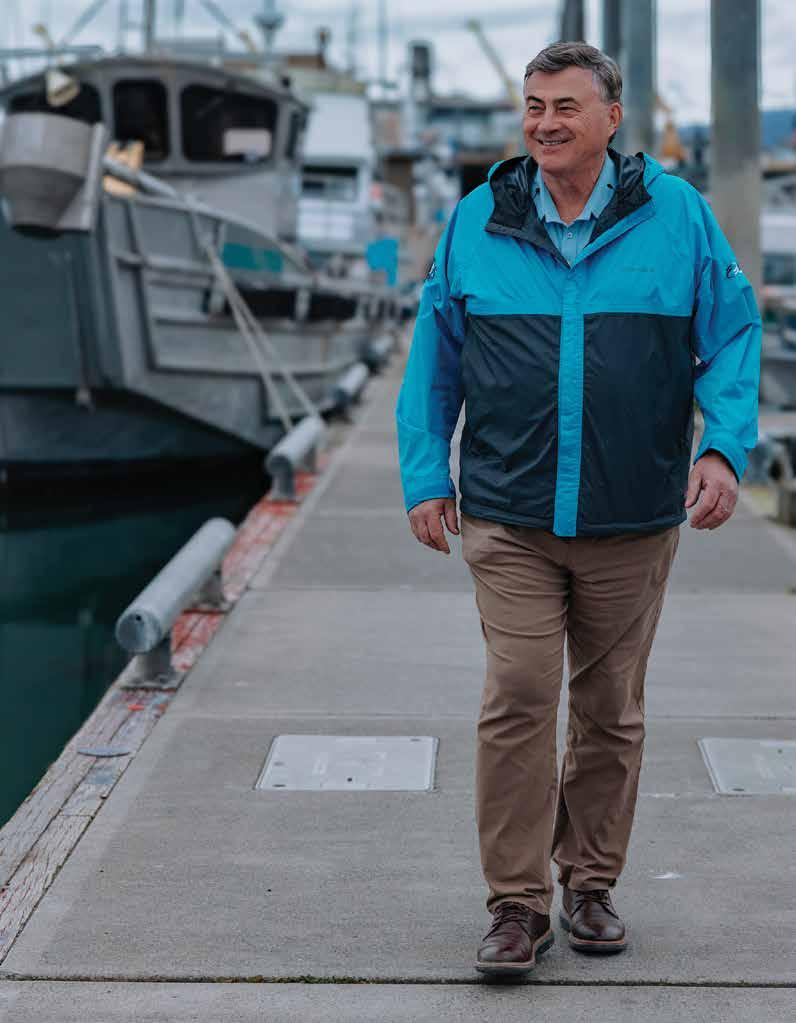
by
Photos
Misty Kincaid
John Hendrix
There she was, perhaps the only 90-yearold woman ever to set foot on a Cook Inlet offshore platform. John Hendrix brought his mother to his workplace last year, and he wishes more Alaskans could see the “invisible economy” of oil and gas.
“If we were spending $52 million in downtown Kenai or Anchorage, it’d be a couple big structures,” Hendrix posits. “But if you spend in the middle of Cook Inlet or the North Slope, no one sees it except a very small population.”
Hendrix is a population of one, the only CEO of an Alaskan-owned gas explorer, ever since his HEX acquired Furie Operating Alaska in 2019. To cultivate more peers, he’s leading by example. “We have a lot of nonAlaskans taking a lot of risk, so I think it’d be good to help and mentor other Alaskans wanting to get into this world.”
Alaska Business: What’s your favorite local restaurant?
John Hendrix: For a Homer guy, it’s probably The Twisted Goat… In Anchorage, it’s probably the Rustic Goat [no relation].
AB: Dead or alive, who would you like to see perform live in concert?
Hendrix: The Rolling Stones.
AB: What charity or cause are you passionate about?
Hendrix: Boys and Girls Club, the Senior Center (which we host every year for a fundraiser), and the Boone and
Crockett Club, North America’s oldest conservation club, founded in 1887 by Teddy Roosevelt.
AB: Is there a skill you’re currently developing or have always wanted to learn?
Hendrix: I have a nice grand piano at the house, and it’s a shame I can’t play it.
AB: What’s your greatest extravagance?
Hendrix: Going to a ball in front of the Sphinx and pyramids… I did it multiple times when I was working in Egypt.
AB: What are you superstitious about?
Hendrix: I don’t like black cats walking across me at night.
AB: What’s the most daring thing you’ve ever done?
Hendrix: I jumped out of a plane when I was 18… I almost lost my college scholarship doing it… I didn’t know it was against the rules.
AB: What’s your best attribute and worst attribute?
Hendrix: I believe you can do anything if you put your effort and your dedication into it, and sometimes that drive gets me into trouble.

ADVERTISERS INDEX
3-Tier Alaska 129 3tieralaska.com
Ahtna, Inc. ................................ 49 ahtna.com
Airport Equipment Rentals 143 airportequipmentrentals.com
Alaska Dreams Inc 115 alaskadreamsinc.com
Alaska Materials 95 alaskamaterials.com
Alaska Mergers & Acquisitions, LLC ..................... 117
Alaska Oil & Gas Association 89 aoga.org
Alaska Pacific University ............ 20 alaskapacific.edu
Alaska Railroad ....................... 117 akrr.com
Alaska School Activities Association............................... 13 asaa.org
American Heart Association..... 107 heart.org
Anchorage Convention Centers .................................. 103 anchorageconventioncenters.com
Anchorage Sand & Gravel 35 anchsand.com
Arctic Slope Regional Corporation .............................. 45 asrc.com
ASRC Energy Services, LLC 77 asrcenergy.com
Ballard Spahr LLP 51 ballardspahr.com/offices/anchorage
Birch Horton Bittner & Cherot .... 53 birchhorton.com
Cascadia Cross Border Law Group LLC 57 cascadialawalaska.com
Chicklo Law Group .................... 55 chicklolaw.com
CIRI ......................................... 59 ciri.com
ConocoPhillips Alaska 85 alaska.conocophillips.com
Conrad-Houston Insurance Agency 20 chialaska.com
Construction Machinery Industrial 2 cmiak.com
Cook Inlet Tug & Barge Inc 97 cookinlettug.com
Craig Taylor Equipment 87 craigtaylorequipment.com
Crowley Fuels ........................... 27 crowley.com
Cruz Companies 71 cruzconstruct.com
Culmination Machine Works 83 cmw907.com
Davis Wright Tremaine Llp 43 dwt.com
Denali Commercial .................. 111 denalicommercial.com
Denali Universal Services 68 denaliuniversal.com/
DesertAir Alaska 123 desertairalaska.com
Design Alaska 103 designalaska.com
Dorsey & Whitney LLP ............... 39 dorsey.com/locations/anchorage
DXP/Alaska Pump & Supply 67 alaskapump.com
Fairbanks Economic Development Corporation/Alaska Defense Forum ........................... 7 alaskadefenseforum.com
First National Bank Alaska ........... 5 fnbalaska.com
Frampton Opinsky, LLC 41 officeak.com
Gana-A' Yoo Ltd 55 ganaayoo.com
Global Credit Union ................... 11 globalcu.org
Greer Tank................................ 95 greertank.com
Highmark Marine Fabrication, LLC 79 highmarkmarine.com
IMA Financial Group 61 imacorp.com
JDO Law ................................... 57 jdolaw.com
Koniag Inc 44 koniag.com
Landye Bennett Blumstein LLP 53 lbblawyers.com
LONG Building Technologies 99 long.com
Lynden ................................... 142 lynden.com
MT Housing Inc. 73 mthousing.net
MTA - Matanuska Telecom Association 125 mtasolutions.com
NANA Regional Corp ................. 38 nana.com
Nenana Heating Services, Inc..... 97 nenanaheatingservicesinc.com
NMS 67 nmsusa.com
Nortech Environmental & Engineering 80 nortechengr.com
North Star Behavioral Health System ................................... 121 northstarbehavioral.com
Northern Air Cargo 136, 137 nac.aero
Northrim Bank 101 northrim.com
Oxford Assaying & Refining Inc .. 29 oxfordmetals.com
PeopleAK ................................. 93 peopleak.com
PND Engineers Inc. 65 pndengineers.com
Port Mackenzie 112, 113 portmackenzie.matsugov.us
Resolve Marine ......................... 81 resolvemarine.com
RESPEC................................... 121 respec.com
Samson Tug & Barge 15 samsontug.com Santos 3 santos.com
Schwabe, Williamson & Wyatt, P.C. ................................. 37 schwabe.com
Sheet Metal Inc 74 sheetmetalinc.com
Sourdough Express, Inc.
T. Rowe Price .............................. 9 alaska529plan.com
Teamsters

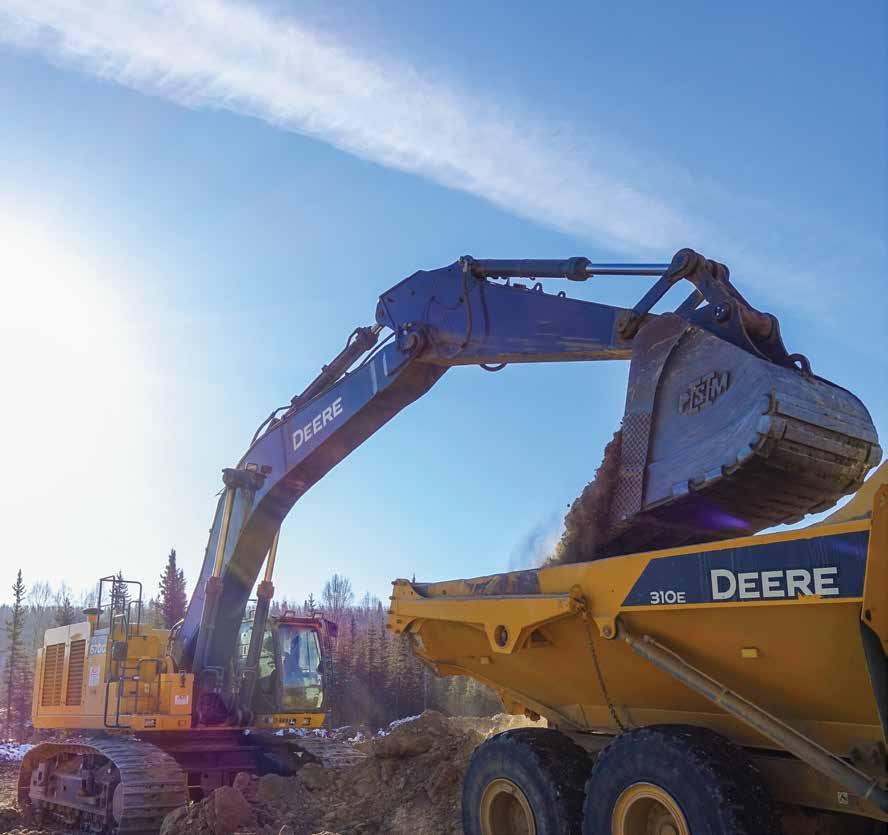




Your Alaska Connection


